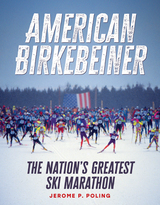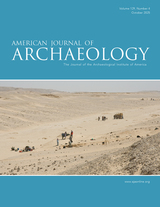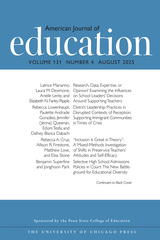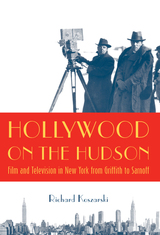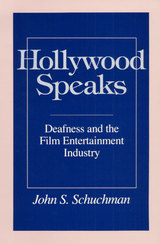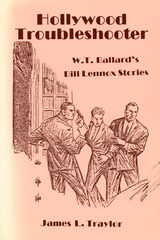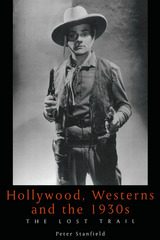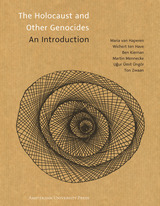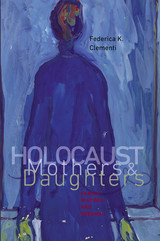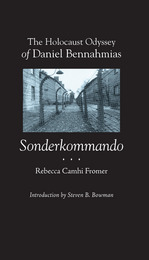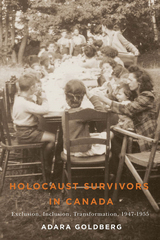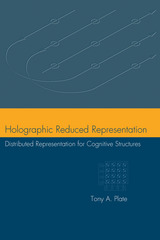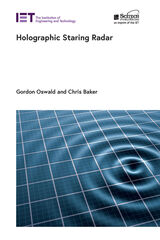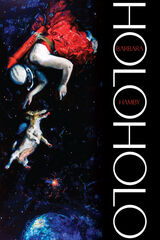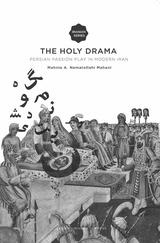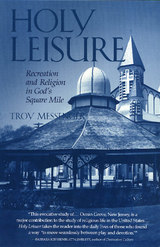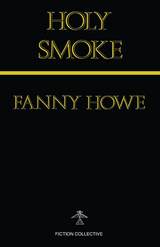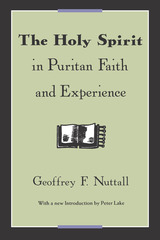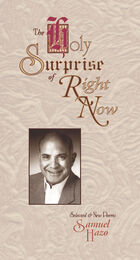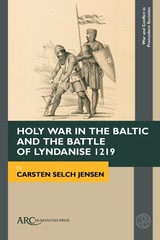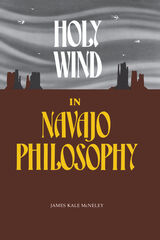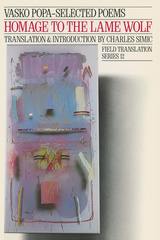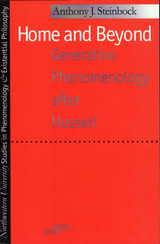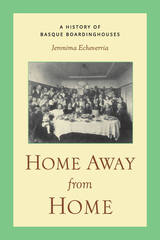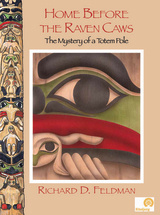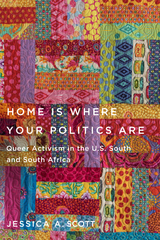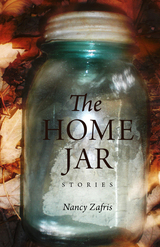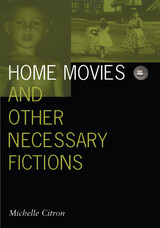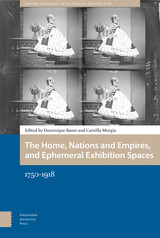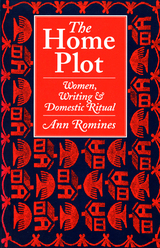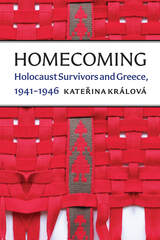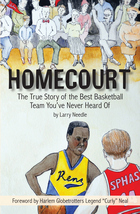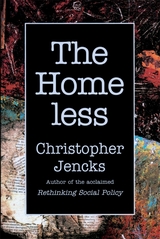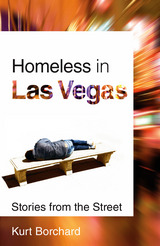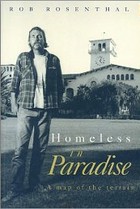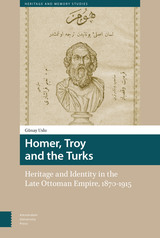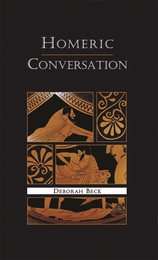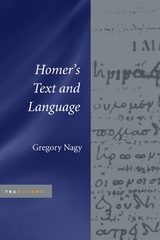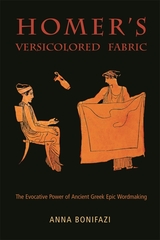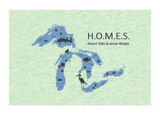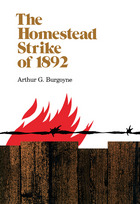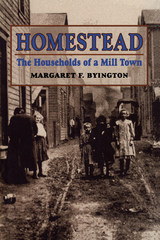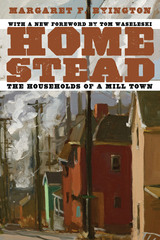Hollywood Notebook: Essays
Wendy C. Ortiz
Northwestern University Press, 2025 A cartography of Hollywood and transformational wanderings, back in print
A daylight traipse through early-aughts Los Angeles, Hollywood Notebook encapsulates the powerful feelings and hopeful futures of twentysomething Wendy C. Ortiz. In this boundary-defying sister memoir to Bruja, Ortiz navigates internal maps as she traverses external palm-treed streets, moving through her youthful twenties and into the pensiveness of her thirties. Peering at what lies ahead while dipping her toes into the past, Ortiz shows us that there is no place like Hollywood to unearth the joys of success and the blows of mistakes—both realized and denied. An innovative and bold examination of the daytime roaming mind, Hollywood Notebook is a cartography of love, loss, and transformation in the face of a brilliant psyche in a vibrant city.
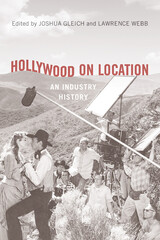 Hollywood on Location: An Industry History
Gleich, Joshua
Rutgers University Press, 2019 Location shooting has always been a vital counterpart to soundstage production, and at times, the primary form of Hollywood filmmaking. But until now, the industrial and artistic development of this production practice has been scattered across the margins of larger American film histories. Hollywood on Location is the first comprehensive history of location shooting in the American film industry, showing how this mode of filmmaking changed Hollywood business practices, production strategies, and visual style from the silent era to the present. The contributors explore how location filmmaking supplemented and later, supplanted production on the studio lots. Drawing on archival research and in-depth case studies, the seven contributors show how location shooting expanded the geography of American film production, from city streets and rural landscapes to far-flung territories overseas, invoking a new set of creative, financial, technical, and logistical challenges. Whereas studio filmmaking sought to recreate nature, location shooting sought to master it, finding new production values and production economies that reshaped Hollywood’s modus operandi.
Hollywood on the Hudson: Film and Television in New York from Griffith to Sarnoff
Koszarski, Richard
Rutgers University Press, 2008 In Hollywood on the Hudson, Richard Koszarski rewrites an important part of the history of American cinema. During the 1920s and 1930s, film industry executives had centralized the mass production of feature pictures in a series of gigantic film factories scattered across Southern California, while maintaining New York as the economic and administrative center. But as Koszarski reveals, many writers, producers, and directors also continued to work here, especially if their independent vision was too big for the Hollywood production line.
 Hollywood Outsiders: The Adaptation of the Film Industry, 1913-1934
Anne Morey
University of Minnesota Press, 2003 An innovative approach to the relationship between filmmaking and society during Hollywood’s golden age The 1910s and 1920s witnessed the inception of a particular brand of negotiation between filmdom and its public in the United States. Hollywood, its proponents, and its critics sought to establish new connections between audience and industry, suggesting means by which Hollywood outsiders could become insiders. Hollywood Outsiders looks at how four disparate entities—the Palmer Photoplay correspondence school of screenwriting, juvenile series fiction about youngsters involved in the film industry, film appreciation and character education programs for high school students, and Catholic and Protestant efforts to use and influence filmmaking—conceived of these connections, and thus of the relationship of Hollywood to the individual and society. Anne Morey’s exploration of the diverse discourses generated by these different conjunctions leads to a fresh and compelling interpretation of Hollywood’s place in American cultural history. In its analysis of how four distinct groups, each addressing constituencies of various ages and degrees of social authority, defined their interest in the film industry, Hollywood Outsiders combines concrete discussions of cultural politics with a broader argument about how outsiders viewed the film industry as a vehicle of self-validation and of democratic ideals.
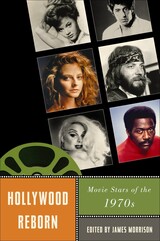 Hollywood Reborn: Movie Stars of the 1970s
Morrison, James
Rutgers University Press, 2010 Weary from the turbulent sixties, America entered the 1970s hoping for calm. Instead, the war in Vietnam and its troubled aftermath persisted, the Watergate scandal unfolded, and continuing social unrest at home and abroad provided the backdrop for the new decade. The scene was similar in Hollywood, as it experienced greater upheaval than at any point since the coming of sound. As the studio and star systems declined, actors had more power than ever, and because many had become fiercely politicized by the temper of the times, the movies they made were often more challenging than before. Thus, just when it might have faded out, Hollywood was reborn--but what was the nature of this rebirth?
Hollywood Reborn examines this question, with contributors focusing on many of the era's key figures — noteworthy actors such as Jane Fonda, Al Pacino, Faye Dunaway, and Warren Beatty, and unexpected artists, among them Donald Sutherland, Shelley Winters, and Divine. Each essay offers new perspectives through the lens of an important star, illuminating in the process some of the most fascinating and provocative films of the decade.
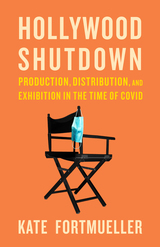 Hollywood Shutdown: Production, Distribution, and Exhibition in the Time of COVID
By Kate Fortmueller
University of Texas Press, 2021 By March 2020, the spread of COVID-19 had reached pandemic proportions, forcing widespread shutdowns across industries, including Hollywood. Studios, networks and production companies, and the thousands of workers who make film and television possible, were forced to adjust their time-honored business and labor practices. In this book, Kate Fortmueller asks what happened when the coronavirus closed Hollywood. Hollywood Shutdown examines how the COVID-19 pandemic affected film and television production, influenced trends in distribution, reshaped theatrical exhibition, and altered labor practices. From January movie theater closures in China to the bumpy September release of Mulan on the Disney+ streaming platform, Fortmueller probes various choices made by studios, networks, unions and guilds, distributors, and exhibitors during the evolving crisis. In seeking to explain what happened in the first nine months of 2020, this book also considers how the pandemic will transform Hollywood practices in the twenty-first century.
Hollywood Speaks: Deafness and the Film Entertainment Industry
John S. Schuchman
University of Illinois Press, 1988 "Hollywood Speaks is
a remarkable book. Schuchman's inquiry into how deafness has been treated in
movies provides us with yet another window onto social history in addition to
a fresh angle from which to view Hollywood. Moreover, he joins the ranks of
the few scholars who have made use of Hollywood studio archives."
-- Thomas Cripps, author of Slow Fade to Black: The Negro in American
Film, 1900-1942
Hollywood Troubleshooter: W. T. Ballard's Bill Lennox Stories
James L. Traylor
University of Wisconsin Press, 1985 This is the first collection of short stories by W.T. Ballard. This volume is just a sampling of Ballard's most famous character Bill Lennox, a selection for both the connoisseur of crime and the lover of good, fast-moving crime/adventure stories.
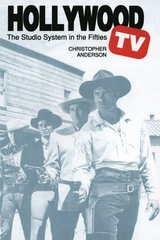 Hollywood TV: The Studio System in the Fifties
By Christopher Anderson
University of Texas Press, 1994 The 1950s was one of the most turbulent periods in the history of motion pictures and television. During the decade, as Hollywood's most powerful studios and independent producers shifted into TV production, TV replaced film as America's principal postwar culture industry. This pioneering study offers the first thorough exploration of the movie industry's shaping role in the development of television and its narrative forms. Drawing on the archives of Warner Bros. and David O. Selznick Productions and on interviews with participants in both industries, Christopher Anderson demonstrates how the episodic telefilm series, a clear descendant of the feature film, became and has remained the dominant narrative form in prime-time TV. This research suggests that the postwar motion picture industry was less an empire on the verge of ruin—as common wisdom has it—than one struggling under unsettling conditions to redefine its frontiers. Beyond the obvious contribution to film and television studies, these findings add an important chapter to the study of American popular culture of the postwar period.
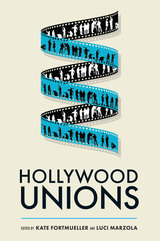 Hollywood Unions
Kate Fortmueller
Rutgers University Press, 2025 Hollywood Unions is a unique collection that tells the stories of the unions and guilds that have organized motion picture and television labor: IATSE, the DGA, SAG-AFTRA, and the WGA. The Hollywood unions represent a wide swath of the workers making media: from directors and stars to grips and makeup artists. People today know some of these organizations from their glitzy annual awards celebrations, but the unions’ actual importance is in bargaining with the Association of Motion Picture and Television Producers (AMPTP) on behalf of 331,000 workers in the motion picture and television industry. The Hollywood unions are not neutral institutions but rather have long histories of jurisdictional battles, competitions with rival unions, and industry-altering strikes. They have supported the industry’s workers through the Great Depression, World War II, the McCarthy era, the collapse of the studio system, the rise of television, runaway production, fights for gender parity, the digital revolution, and a global pandemic. The history of these unions has contributed to making media work sustainable in the long term and helped shape the conditions and production cultures of Hollywood.
 The Hollywood War Film: Critical Observations from World War I to Iraq
Daniel Binns
Intellect Books, 2017 Combining action, violence, and deeply conflicted emotions, war has always been a topic made for the big screen. In The Hollywood War Film, Daniel Binns considers how war has been depicted throughout the history of cinema. Looking at depictions of both World Wars, the Vietnam War, and the major conflicts in the Middle East, Binns reflects on representations of war and conflict, revealing how Hollywood has made the war film not just a genre, but a dynamic cultural phenomenon.
Looking closely at films such as All Quiet on the Western Front, Full Metal Jacket, and The Hurt Locker, Binns reveals the commonalities in Hollywood films despite the distinct conflicts and eras they represent, and he shows how contemporary war films closely echo earlier films in their nationalistic and idealistic depictions. Offering a trenchant analysis of some of the most important war films from the past century, this book will be of interest to anyone who has been captivated by how film has dealt with one of humanity’s most difficult, but far too common, realities.
Hollywood, Westerns And The 1930S: The Lost Trail
Peter Stanfield
University of Exeter Press, 2001
For the first time, this book tells the 'lost' story of the 1930s Western. Written from a concern to understand Western films primarily as products of Hollywood's studio system, it recovers the context in which Westerns were produced, exhibited and viewed in the 1930s. Peter Stanfield highlights the hitherto marginalised 'B' or 'series' Western, the significance of female audiences, the role of independent exhibitors and of censorship in shaping film production.
The book includes illustrations from the following films: Arizona, The Big Trail, Billy the Kid, Cimarron, Destry Rides Again, Dodge City, In Old Arizona, In Old Santa Fe, Jesse James, The Lash, Let Freedom Ring, Oh, Susanna!, Oklahoma Kid, The Plainsman, Ramona, Santa Fe Trail, Stand Up and Fight, Three Godfathers, Trail of the Lonesome Pine, Tumbling Tumbleweeds, Union Pacific, Virginia City, The Virginian, and The Westerner.
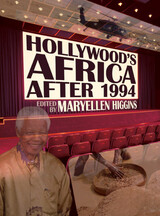 Hollywood’s Africa after 1994
MaryEllen Higgins
Ohio University Press, 2012 Hollywood’s Africa after 1994 investigates Hollywood’s colonial film legacy in the postapartheid era, and contemplates what has changed in the West’s representations of Africa. How do we read twenty-first-century projections of human rights issues—child soldiers, genocide, the exploitation of the poor by multinational corporations, dictatorial rule, truth and reconciliation—within the contexts of celebrity humanitarianism, “new” military humanitarianism, and Western support for regime change in Africa and beyond? A number of films after 1994, such as Black Hawk Down, Hotel Rwanda, Blood Diamond, The Last King of Scotland, The Constant Gardener, Shake Hands with the Devil, Tears of the Sun, and District 9, construct explicit and implicit arguments about the effects of Western intervention in Africa. Do the emphases on human rights in the films offer a poignant expression of our shared humanity? Do they echo the colonial tropes of former “civilizing missions?” Or do human rights violations operate as yet another mine of sensational images for Hollywood’s spectacular storytelling? The volume provides analyses by academics and activists in the fields of African studies, English, film and media studies, international relations, and sociology across continents. This thoughtful and highly engaging book is a valuable resource for those who seek new and varied approaches to films about Africa. Contributors
Harry Garuba and Natasha Himmelman
Margaret R. Higonnet, with Ethel R. Higgonet
Joyce B. Ashuntantang
Kenneth W. Harrow
Christopher Odhiambo
Ricardo Guthrie
Clifford T. Manlove
Earl Conteh-Morgan
Bennetta Jules-Rosette, J. R. Osborn, and Lea Marie Ruiz-Ade
Christopher Garland
Kimberly Nichele Brown
Jane Bryce
Iyunolu Osagie
Dayna Oscherwitz
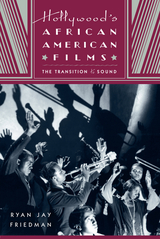 Hollywood's African American Films: The Transition to Sound
Ryan Friedman
Rutgers University Press, 2011 In 1929 and 1930, during the Hollywood studios' conversion to synchronized-sound film production, white-controlled trade magazines and African American newspapers celebrated a "vogue" for "Negro films." "Hollywood's African American Films" argues that the movie business turned to black musical performance to both resolve technological and aesthetic problems introduced by the medium of "talking pictures" and, at the same time, to appeal to the white "Broadway" audience that patronized their most lucrative first-run theaters. Capitalizing on highbrow associations with white "slumming" in African American cabarets and on the cultural linkage between popular black musical styles and "natural" acoustics, studios produced a series of African American-cast and white-cast films featuring African American sequences. Ryan Jay Friedman asserts that these transitional films reflect contradictions within prevailing racial ideologies--arising most clearly in the movies' treatment of African American characters' decisions to migrate. Regardless of how the films represent these choices, they all prompt elaborate visual and narrative structures of containment that tend to highlight rather than suppress historical tensions surrounding African American social mobility, Jim Crow codes, and white exploitation of black labor.
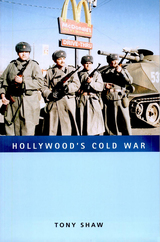 Hollywood's Cold War
Tony Shaw
University of Massachusetts Press, 2007 At a moment when American film reflects a deepening preoccupation with the Bush administration's War on Terror, this authoritative and timely book offers the first comprehensive account of Hollywood's propaganda role during the defining ideological conflict of the twentieth century: the Cold War. In an analysis of films dating from America's first Red Scare in the wake of the 1917 Bolshevik Revolution to the collapse of the Berlin Wall in 1989, Tony Shaw examines the complex relationship between filmmakers, censors, politicians, and government propagandists. Movies, Shaw demonstrates, were at the center of the Cold War's battle for hearts and minds. Hollywood's comedies, love stories, musicals, thrillers, documentaries, and science fiction shockers played a critical dual role: on the one hand teaching millions of Americans why communism represented the greatest threat their country had ever faced, and on the other selling America's liberal-capitalist ideas around the globe. Drawing on declassified government documents, studio archives, and filmmakers' private papers, Shaw reveals the different ways in which cinematic propaganda was produced, disseminated, and received by audiences during the Cold War. In the process, he addresses subjects as diverse as women's fashions, McCarthyism, drug smuggling, Christianity, and American cultural diplomacy in India. Anyone seeking to understand wartime propaganda today will find striking contemporary resonance in his conclusions about Hollywood's versatility and power.
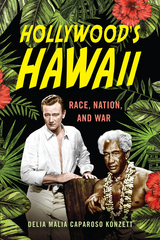 Hollywood's Hawaii: Race, Nation, and War
Delia Malia Caparoso Konzett
Rutgers University Press, 2017 Whether presented as exotic fantasy, a strategic location during World War II, or a site combining postwar leisure with military culture, Hawaii and the South Pacific figure prominently in the U.S. national imagination. Hollywood’s Hawaii is the first full-length study of the film industry’s intense engagement with the Pacific region from 1898 to the present.
Delia Malia Caparoso Konzett highlights films that mirror the cultural and political climate of the country over more than a century—from the era of U.S. imperialism on through Jim Crow racial segregation, the attack on Pearl Harbor and WWII, the civil rights movement, the contemporary articulation of consumer and leisure culture, as well as the buildup of the modern military industrial complex. Focusing on important cultural questions pertaining to race, nationhood, and war, Konzett offers a unique view of Hollywood film history produced about the national periphery for mainland U.S. audiences. Hollywood’s Hawaii presents a history of cinema that examines Hawaii and the Pacific and its representations in film in the context of colonialism, war, Orientalism, occupation, military buildup, and entertainment.
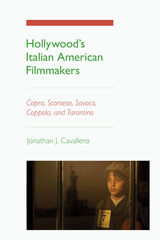 Hollywood's Italian American Filmmakers: Capra, Scorsese, Savoca, Coppola, and Tarantino
Jonathan J. Cavallero
University of Illinois Press, 2011 Hollywood's Italian American Filmmakers explores the different ways in which Italian American directors from the 1920s to the present have responded to their ethnicity. While some directors have used film to declare their ethnic roots and create an Italian American "imagined community," others have ignored or even denied their background. Jonathan J. Cavallero examines the films of Frank Capra, Martin Scorsese, Nancy Savoca, Francis Ford Coppola, and Quentin Tarantino with a focus on what the films reveal about each director's view on Italian American identities. Whereas Capra's films highlight similarities between immigrant characters and WASP Americans, Scorsese accepts his ethnic heritage but also sees it as confining. Similarly, many of Coppola's films provide a nostalgic treatment of Italian American identity, but with little criticism of the culture's more negative aspects. And while Savoca's movies reveal her artful ability to recognize how ethnic, gender, and class identities overlap, Tarantino's films exhibit a playfully postmodern engagement with Italian American ethnicity. Cavallero's exploration of the films of Capra, Scorsese, Savoca, Coppola, and Tarantino demonstrates how immigrant Italians fought prejudice, how later generations positioned themselves in relation to their predecessors, and how the American cinema, usually seen as a cultural institution that works to assimilate, has also served as a forum where assimilation was resisted.
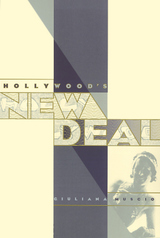 Hollywood's New Deal
Giuliana Muscio
Temple University Press, 1997 Despite the economic hardship of the thirties, people flocked to the movies in unprecedented numbers. At the same time, the Roosevelt Administration was trying to implement the New Deal and increase the influence and power of the federal government. Weaving together film and political history, Giuliana Muscio traces the connections between Depression Era Hollywood and the popularity of FDR, asserting that politics transformed its public into spectators while the movie industry transformed its spectators into a public. Hollywood's New Deal reveals the ways in which this reciprocal relationship between politics and film evolved into a strategic effort to stabilize a nation in the clutches of economic unrest by creating a unified American consciousness through national cinema. Muscio analyzes such regulatory practices as the Hays Code, and the government's scrutinizing of monopolistic practices such as block booking and major studio ownership of movie theaters. Hollywood's New Deal, focusing on the management and structure of the film industry, delves deep into the Paramount case, detailing the behind-the-scenes negotiations and the public statements that ended with film industry leaders agreeing to self regulate and to eliminate monopolistic practices. Hollywood's acquiescence and the government's retreat from antitrust action show that they had found a mutually beneficial way of preserving their own spheres of power and influence. This book is indispensable for understanding the growth of the film industry and the increasing political importance of mass media. In the series Culture and the Moving Image, edited by Robert Sklar.
 Hollywood's Road to Riches
David Waterman
Harvard University Press, 2005 Out-of-control costs. Box office bombs that should have been foreseen. A mania for sequels at the expense of innovation. Blockbusters of ever-diminishing merit. What other industry could continue like this--and succeed as spectacularly as Hollywood has? The American movie industry's extraordinary success at home and abroad--in the face of dire threats from broadcast television and a wealth of other entertainment media that have followed--is David Waterman's focus in this book, the first full-length economic study of the movie industry in over forty years.
Combining historical and economic analysis, Hollywood's Road to Riches shows how, beginning in the 1950s, a largely predictable business has been transformed into a volatile and complex multimedia enterprise now commanding over 80 percent of the world's film business. At the same time, the book asks how the economic forces leading to this success--the forces of audience demand, technology, and high risk--have combined to change the kinds of movies Hollywood produces.
Waterman argues that the movie studios have multiplied their revenues by effectively using pay television and home video media to extract the maximum amounts that individual consumers are willing to pay to watch the same movies in different venues. Along the way, the Hollywood studios have masterfully handled piracy and other economic challenges to the multimedia system they use to distribute movies.
The author also looks ahead to what Internet file sharing and digital production and distribution technologies might mean for Hollywood's prosperity, as well as for the quality and variety of the movies it makes.
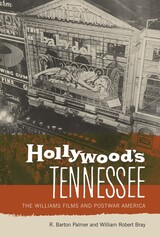 Hollywood's Tennessee: The Williams Films and Postwar America
By R. Barton Palmer and William Robert Bray
University of Texas Press, 2009 No American dramatist has had more plays adapted than Tennessee Williams, and few modern dramatists have witnessed as much controversy during the adaptation process. His Hollywood legacy, captured in such screen adaptations as A Streetcar Named Desire, Cat on a Hot Tin Roof, and Suddenly, Last Summer, reflects the sea change in American culture in the mid-twentieth century. Placing this body of work within relevant contexts ranging from gender and sexuality to censorship, modernism, art cinema, and the Southern Renaissance, Hollywood's Tennessee draws on rarely examined archival research to recast Williams's significance. Providing not only cultural context, the authors also bring to light the details of the arduous screenwriting process Williams experienced, with special emphasis on the Production Code Administration—the powerful censorship office that drew high-profile criticism during the 1950s—and Williams's innovative efforts to bend the code. Going well beyond the scripts themselves, Hollywood's Tennessee showcases findings culled from poster and billboard art, pressbooks, and other production and advertising material. The result is a sweeping account of how Williams's adapted plays were crafted, marketed, and received, as well as the lasting implications of this history for commercial filmmakers and their audiences.
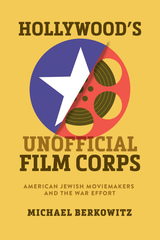 Hollywood's Unofficial Film Corps: American Jewish Moviemakers and the War Effort
Michael Berkowitz
University of Wisconsin Press, 2025 It has long been known that Hollywood was actively involved in shaping US public opinion during World War II. Less well-documented are the ways in which Washington sought to work behind the scenes, subtly obliterating the boundaries between “studio” and “government” films. Michael Berkowitz studies the contributions of humorist and best-selling author Leo Rosten (The Joys of Yiddish, The Education of H*Y*M*A*N* K*A*P*L*A*N) and writer, producer, and screenwriter Budd Schulberg (On the Waterfront, A Face in the Crowd) in order to examine the elusive story of Jewish Hollywood’s role in World War II.
Hollywood’s Unofficial Film Corps shows that Rosten, Schulberg, and others—including Garson Kanin, George Cukor, Stanley Kramer, and Jules Buck—created movies that were both entertaining and politically expeditious for US war aims. At the same time, in an effort to unify the American public, they avoided focusing on the fate of European Jews, even while addressing racism and antisemitism in the United States. Jewish themes were often downplayed, and Jewish directors, writers, and other contributors frequently went uncredited. As Berkowitz writes, “Rosten’s cohort changed feature films forever.” Thanks to his research, we now have a better understanding of how and why.
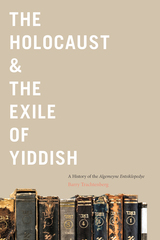 The Holocaust & the Exile of Yiddish: A History of the Algemeyne Entsiklopedye
Barry Trachtenberg
Rutgers University Press, 2022 In the early 1930s in Berlin, Germany, a group of leading Eastern European Jewish intellectuals embarked upon a project to transform the lives of millions of Yiddish-speaking Jews around the world. Their goal was to publish a popular and comprehensive Yiddish language encyclopedia of general knowledge that would serve as a bridge to the modern world and as a guide to help its readers navigate their way within it. However, soon after the Algemeyne entsiklopedye (General Encyclopedia) was announced, Hitler’s rise to power forced its editors to flee to Paris. The scope and mission of the project repeatedly changed before its final volumes were published in New York City in 1966.
The Holocaust & the Exile of Yiddish untangles the complicated saga of the Algemeyne entsiklopedye and its editors. The editors continued to publish volumes and revise the encyclopedia’s mission while their primary audience, Eastern European Jews, faced persecution and genocide under Nazi rule, and the challenge of reestablishing themselves in the first decades after World War II. Historian Barry Trachtenberg reveals how, over the course of the middle decades of the twentieth century, the project sparked tremendous controversy in Jewish cultural and political circles, which debated what the purpose of a Yiddish encyclopedia should be, as well as what knowledge and perspectives it should contain. Nevertheless, this is not only a story about destruction and trauma, but also one of tenacity and continuity, as the encyclopedia’s compilers strove to preserve the heritage of Yiddish culture, to document its near-total extermination in the Holocaust, and to chart its path into the future.
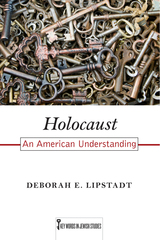 Holocaust: An American Understanding
Lipstadt, Deborah E
Rutgers University Press, 2016 Immediately after World War II, there was little discussion of the Holocaust, but today the word has grown into a potent political and moral symbol, recognized by all. In Holocaust: An American Understanding, renowned historian Deborah E. Lipstadt explores this striking evolution in Holocaust consciousness, revealing how a broad array of Americans—from students in middle schools to presidents of the United States—tried to make sense of this inexplicable disaster, and how they came to use the Holocaust as a lens to interpret their own history. Lipstadt weaves a powerful narrative that touches on events as varied as the civil rights movement, Vietnam, Stonewall, and the women’s movement, as well as controversies over Bitburg, the Rwandan genocide, and the bombing of Kosovo. Drawing upon extensive research on politics, popular culture, student protests, religious debates and various strains of Zionist ideologies, Lipstadt traces how the Holocaust became integral to the fabric of American life. Even popular culture, including such films as Dr. Strangelove and such books as John Hershey’s The Wall, was influenced by and in turn influenced thinking about the Holocaust. Equally important, the book shows how Americans used the Holocaust to make sense of what was happening in the United States. Many Americans saw the civil rights movement in light of Nazi oppression, for example, while others feared that American soldiers in Vietnam were destroying a people identified by the government as the enemy. Lipstadt demonstrates that the Holocaust became not just a tragedy to be understood but also a tool for interpreting America and its place in the world. Ultimately Holocaust: An American Understanding tells us as much about America in the years since the end of World War II as it does about the Holocaust itself.
 Holocaust And Memory In The Global Age
Daniel Levy
Temple University Press, 2005 Can collective memories of the past shape the future? If one of the fears about a globalized society is the homogenization of culture, can it nevertheless be true that the homogenization of memory might have a positive impact on political and cultural norms?
Originally published in Germany, The Holocaust and Memory in the Global Age examines the nature of collective memory in a globalized world, and how the memory of one particular event—the Holocaust—helped give rise to an emerging global consensus on human rights.
Daniel Levy and Natan Sznaider show how memories of the Holocaust have been de-contextualized from the original event and offer a framework for interpreting contemporary acts of injustice such as ethnic cleansing and genocide. Representations of mass atrocities in Bosnia and Kosovo during the 1990s resonated with iconographies of the Holocaust and played a significant role in the political and military interventions in the Balkans. Subsequently, these representations have had a crucial impact on the consolidation of international human rights and related issues of transitional justice, reparations, and restitution.
The Holocaust and Other Genocides: An Introduction
Edited by Maria van Haperen et al
Amsterdam University Press, 2012 After the unthinkable horrors of the Holocaust, the United Nations signed the Genocide Convention in 1948. Although this convention aimed for the prevention of genocide in the future, large-scale mass murder nonetheless returned in Rwanda and Cambodia, among other nations. Genocide is incredibly difficult to fight, as its causes are complex and deeply rooted, but international courts and tribunals have begun to play an increasing role in bringing perpetrators to justice. This book offers concise information about five twentieth-century cases of genocide, while analyzing overarching issues in international justice.
 The Holocaust and Other Genocides: History, Representation, Ethics
Helmut Walser Smith
Vanderbilt University Press, 2002 The Nazi genocide of the Jews, while unique in some ways, was not the only genocide of the twentieth century. This innovative book, the product of a year-long collaboration of scholars from many disciplines, is the first curriculum to systematically tie the teaching of the Holocaust to an analysis of the genocides in Armenia, Bosnia and Kosovo, and Rwanda.
The book consists of five parts: introduction; history of the Holocaust; representations of the Holocaust in literature, film, and the arts; other genocides; and ethics. The curriculum, shaped with feedback from those who teach Holocaust studies, consists mainly of primary documents and their analysis. Each section includes a general introduction to a body of knowledge that reflects current research and detailed introductions to particular documents. Throughout the book, there are provocative discussion questions and suggestions for further reading and other resources. Each section features "links" to other parts to encourage interdisciplinary reflection. The final section on ethics addresses the difficult questions raised by genocide.
The Holocaust and Other Genocides is designed as a model for flexible, innovative teaching about this complex subject. It is also a sophisticated, interdisciplinary effort to create the conditions for discussing and understanding the genocides of the twentieth century.
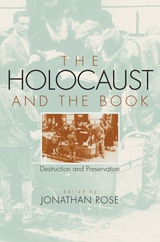 The Holocaust and the Book: Destruction and Preservation
Jonathan Rose
University of Massachusetts Press, 2001 Between 1933 and 1945, Nazi Germany systematically destroyed an estimated 100 million books throughout occupied Europe, an act that was inextricably bound up with the murder of 6 million Jews. By burning and looting libraries and censoring "un-German" publications, the Nazis aimed to eradicate all traces of Jewish culture along with the Jewish people themselves.
The Holocaust and the Book examines this bleak chapter in the history of printing, reading, censorship, and libraries. Topics include the development of Nazi censorship policies, the celebrated library of the Vilna ghetto, the confiscation of books from the Sephardic communities in Rome and Salonika, the experience of reading in the ghettos and concentration camps, the rescue of Polish incunabula, the uses of fine printing by the Dutch underground, and the suppression of Jewish books and authors in the Soviet Union. Several authors discuss the continuing relevance of Nazi book burnings to the present day, with essays on German responses to Friedrich Nietzsche and the destruction of Bosnian libraries in the 1990s.
The collection also includes eyewitness accounts by Holocaust survivors and a translation of Herman Kruk's report on the Vilna ghetto library. An annotated bibliography offers readers a concise guide to research in this growing field.
The Holocaust and the Historians
Lucy S. Dawidowicz
Harvard University Press, 1981 The renowned author of The War Against the Jews sets out to solve a historiographical mystery. Why has the mass murder of European Jews been overlooked or trivialized by historians throughout the world? In a forceful, outspoken work, Lucy Dawidowicz looks for explanations.
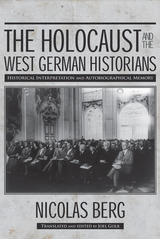 The Holocaust and the West German Historians: Historical Interpretation and Autobiographical Memory
Nicolas Berg, Translated and edited by Joel Golb
University of Wisconsin Press, 2015 This landmark book was first published in Germany, provoking both acclaim and controversy. In this "history of historiography," Nicolas Berg addresses the work of German and German-Jewish historians in the first three decades of post–World War II Germany. He examines how they perceived—and failed to perceive—the Holocaust and how they interpreted and misinterpreted that historical fact using an arsenal of terms and concepts, arguments and explanations.
This English-language translation is also a shortened and reorganized edition, which includes a new introduction by Berg reviewing and commenting on the response to the German editions. Notably, in this American edition, discussion of historian Joseph Wulf and his colleague and fellow Holocaust survivor Léon Poliakov has been united in one chapter. And special care has been taken to make clear to English speakers the questions raised about German historiographical writing. Translator Joel Golb comments, "From 1945 to the present, the way historians have approached the Holocaust has posed deep-reaching problems regarding choice of language. . . . This book is consequently as much about language as it is about facts."
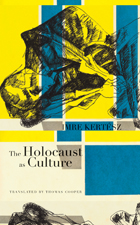 The Holocaust as Culture
Imre Kertész
Seagull Books, 2011 Hungarian Imre Kertész was awarded the Nobel Prize in Literature in 2002 for “writing that upholds the fragile experience of the individual against the barbaric arbitrariness of history.” His conversation with literary historian Thomas Cooper that is presented here speaks specifically to this relationship between the personal and the historical. In The Holocaust as Culture,Kertész recalls his childhood in Buchenwald and Auschwitz and as a writer living under the so-called soft dictatorship of communist Hungary. Reflecting on his experiences of the Holocaust and the Soviet occupation of Hungary following World War II, Kertész likens the ideological machinery of National Socialism to the oppressive routines of life under communism. He also discusses the complex publication history of Fateless, his acclaimed novel about the experiences of a Hungarian child deported to Auschwitz, and the lack of interest with which it was initially met in Hungary due to its failure to conform to the communist government’s simplistic history of the relationship between Nazi occupiers and communist liberators. The underlying theme in the dialogue between Kertész and Cooper is the difficulty of mediating the past and creating models for interpreting history, and how this challenges ideas of self. The title The Holocaust as Culture is taken from that of a talk Kertész gave in Vienna for a symposium on the life and works of Jean Améry. That essay is included here, and it reflects on Améry’s fear that history would all too quickly forget the fates of the victims of the concentration camps. Combined with an introduction by Thomas Cooper, the thoughts gathered here reveal Kertész’s views on the lengthening shadow of the Holocaust as an ever-present part of the world’s cultural memory and his idea of the crucial functions of literature and art as the vessels of this memory.
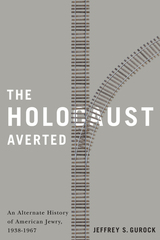 The Holocaust Averted: An Alternate History of American Jewry, 1938-1967
Gurock, Jeffrey S
Rutgers University Press, 2015 The increasingly popular genre of “alternative histories” has captivated audiences by asking questions like “what if the South had won the Civil War?” Such speculation can be instructive, heighten our interest in a topic, and shed light on accepted history. In The Holocaust Averted, Jeffrey Gurock imagines what might have happened to the Jewish community in the United States if the Holocaust had never occurred and forces readers to contemplate how the road to acceptance and empowerment for today’s American Jews could have been harder than it actually was.
Based on reasonable alternatives grounded in what is known of the time, places, and participants, Gurock presents a concise narrative of his imagined war-time saga and the events that followed Hitler’s military failures. While German Jews did suffer under Nazism, the millions of Jews in Eastern Europe survived and were able to maintain their communities. Since few people were concerned with the safety of European Jews, Zionism never became popular in the United States and social antisemitism kept Jews on the margins of society. By the late 1960s, American Jewish communities were far from vibrant.
This alternate history—where, among many scenarios, Hitler is assassinated, Japan does not bomb Pearl Harbor, and Franklin Delano Roosevelt is succeeded after two terms by Robert A. Taft—does cause us to review and better appreciate history. As Gurock tells his tale, he concludes every chapter with a short section that describes what actually happened and, thus, further educates the reader.
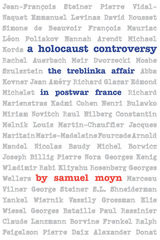 A Holocaust Controversy: The Treblinka Affair in Postwar France
Samuel Moyn
Brandeis University Press, 2005 How has the world come to focus on the Holocaust and why has it invariably done so in the heat of controversy, scandal, and polemics about the past? These questions are at the heart of this unique investigation of the Treblinka affair that occurred in France in 1966 when Jean-Francois Steiner, a young Jewish journalist, published Treblinka: The Revolt of an Extermination Camp. A cross between a history and a novel, Steiner’s book narrated the 1943 revolt at one of the major Nazi death camps. Abetted by a scandalous interview he gave, as well as Simone de Beauvoir’s glowing preface, the book shot to the top of the Parisian bestseller list and prompted a wide-ranging controversy in which both the well-known and the obscure were embroiled. Few had heard of Treblinka, or other death camps, before the affair. The validity of the difference between those killing centers and the larger network of concentration camps making up the universe of Nazi crime had to be fought out in public. The affair also bore on the frequently raised question of the Jews’ response to their dire straits. Moyn delves into events surrounding the publication of Steiner’s book and the subsequent furor. In the process, he sheds light on a few forgotten but thought-provoking months in French cultural history. Reconstructing the affair in detail, Moyn studies it as a paradigm-shifting controversy that helped change perceptions of the Holocaust in the French public and among French Jews in particular. Then Moyn follows the controversy beyond French borders to the other countries—especially Israel and the United States—where it resonated powerfully. Based on a complete reconstruction of the debate in the press (including Yiddish dailies) and on archives on three continents, Moyn’s study concludes with the response of the survivors of Treblinka to the controversy and reflects on its place in the longer history of Holocaust memory. Finally, Moyn revisits, in the context of a detailed case study, some of the theoretical controversies the genocide has provoked, including whether it is appropriate to draw universalistic lessons from the victimhood of particular groups.
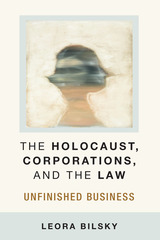 The Holocaust, Corporations, and the Law: Unfinished Business
Leora Bilsky
University of Michigan Press, 2017 The Holocaust, Corporations, and the Law explores the challenge posed by the Holocaust to legal and political thought by examining issues raised by the restitution class action suits brought against Swiss banks and German corporations before American federal courts in the 1990s. Although the suits were settled for unprecedented amounts of money, the defendants did not formally assume any legal responsibility. Thus, the lawsuits were bitterly criticized by lawyers for betraying justice and by historians for distorting history.
Leora Bilsky argues class action litigation and settlement offer a mode of accountability well suited to addressing the bureaucratic nature of business involvement in atrocities. Prior to these lawsuits, legal treatment of the Holocaust was dominated by criminal law and its individualistic assumptions, consistently failing to relate to the structural aspects of Nazi crimes. Engaging critically with contemporary debates about corporate responsibility for human rights violations and assumptions about “law,” she argues for the need to design processes that make multinational corporations accountable, and examines the implications for transitional justice, the relationship between law and history, and for community and representation in a post-national world. Her novel interpretation of the restitution lawsuits not only adds an important dimension to the study of Holocaust trials, but also makes an innovative contribution to broader and pressing contemporary legal and political debates. In an era when corporations are ever more powerful and international, Bilsky’s arguments will attract attention beyond those interested in the Holocaust and its long shadow.
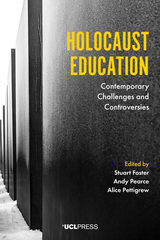 Holocaust Education: Contemporary Challenges and Controversies
Edited by Stuart Foster, Andy Pearce, and Alice Pettigrew
University College London, 2020 How do you teach children about the horrifying and systematic violence of the Holocaust? Especially when the very thing that makes it challenging—its intense and complex cruelty—also makes it so necessary to be taught?
Teaching and learning about the Holocaust is central to school curriculums across the globe. But the history of the Holocaust remains controversial and can render teaching it daunting, even to the most experienced instructors. Drawing on landmark research into teaching practices and students’ knowledge, Holocaust Education provides unique insights about classroom learning. It sheds light on key challenges in Holocaust education, including the impact of misconceptions and misinformation, the dilemma posed by images of atrocity, and how to approach teaching in ethnically diverse environments. Overviews of the most significant debates in Holocaust education provide wider context for the classroom evidence. Holocaust Education offers a vital guide, leading readers through some of the most vexed areas of Holocaust challenges and controversies for teachers, researchers, and policymakers.
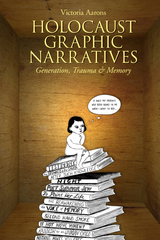 Holocaust Graphic Narratives: Generation, Trauma, and Memory
Victoria Aarons
Rutgers University Press, 2020 In Holocaust Graphic Narratives, Victoria Aarons demonstrates the range and fluidity of this richly figured genre. Employing memory as her controlling trope, Aarons analyzes the work of the graphic novelists and illustrators, making clear how they extend the traumatic narrative of the Holocaust into the present and, in doing so, give voice to survival in the wake of unrecoverable loss. In recreating moments of traumatic rupture, dislocation, and disequilibrium, these graphic narratives contribute to the evolving field of Holocaust representation and establish a new canon of visual memory. The intergenerational dialogue established by Aarons’ reading of these narratives speaks to the on-going obligation to bear witness to the Holocaust. Examined together, these intergenerational works bridge the erosions created by time and distance. As a genre of witnessing, these graphic stories, in retracing the traumatic tracks of memory, inscribe the weight of history on generations that follow.
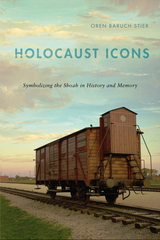 Holocaust Icons: Symbolizing the Shoah in History and Memory
Oren Baruch Stier
Rutgers University Press, 2015 The Holocaust has bequeathed to contemporary society a cultural lexicon of intensely powerful symbols, a vocabulary of remembrance that we draw on to comprehend the otherwise incomprehensible horror of the Shoah. Engagingly written and illustrated with more than forty black-and-white images, Holocaust Icons probes the history and memory of four of these symbolic relics left in the Holocaust’s wake.
Jewish studies scholar Oren Stier offers in this volume new insight into symbols and the symbol-making process, as he traces the lives and afterlives of certain remnants of the Holocaust and their ongoing impact. Stier focuses in particular on four icons: the railway cars that carried Jews to their deaths, symbolizing the mechanics of murder; the Arbeit Macht Frei (“work makes you free”) sign over the entrance to Auschwitz, pointing to the insidious logic of the camp system; the number six million that represents an approximation of the number of Jews killed as well as mass murder more generally; and the persona of Anne Frank, associated with victimization. Stier shows how and why these icons—an object, a phrase, a number, and a person—have come to stand in for the Holocaust: where they came from and how they have been used and reproduced; how they are presently at risk from a variety of threats such as commodification; and what the future holds for the memory of the Shoah.
In illuminating these icons of the Holocaust, Stier offers valuable new perspective on one of the defining events of the twentieth century. He helps readers understand not only the Holocaust but also the profound nature of historical memory itself.
 The Holocaust in Hungary: Seventy Years Later
Randolph L. Braham
Central European University Press, 2016 According to most historians, the Holocaust in Hungary represented a unique chapter in the singular history of what the Nazis termed as the “Final Solution” of the “Jewish question” in Europe. More than seventy years after the Shoah, the origins and prehistory as well as the implementation and aftermath of the genocide still provide ample ground for scholarship. In fact, Hungarian historians began to seriously deal with these questions only after the 1980s. Since then, however, a consistently active and productive debate has been waged about the history and interpretation of the Holocaust in Hungary and with the passage of time, more and more questions have been raised in connection with its memorialization. This volume includes twelve selected scholarly papers thematically organized under four headings: 1. The newest trends in the study of the Holocaust in Hungary. 2. The anti-Jewish policies of Hungary during the interwar period 3. The Holocaust era in Hungary 4. National and international aspects of Holocaust remembrance. The studies reflect on the anti-Jewish atmosphere in Hungary during the interwar period; analyze the decision-making process that led to the deportations, and the options left open to the Hungarian government. They also provide a detailed presentation of the Holocaust in Transylvania and describe the experience of Hungarian Jewish refugees in Austria after the end of the war.
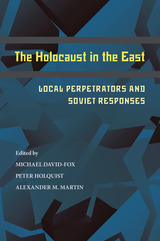 The Holocaust in the East: Local Perpetrators and Soviet Responses
Michael David-Fox
University of Pittsburgh Press, 2014 Silence has many causes: shame, embarrassment, ignorance, a desire to protect. The silence that has surrounded the atrocities committed against the Jewish population of Eastern Europe and the Soviet Union during World War II is particularly remarkable given the scholarly and popular interest in the war. It, too, has many causes—of which antisemitism, the most striking, is only one. When, on July 10, 1941, in the wake of the German invasion of the Soviet Union, local residents enflamed by Nazi propaganda murdered the entire Jewish population of Jedwabne, Poland, the ferocity of the attack horrified their fellow Poles. The denial of Polish involvement in the massacre lasted for decades.
Since its founding, the journal Kritika: Explorations in Russian and Eurasian History has led the way in exploring the East European and Soviet experience of the Holocaust. This volume combines revised articles from the journal and previously unpublished pieces to highlight the complex interactions of prejudice, power, and publicity. It offers a probing examination of the complicity of local populations in the mass murder of Jews perpetrated in areas such as Poland, Ukraine, Bessarabia, and northern Bukovina and analyzes Soviet responses to the Holocaust.
Based on Soviet commission reports, news media, and other archives, the contributors examine the factors that led certain local residents to participate in the extermination of their Jewish neighbors; the interaction of Nazi occupation regimes with various sectors of the local population; the ambiguities of Soviet press coverage, which at times reported and at times suppressed information about persecution specifically directed at the Jews; the extraordinary Soviet efforts to document and prosecute Nazi crimes and the way in which the Soviet state’s agenda informed that effort; and the lingering effects of silence about the true impact of the Holocaust on public memory and state responses.
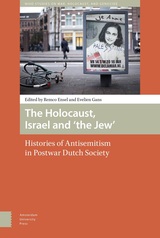 The Holocaust, Israel and 'the Jew': Histories of Antisemitism in Postwar Dutch Society
Edited by Remco Ensel and Evelien Gans
Amsterdam University Press, 2017 This book is the first comprehensive study of postwar antisemitism in the Netherlands. It focuses on the way stereotypes are passed on from one decade to the next, as reflected in public debates, the mass media, protests and commemorations, and everyday interactions. The Holocaust, Israel and 'the Jew' explores the ways in which old stories and phrases relating to 'the stereotypical Jew' are recycled and modified for new uses, linking the antisemitism of the early postwar years to its enduring manifestations in today's world.
The Dutch case is interesting because of the apparent contrast between the Netherlands' famous tradition of tolerance and the large numbers of Jews who were deported and murdered in the Second World War. The book sheds light on the dark side of this so-called 'Dutch paradox,' in manifestations of aversion and guilt after 1945. In this context, the abusive taunt 'They forgot to gas you' can be seen as the first radical expression of postwar antisemitism as well as an indication of how the Holocaust came to be turned against the Jews. The identification of 'the Jew' with the gas chamber spread from the streets to football stadiums, and from verbal abuse to pamphlet and protest. The slogan 'Hamas, Hamas all the Jews to the gas' indicates that Israel became a second marker of postwar antisemitism.
The chapters cover themes including soccer-related antisemitism, Jewish responses, philosemitism, antisemitism in Dutch-Moroccan and Dutch- Turkish communities, contentious acts of remembrance, the neo-Nazi tradition, and the legacy of Theo van Gogh. The book concludes with a lengthy epilogue on 'the Jew' in the politics of the radical right, the attacks in Paris in 2015, and the refugee crisis. The stereotype of 'the Jew' appears to be transferable to other minorities.
Also available as paperback!
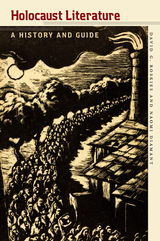 Holocaust Literature: A History and Guide
David G. Roskies and Naomi Diamant
Brandeis University Press, 2013 What is Holocaust literature? When does it begin and how is it changing? Is there an essential core that consists of diaries, eyewitness accounts of the concentration camps, and tales of individual survival? Is it the same everywhere: West and East, in Australia as in the Americas, in poetry as in prose? Is this literature sacred and separate, or can it be studied alongside other responses to catastrophe? What works of Holocaust literature will be read a hundred years from now—and why? Here, for the first time, is a historical survey of Holocaust literature in all genres, countries, and major languages. Beginning in wartime, it proceeds from the literature of mobilization and mourning in the Free World to the vast literature produced in Nazi-occupied ghettos, bunkers and places of hiding, transit and concentration camps. No less remarkable is the new memorial literature that begins to take shape within weeks and months of the liberation. Moving from Europe to Israel, the United States, and beyond, the authors situate the writings by real and proxy witnesses within three distinct postwar periods: “communal memory,” still internal and internecine; “provisional memory” in the 1960s and 1970s, when a self-conscious Holocaust genre is born; and “authorized memory,” in which we live today. Twenty book covers—first editions in their original languages—and a guide to the “first hundred books” show the multilingual scope, historical depth, and artistic range of this extraordinary body of writing.
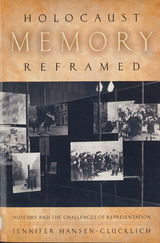 Holocaust Memory Reframed: Museums and the Challenges of Representation
Hansen-Glucklich, Jennifer
Rutgers University Press, 2014 Holocaust memorials and museums face a difficult task as their staffs strive to commemorate and document horror. On the one hand, the events museums represent are beyond most people’s experiences. At the same time they are often portrayed by theologians, artists, and philosophers in ways that are already known by the public. Museum administrators and curators have the challenging role of finding a creative way to present Holocaust exhibits to avoid clichéd or dehumanizing portrayals of victims and their suffering.
In Holocaust Memory Reframed, Jennifer Hansen-Glucklich examines representations in three museums: Israel’s Yad Vashem in Jerusalem, Germany’s Jewish Museum in Berlin, and the United States Holocaust Memorial Museum in Washington, D.C. She describes a variety of visually striking media, including architecture, photography exhibits, artifact displays, and video installations in order to explain the aesthetic techniques that the museums employ. As she interprets the exhibits, Hansen-Glucklich clarifies how museums communicate Holocaust narratives within the historical and cultural contexts specific to Germany, Israel, and the United States. In Yad Vashem, architect Moshe Safdie developed a narrative suited for Israel, rooted in a redemptive, Zionist story of homecoming to a place of mythic geography and renewal, in contrast to death and suffering in exile. In the Jewish Museum in Berlin, Daniel Libeskind’s architecture, broken lines, and voids emphasize absence. Here exhibits communicate a conflicted ideology, torn between the loss of a Jewish past and the country’s current multicultural ethos. The United States Holocaust Memorial Museum presents yet another lens, conveying through its exhibits a sense of sacrifice that is part of the civil values of American democracy, and trying to overcome geographic and temporal distance. One well-know example, the pile of thousands of shoes plundered from concentration camp victims encourages the visitor to bridge the gap between viewer and victim.
Hansen-Glucklich explores how each museum’s concept of the sacred shapes the design and choreography of visitors’ experiences within museum spaces. These spaces are sites of pilgrimage that can in turn lead to rites of passage.
Holocaust Mothers and Daughters: Family, History, and Trauma
Federica K. Clementi
Brandeis University Press, 2013 In this brave and original work, Federica Clementi focuses on the mother-daughter bond as depicted in six works by women who experienced the Holocaust, sometimes with their mothers, sometimes not. The daughters’ memoirs, which record the “all-too-human” qualities of those who were persecuted and murdered by the Nazis, show that the Holocaust cannot be used to neatly segregate lives into the categories of before and after. Clementi’s discussions of differences in social status, along with the persistence of antisemitism and patriarchal structures, support this point strongly, demonstrating the tenacity of trauma—individual, familial, and collective—among Jews in twentieth-century Europe.
The Holocaust Odyssey of Daniel Bennahmias, Sonderkommando
Rebecca Fromer
University of Alabama Press, 1993 A poignant reminder of the ways enslaved Jews and others were forced to destroy their families and fellow prisoners
In The Holocaust Odyssey, Rebecca Fromer leads us through the experiences of Danny Bennahmias, a Greek Jew of Italian citizenship whose forced labor as a Sonderkommando at Auschwitz included the disentangling of hundreds of thousands of gassed men, women, and children. The book is the result of a diligent collaboration. As it unfolds, it becomes a poignant reminder of the manner in which enslaved Jews and others were forced to destroy their families and fellow prisoners. It is a story of human decency, the spark of which remains against all odds.
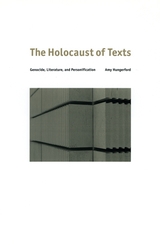 The Holocaust of Texts: Genocide, Literature, and Personification
Amy Hungerford
University of Chicago Press, 2002 Why do we so often speak of books as living, flourishing, and dying? And what is at stake when we do so? This habit of treating books as people, or personifying texts, is rampant in postwar American culture. In this bracing study, Amy Hungerford argues that such personification has become pivotal to our contemporary understanding of both literature and genocide. Personified texts, she contends, play a particularly powerful role in works where the systematic destruction of entire ethnic groups is at issue.
Hungerford examines the implications of conflating texts with people in a broad range of texts: Art Spiegelman's Maus; Ray Bradbury's Fahrenheit 451; the poetry of Sylvia Plath; Binjamin Wilkomirski's fake Holocaust memoir Fragments; and the fiction of Saul Bellow, Philip Roth, and Don DeLillo. She considers the ethical consequences of this trend in the work of recent and contemporary theorists and literary critics as well, including Cathy Caruth, Jacqueline Rose, Jacques Derrida, and Paul de Man. What she uncovers are fundamentally flawed ideas about representation that underwrite and thus undermine powerful and commonly accepted claims about literature and identity. According to Hungerford, the personification of texts is ethically corrosive and theoretically unsound. When we exalt the literary as personal and construe genocide as less a destruction of human life than of culture, we esteem memory over learning, short-circuit debates about cultural change, lend credence to the illusion or metaphysics of presence, and limit our conception of literature and its purpose.
Ultimately, The Holocaust of Texts asks us to think more deeply about the relationship between reading, experience, and memorialization. Why, for instance, is it more important to remember acts of genocide than simply to learn about them? If literary works are truly the bearers of ontology, then what must be our conduct toward them? Considering difficult questions such as these with fresh logic, Hungerford offers us an invigorating work, one that will not only interest scholars of American and postwar literature, but students of the Holocaust and critical theory as well.
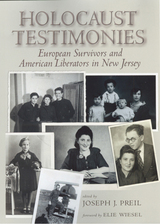 Holocaust Testimonies: European Survivors and American Liberators in New Jersey
Preil, Joseph J
Rutgers University Press, 2001 A project of the Holocaust Resource Center of Kean University, New Jersey, this book is a reference tool for teaching the Holocaust, for Holocaust survivors and their families, and for the general reader. Drawing on the center’s central missions is to produce and preserve a series of oral-history videotapes based on the personal experiences of Holocaust survivors who reside in New Jersey. Joseph J. Preil brings together the most compelling testimonies of 153 Holocaust survivors as well as twenty concentration-camp liberators. Through these riveting accounts, the book traces the mass murder of the Jews across Europe in a geographical as well as chronological order. The testimonies in each chapter are grouped by the witnesses’ country or region of origin, preceded by a brief introduction of the history of events in a particular area. In the last part of the book, American soldiers recount their impressions of being present at the liberation of the camps. “If you can imagine that the Jew to the German was like a cockroach. In the United States, if you step on a cockroach . . . it doesn’t mean anything to you. The same thing, exactly the same thing, the Jew was to the German—a cockroach. . . . One particular Shabbos (Sabbath), they shot twelve or thirteen people in my area. In other words, the German had the right, if he saw me, any Jew that he saw in the street, he could go over to you calmly, take out his revolver, and put it to your head, and shoot you down like a . . . roach. . . . It was a free-for-all.”—Testimony of Sol Einhorn, cited in Holocaust Testimonies: European Survivors and American Liberators in New Jersey
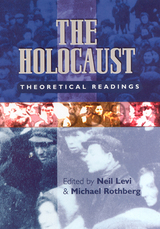 The Holocaust: Theoretical Readings
Levi, Neil
Rutgers University Press, 2003 The first anthology to address the relationship between the events of the Nazi genocide and the intellectual concerns of contemporary literary and cultural theory in one substantial and indispensable volume. This agenda-setting reader brings together both classic and new writings to demonstrate how concerns arising from the Nazi genocide shaped contemporary literary and cultural theory. Wide in its thematic scope, it covers such vital questions as:
- Authenticity and experience
- Memory and trauma
- Historiography and the philosophy of history
- Fascism and Nazi anti-Semitism
- Representation and identity formation
- Race, gender, and genocide
- Implications of the Holocaust for theories of the unconscious, ethics, politics, and aesthetics The readings, which are fully contextualized by a general introduction, section introductions, and bibliographical notes, represent the work of many influential writers and theorists, including Theodor Adorno, Giorgio Agamben, Hannah Arendt, Jean Baudrillard, Zygmunt Bauman, Walter Benjamin, Cathy Caruth, Jacques Derrida, Shoshana Felman, Saul Friedlander, Paul Gilroy, Lawrence Langer, Emmanuel Levinas, Primo Levi, Jean-François Lyotard, Hayden White, and James E. Young. This multidisciplinary anthology will be welcomed by students and scholars of the Holocaust.
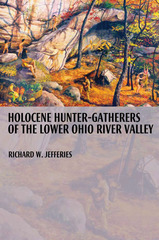 Holocene Hunter-Gatherers of the Lower Ohio River Valley
Richard Jefferies
University of Alabama Press, 2009 By the Early Holocene (10,000 to 8,000 B.P.), small wandering bands of Archaic hunter-gatherers began to annually follow the same hunting trails, basing their temporary camps on seasonal conditions and the presence of food. The Pleistocene glaciers had receded by this time, making food more plentiful in some areas and living conditions less hazardous. Although these Archaic peoples have long been known from their primary activities as hunters and gatherers of wild food resources, recent evidence has been found that indicates they also began rudimentary cultivation sometime during the Middle Holocene. Richard Jefferies—an Archaic specialist—comprehensively addresses the approximately 7,000 years of the prehistory of eastern North America, termed the Archaic Period by archaeologists. Jefferies centers his research on a 380-mile section of the Lower Ohio River Valley, an area rife with both temporary and long-term Archaic sites. He covers the duration of the Holocene and provides a compendium of knowledge of the era, including innovative research strategies and results. Presenting these data from a cultural-ecological perspective emphasizing the relationships between hunter-gatherers and the environments in which they lived, Jefferies integrates current research strategies with emerging theories that are beginning to look at culture history in creative ways
Holographic Reduced Representation: Distributed Representation for Cognitive Structures
Tony A. Plate
CSLI, 2003 While neuroscientists garner success in identifying brain regions and in analyzing individual neurons, ground is still being broken at the intermediate scale of understanding how neurons combine to encode information. This book proposes a method of representing information in a computer that would be suited for modeling the brain's methods of processing information.
Holographic Reduced Representations (HRRs) are introduced here to model how the brain distributes each piece of information among thousands of neurons. It had been previously thought that the grammatical structure of a language cannot be encoded practically in a distributed representation, but HRRs can overcome the problems of earlier proposals. Thus this work has implications for psychology, neuroscience, linguistics, and computer science, and engineering.
Holographic Staring Radar
Gordon Oswald
The Institution of Engineering and Technology, 2022 The development of radar has been one of the most successful direct applications of physics ever attempted, and then implemented and applied at large scale. Certain watchwords of radar engineering have underpinned many of the developments of the past 80 years and remain potential avenues for improvement. For example, 'Narrow beams are good', 'Fast detection is good', 'Agility is good', and 'Clutter is bad'. All these statements of merit are true. The underlying principles for all these statements are the laws of physics, and they provide support for current radar designs. However, each of these statements is really a design choice, rather than their necessary consequence.
Holoholo: Poems
Barbara Hamby
University of Pittsburgh Press, 2021 Holoholo is the Hawaiian word for walking out with no destination in mind. In the three sections of this book, Barbara Hamby walks out into the current American chaos with its inferno of wars, street violence, apocalyptic fantasies, and racial tension. Fueled by an American lingo that embraces slang, Yiddish, street talk, and the yearning to be able to describe her moment in time, these poems encompass the complicated past, difficult present, and unknown future. Every foray offers a glimpse of the world constructed from one woman’s collage of consciousness.
 Holon: A Lower Paleolithic Site in Israel
Michael Chazan
Harvard University Press, 2007 Excavations at the open-air site of Holon, Israel, have provided a unique perspective on hominin behavior, technology, and subsistence strategies in the Middle East at the end of the Lower Paleolithic. This excavation, carried out by Tamar Noy between 1963 and 1970, was one of the first successful salvage projects in the region. This ASPR volume is the first integrated monograph on a Lower Paleolithic site to be published from the region. It brings together the results of interdisciplinary research on the site of Holon—geology, dating, archaeology, paleontology, taphonomy, and spatial analysis—by a team of leading international researchers. The results are synthesized to address fundamental questions of human evolution, including whether early hominins hunted or scavenged very large animals, and the nature of culture change in the Lower Paleolithic. The lithic analysis documents the final stage of the Lower Paleolithic before the transition to Middle Paleolithic technology. This book will be an essential point of reference for students and specialists working in the archaeology of human evolution, as well as all archaeologists working in the region of the Levant.
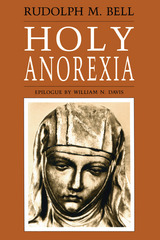 Holy Anorexia
Rudolph M. Bell
University of Chicago Press, 1985 Is there a resemblance between the contemporary anorexic teenager counting every calorie in her single-minded pursuit of thinness, and an ascetic medieval saint examining her every desire? Rudolph M. Bell suggests that the answer is yes.
"Everyone interested in anorexia nervosa . . . should skim this book or study it. It will make you realize how dependent upon culture the definition of disease is. I will never look at an anorexic patient in the same way again."—Howard Spiro, M.D., Gastroenterology
"[This] book is a first-class social history and is well-documented both in its historical and scientific portions."—Vern L. Bullough, American Historical Review
"A significant contribution to revisionist history, which re-examines events in light of feminist thought. . . . Bell is particularly skillful in describing behavior within its time and culture, which would be bizarre by today's norms, without reducing it to the pathological."—Mary Lassance Parthun, Toronto Globe and Mail
"Bell is both enlightened and convincing. His book is impressively researched, easy to read, and utterly fascinating."—Sheila MacLeod, New Statesman
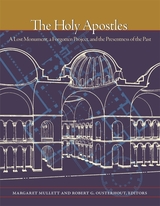 The Holy Apostles: A Lost Monument, a Forgotten Project, and the Presentness of the Past
Margaret Mullett
Harvard University Press Founded by Constantine the Great, rebuilt by Justinian, and redecorated in the ninth, tenth, and twelfth centuries, the Church of the Holy Apostles in Constantinople was the mausoleum of emperors, patriarchs, and saints. It was also a key station in the ceremonies of the city, the site of an important school, a major inspiration for apostolic literature, and briefly the home of the patriarch. Despite its significance, the church no longer exists, replaced by the mosque of Mehmet II after the fall of the city to the Ottomans. Today the church is remembered primarily from two important middle Byzantine ekphraseis, which celebrate its beauty and prominence, as well as from architectural copies and manuscript illustrations.
Scholars have long puzzled over the appearance of the church, as well as its importance to the Byzantines. Anxious to reconstruct the building and its place in the empire, an early collaborative project of Dumbarton Oaks brought together a philologist, an art historian, and an architectural historian in the 1940s and 1950s to reconstruct their own version of the Holy Apostles. Never fully realized, their efforts remained unpublished. The essays in this volume reconsider their project from a variety of vantage points, while illuminating differences of approach seventy years later, to arrive at a twenty-first-century synthesis.
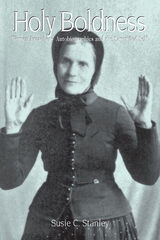 Holy Boldness: Women Preachers' Autobiographies and the Sanctified Self
Susie C. Stanley
University of Tennessee Press, 2004
From its inception in the nineteenth century, the Wesleyan/Holiness religious tradition has offered an alternative construction of gender and supported the equality of the sexes. In Holy Boldness, Susie C. Stanley provides a comprehensive analysis of spiritual autobiographies by thirty-four American Wesleyan/Holiness women preachers, published between the mid-nineteenth and mid-twentieth centuries. While a few of these women, primarily African Americans, have been added to the canon of American women’s autobiography, Stanley argues for the expansion of the canon to incorporate the majority of the women in her study. She reveals how these empowered women carried out public ministries on behalf of evangelism and social justice.
The defining doctrine of the Wesleyan/Holiness tradition is the belief in sanctification, or experiencing a state of holiness. Stanley's analysis illuminates how the concept of the sanctified self inspired women to break out of the narrow confines of the traditional “women's sphere” and engage in public ministries, from preaching at camp meetings and revivals to ministering in prisons and tenements. Moreover, as a result of the Wesleyan/Holiness emphasis on experience as a valid source of theology, many women preachers turned to autobiography as a way to share their spiritual quest and religiously motivated activities with others.
In such writings, these preachers focused on the events that shaped their spiritual growth and their calling to ministry, often giving only the barest details of their personal lives. Thus, Holy Boldness is not a collective biography of these women but rather an exploration of how sanctification influenced their evangelistic and social ministries. Using the tools of feminist theory and autobiographical analysis in addition to historical and theological interpretation, Stanley traces a trajectory of Christian women’s autobiographies and introduces many previously unknown spiritual autobiographies that will expand our understanding of Christian spirituality in nineteenth- and twentieth-century America.
The Author: Susie C. Stanley is professor of historical theology at Messiah College. She is the author of Feminist Pillar of Fire: The Life of Alma White.
The Holy Drama: Persian Passion Play in Modern Iran
Mahnia A. Nematollahi Mahani
Leiden University Press, 2013 Persian passion play or ta‘ziya depicts the role of the Prophet’s granddaughter Zeynab during the tragic death of the third Shiite Imam Hoseyn in Karbala in 680. This book depicts how Zeynab has become a role model in modern Iranian society, especially during the Islamic Revolution and the Iran-Iraq War.
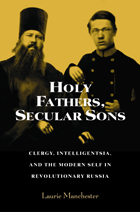 Holy Fathers, Secular Sons: Clergy, Intelligentsia, and the Modern Self in Revolutionary Russia
Laurie Manchester
Northern Illinois University Press, 2011
Holy Fathers, Secular Sons is the first study of the Orthodox clergy’s contribution to Russian society. Prior to the 1860s, clergymen’s sons were not allowed to leave the castelike clergy in large numbers. When permission was granted, they responded by entering free professions and political movements in droves. Challenging the standard view of educated pre-revolutionary Russians as largely westernized, secular, and patricidal, Laurie Manchester demonstrates that the clergymen’s sons did retain their fathers’ values. This was true even of the minority who became atheists. Drawing on the clergy’s commitment to moral activism, anti-aristocratism, and nationalism, clergymen’s sons believed they could, and should, save Russia. The consequence was a cultural revolution that helped pave the way for the 1917 revolutions.
Using a massive array of previously untapped archival and published sources—including lively first-hand autobiographical writings of over two hundred clergymen’s sons—Manchester constructs a composite biography of their childhoods, educations, and adult lives. In a highly original approach, she explores how they employed the image of the clerical family to structure their political, professional, and personal lives. Manchester’s work provides a window into an extremely significant but little-known world of Russian educated culture while contributing to histories of lived religion, private life, and memory, as well as to debates over secularization, modernity, and revolution. Holy Fathers, Secular Sons powerfully challenges the assumptions that radical change cannot be inspired by tradition and that the modern age is inherently secular.
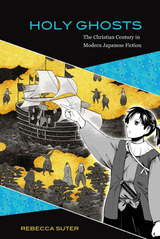 Holy Ghosts: The Christian Century in Modern Japanese Fiction
Rebecca Suter
University of Hawaii Press, 2015 Christians are a tiny minority in Japan, less than one percent of the total population. Yet Christianity is ubiquitous in Japanese popular culture. From the giant mutant “angels” of the Neon Genesis Evangelion franchise to the Jesus-themed cocktails enjoyed by customers in Tokyo’s Christon café, Japanese popular culture appropriates Christianity in both humorous and unsettling ways. By treating the Western religion as an exotic cultural practice, Japanese demonstrate the reversibility of cultural stereotypes and force reconsideration of global cultural flows and East-West relations. Of particular interest is the repeated reappearance in modern fiction of the so-called “Christian century” of Japan (1549–1638), the period between the arrival of the Jesuit missionaries and the last Christian revolt before the final ban on the foreign religion. Literary authors as different as Akutagawa Ryūnosuke, Endō Shūsaku, Yamada Fūtarō, and Takemoto Novala, as well as film directors, manga and anime authors, and videogame producers have all expressed their fascination with the lives and works of Catholic missionaries and Japanese converts and produced imaginative reinterpretations of the period. In Holy Ghosts, Rebecca Suter examines the popularity of the Christian century in modern Japanese fiction and reflects on the role of cross-cultural representations. Since the opening of the ports in the Meiji period, Japan’s relationship with Euro-American culture has oscillated between a drive towards Westernization and an antithetical urge to “return to Asia.” Exploring the twentieth-century’s fascination with the Christian century enables Suter to reflect on modern Japan’s complex combination of Orientalism, self-Orientalism, and Occidentalism.
 The Holy Grail: Imagination and Belief
Richard Barber
Harvard University Press, 2004 The elusive image of the Holy Grail has haunted the Western imagination for eight centuries. It represents the ideal of an unattainable yet infinitely desirable goal, the possibility of perfection. Initially conceived in literature, it became a Christian icon which has been re-created in a multitude of forms over time even though the Grail has no specific material attributes or true religious significance.
Richard Barber traces the history of the legends surrounding the Holy Grail, beginning with Chrétien de Troyes's great romances of the twelfth century and the medieval Church's religious version of the secular ideal. He pursues the myths through Victorian obsessions and enthusiasms to the popular bestsellers of the late twentieth century that have embraced its mysteries. Crisscrossing the borders of fiction and spirituality, the quest for the Holy Grail has long attracted writers, artists, and admirers of the esoteric. It has been a recurrent theme in tales of imagination and belief which have laid claim to the highest religious and secular ideals and experiences. From Lancelot to Parsifal, chivalric romances to Wagner's Ring, T. S. Eliot to Monty Python, the Grail has fascinated and lured the Western imagination from beyond the reach of the ordinary world.
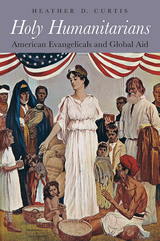 Holy Humanitarians: American Evangelicals and Global Aid
Heather D. Curtis
Harvard University Press, 2018 On May 10, 1900, an enthusiastic Brooklyn crowd bid farewell to the Quito. The ship sailed for famine-stricken Bombay, carrying both tangible relief—thousands of tons of corn and seeds—and “a tender message of love and sympathy from God’s children on this side of the globe to those on the other.” The Quito may never have gotten under way without support from the era’s most influential religious newspaper, the Christian Herald, which urged its American readers to alleviate poverty and suffering abroad and at home. In Holy Humanitarians, Heather D. Curtis argues that evangelical media campaigns transformed how Americans responded to domestic crises and foreign disasters during a pivotal period for the nation.
Through graphic reporting and the emerging medium of photography, evangelical publishers fostered a tremendously popular movement of faith-based aid that rivaled the achievements of competing agencies like the American Red Cross. By maintaining that the United States was divinely ordained to help the world’s oppressed and needy, the Christian Herald linked humanitarian assistance with American nationalism at a time when the country was stepping onto the global stage. Social reform, missionary activity, disaster relief, and economic and military expansion could all be understood as integral features of Christian charity.
Drawing on rigorous archival research, Curtis lays bare the theological motivations, social forces, cultural assumptions, business calculations, and political dynamics that shaped America’s ambivalent embrace of evangelical philanthropy. In the process she uncovers the seeds of today’s heated debates over the politics of poverty relief and international aid.
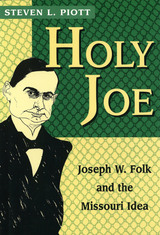 Holy Joe: Joseph W. Folk and the Missouri Idea
Steven L. Piott
University of Missouri Press, 1997
One of Missouri's best-known leaders of the Progressive Era, Joseph W. Folk epitomized the moral reformer in politics. As a crusading district attorney in St. Louis, Folk won national acclaim for his investigations of wrongdoing in municipal government. With the help of muckraking journalist Lincoln Steffens, Folk revealed for the first time the extent of political corruption then plaguing America's cities and helped bring about a popular demand for the regeneration of municipal government nationwide.
A firm believer that the law was a weapon with which to check political corruption and restrain powerful special interests, Folk popularized the "Missouri Idea," the doctrine that public office is a public trust, not merely an opportunity for private gain. Elected as governor of Missouri in 1904, Folk orchestrated a remarkable record of legislative accomplishment. He established himself as one of Missouri's outstanding governors and one of the nation's leading progressive reformers.
In asserting that traditional moral values could be applied to politics, Folk became known among friends and enemies as Holy Joe. His refusal to make any distinction between public and private morality, however, alienated some Missourians, while his disregard for party organization angered politicians. His idealism cost him political advancement and ultimately a place in national politics.
Whereas some studies of the Progressive Era have minimized the moral dimension of Progressivism and downplayed the importance of reformers like Joseph W. Folk, Holy Joe establishes him as a major leader of the Progressive movement. This biography will be a welcome addition to the literature on the subject.
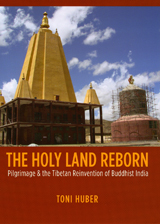 The Holy Land Reborn: Pilgrimage and the Tibetan Reinvention of Buddhist India
Toni Huber
University of Chicago Press, 2008 The Dalai Lama has said that Tibetans consider themselves “the child of Indian civilization” and that India is the “holy land” from whose sources the Tibetans have built their own civilization. What explains this powerful allegiance to India? In The Holy Land Reborn¸ Toni Huber investigates how Tibetans have maintained a ritual relationship to India, particularly by way of pilgrimage, and what it means for them to consider India as their holy land.
Focusing on the Tibetan creation and recreation of India as a destination, a landscape, and a kind of other, in both real and idealized terms, Huber explores how Tibetans have used the idea of India as a religious territory and a sacred geography in the development of their own religion and society. In a timely closing chapter, Huber also takes up the meaning of India for the Tibetans who live in exile in their Buddhist holy land.
A major contribution to the study of Buddhism, The Holy Land Reborn describes changes in Tibetan constructs of India over the centuries, ultimately challenging largely static views of the sacred geography of Buddhism in India.
Holy Leisure: Recreation and Religion in God's Square Mile
Troy Messenger
Temple University Press, 2000 The beach has always been the place to shake off the stresses of urban life, and to relax with friends and family. And yet, as Troy Messenger shows, the beach has been a site for religious revival for as long as it's been a haven from the workday world. In this history of Ocean Grove, New Jersey, the first permanent camp meeting ground for religious revival, Messenger examines how the emergence of the beach appeared hand-in-hand with America's need to escape the secular world of work through leisure and religious renewal.
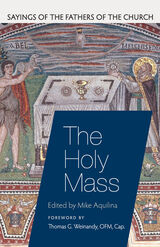 The Holy Mass
Mike Aquilia
Catholic University of America Press, 2021 The Catholic University of America Press is proud to present the third volume in its Sayings of the Fathers of the Church series. Featuring esteemed scholars and writers compiling material from our acclaimed Fathers of the Church volumes, each title is devoted to select areas of theology. The inaugural volumes covered the Seven Deadly Sins and the Four Last Things, and now we turn to The Holy Mass.
The documents of early Christianity are rich in mentions of the Mass and its component parts. Sometimes they’re detailed descriptions, sometimes quick allusions. In this volume Mike Aquilina, a popular author on early Christianity, takes readers step by step through the Mass, from the Sign of the Cross through the Dismissal, illuminating the way with the words of the Fathers. Along the way readers encounter familiar rites, words, and gestures, but also familiar complaints — about long homilies, bad singing, liturgical abuses, and distracted congregations.
The Holy Mass is divided into chapters based on the parts of the Mass known to modern Catholics of the Roman Rite. The Mass did not follow this sequence through the entirety of the era of the Fathers. Gregory the Great moved the position of the Lord’s Prayer. There were geographic variants for the placement of the Sign of Peace. Some ancient liturgies lacked a specific penitential rite — though all the liturgies had a penitential dimension to their prayers.
Mike Aquilina’s introduction provides historical context and describes the rich development of the liturgy through the Church’s first few centuries. A foreword by Thomas Weinandy, a member of the Vatican’s International Theological Commission, speaks of the relevance of this material for worshipers today.
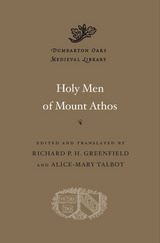 Holy Men of Mount Athos
Richard P. H. Greenfield
Harvard University Press, 2016 Often simply called the Holy Mountain, Mount Athos was the most famous center of Byzantine monasticism and remains the spiritual heart of the Orthodox Church today. This volume presents the Lives of Euthymios the Younger, Athanasios of Athos, Maximos the Hutburner, Niphon of Athos, and Philotheos. These five holy men lived on Mount Athos at different times from its early years as a monastic locale in the ninth century to the last decades of the Byzantine period in the early fifteenth century. All five were celebrated for asceticism, clairvoyance, and, in most cases, the ability to perform miracles; Euthymios and Athanasios were also famed as founders of monasteries.
Holy Men of Mount Athos illuminates both the history and the varieties of monastic practice on Athos, individually by hermits as well as communally in large monasteries. The Lives also demonstrate the diversity of hagiographic composition and provide important glimpses of Byzantine social and political history.
All the Lives in this volume are presented for the first time in English translation, together with authoritative editions of their Greek texts.
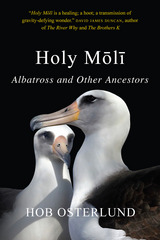 Holy Moli: Albatross and Other Ancestors
Hob Osterlund
Oregon State University Press, 2016 Hob Osterlund moved to Hawai'i after being visited in a dream by an ancestor, Martha Beckwith, author of the monumental classic, Hawaiian Mythology. It was there, on the island of Kaua'i, where she happened upon a few courting albatross and felt an inexplicable attraction to the birds—an attraction too powerful to be explained by their beguiling airbrushed eye shadows, enormous wingspans, and rollicking dances.
In Hawaiian mythology, ancestors may occupy the physical forms of animals known as 'aumakua. Laysan albatross—known as moli—are among them. Smitten with these charismatic creatures, Osterlund set out to learn everything she could about moli. She eventually came to embrace them as her 'aumakua—not as dusty old myths on a museum bookshelf, but as breathing, breeding, boisterous realities.
Albatross sport many superlative qualities. They live long—sometimes longer than sixty years—and spend the majority of their time airborne, gliding across vast oceanic expanses. They are model mates and devoted parents, and are among the only animals known to take long-term same-sex partners. In nesting season, they rack up inconceivable mileage just to find supper for chicks waiting on the islands of the Hawaiian archipelago.
It is from the island of Kaua'i that Holy Moli takes flight. Osterlund relates a true tale of courage, celebration and grief—of patience, affection and resilience. This is the story of how albatross guided the author on her own long journey, retracing distances and decades, back to the origin of a binding bargain she struck when she was ten years old, shortly after her mother’s death.
Holy Moli is a natural history of the albatross, a moving memoir of grief, and a soaring tribute to ancestors. Within its pages are lyrics of wonder—for freedom, for beauty, and for the far-flung feathered creatures known to us as albatross.
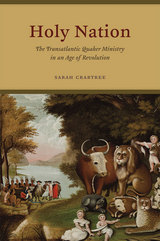 Holy Nation: The Transatlantic Quaker Ministry in an Age of Revolution
Sarah Crabtree
University of Chicago Press, 2015 Early American Quakers have long been perceived as retiring separatists, but in Holy Nation Sarah Crabtree transforms our historical understanding of the sect by drawing on the sermons, diaries, and correspondence of Quakers themselves. Situating Quakerism within the larger intellectual and religious undercurrents of the Atlantic World, Crabtree shows how Quakers forged a paradoxical sense of their place in the world as militant warriors fighting for peace. She argues that during the turbulent Age of Revolution and Reaction, the Religious Society of Friends forged a “holy nation,” a transnational community of like-minded believers committed first and foremost to divine law and to one another. Declaring themselves citizens of their own nation served to underscore the decidedly unholy nature of the nation-state, worldly governments, and profane laws. As a result, campaigns of persecution against the Friends escalated as those in power moved to declare Quakers aliens and traitors to their home countries.
Holy Nation convincingly shows that ideals and actions were inseparable for the Society of Friends, yielding an account of Quakerism that is simultaneously a history of the faith and its adherents and a history of its confrontations with the wider world. Ultimately, Crabtree argues, the conflicts experienced between obligations of church and state that Quakers faced can illuminate similar contemporary struggles.
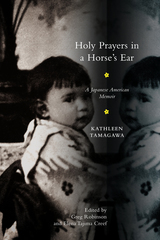 Holy Prayers in a Horse's Ear: A Japanese American Memoir
Kathleen Tamagawa, Edited by Greg Robinson and Elena Tajima Creef
Rutgers University Press, 2008 Originally published in 1932, Kathleen Tamagawa’s pioneering Asian American memoir is a sensitive and thoughtful look at the personal and social complexities of growing up racially mixed during the early twentieth century. Born in 1893 to an Irish American mother and a Japanese father and raised in Chicago and Japan, Tamagawa reflects on the difficulty she experienced fitting into either parent’s native culture.
She describes how, in America, her every personal quirk and quality was seen as quintessentially Japanese and how she was met unpredictably with admiration or fear—perceived as a “Japanese doll” or “the yellow menace.” When her family later moved to Japan, she was viewed there as a “Yankee,” and remained an outsider in that country as well. As an adult she came back to the United States as an American diplomat’s wife, but had trouble feeling at home in any place.
This edition, which also includes Tamagawa’s recently rediscovered short story, “A Fit in Japan,” and a critical introduction, will challenge readers to reconsider how complex ethnic identities are negotiated and how feelings of alienation limit human identification in any society.
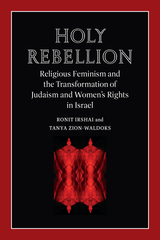 Holy Rebellion: Religious Feminism and the Transformation of Judaism and Women's Rights in Israel
Ronit Irshai and Tanya Zion-Waldoks
Brandeis University Press, 2024 An in-depth study of Jewish religion and law in Israel from a gendered perspective.
In Holy Rebellion, Ronit Irshai and Tanya Zion-Waldoks examine social change in Israel through a rigorous analysis of the shifting entanglements of religion, gender, and law in times of cultural transformation. They explore theological, halakhic, political, and sociological processes and show how they interact with one another in ways that advance women’s rights, as well as how they are met with a conservative backlash in the discourses and actions of the rabbinic establishment. Irshai and Zion-Waldoks build on legal philosopher Robert Cover’s 1982 paper “Nomos and Narrative,” which explained how cultural narratives and legal norms are reciprocally enforced or transformed. Expanding on this notion, Irshai and Zion-Waldoks propose a “narrative ripeness test,” an analytic tool that evaluates the relationship between culture and law to assess how and when change within a minority cultural community may be accelerated or hindered by state intervention.
Religious feminisms are emerging around the world, not solely in Israel, and this book helps elucidate how they create enduring and radical change. Many liberal states are also confronting an illiberal backlash and question the multicultural framework’s ability to serve the needs of minorities within minorities. Therefore, the theoretical framework offered by Irshai and Zion-Waldoks is applicable beyond the Israeli case, even as it offers deeper insights into an Israeli society in turmoil.
 Holy Scripture and the Quest for Authority at the End of the Middle Ages
Ian Christopher Levy
University of Notre Dame Press, 2012
All participants in late medieval debates recognized Holy Scripture as the principal authority in matters of Catholic doctrine. Popes, theologians, lawyers—all were bound by the divine truth it conveyed. Yet the church possessed no absolute means of determining the final authoritative meaning of the biblical text—hence the range of appeals to antiquity, to the papacy, and to councils, none of which were ultimately conclusive. Authority in the late medieval church was a vexing issue precisely because it was not resolved.
Ian Christopher Levy’s book focuses on the quest for such authority between 1370 and 1430, from John Wyclif to Thomas Netter, thereby encompassing the struggle over Holy Scripture waged between Wycliffites and Hussites on the one hand, and their British and Continental opponents on the other. Levy demonstrates that the Wycliffite/Hussite “heretics” and their opponents—the theologians William Woodford, Thomas Netter, and Jean Gerson—in fact shared a large and undisputed common ground. They held recognized licenses of expertise, venerated tradition, esteemed the church fathers, and embraced Holy Scripture as the ultimate authority in Christendom. What is more, they utilized similar hermeneutical strategies with regard to authorial intention, the literal sense, and the appeal to the fathers and holy doctors in order to open up the text. Yet it is precisely this commonality, according to Levy, that rendered the situation virtually intractable; he argues that the erroneous assumption persists today that Netter and Gerson spoke for “the church,” whereas Wyclif and Hus sought to destroy it.
Levy's sophisticated study in historical theology, which reconsiders the paradigm of heresy and orthodoxy, offers a necessary adjustment in our view of church authority at the turn of the fifteenth century.
"In Holy Scripture and the Quest for Authority at the End of the Middle Ages, Ian Christopher Levy reveals the crux of a late medieval quandary regarding ecclesial authority. He perceptively shows how theologians and the Catholic Church were mired in a nearly intractable constellation of issues involving scriptural interpretation, appeals to tradition, development of doctrine, the question of concrete, visible instruments of authority, and the role of canon law and university theologians. This highly original contribution treats themes and issues at an immensely complex and important juncture in the development of early modern religious thought and practice, the ramifications of which are still very much with us today." —Boyd Taylor Coolman, Boston College
Holy Smoke
Fanny Howe
University of Alabama Press, 1979 Howe tells the story of a woman traveling among geographies both real and imagined looking for her daughter. Even within the twenty-first century landscape where hybrid works are common, perhaps all too common, Fanny How's 1979 Holy Smoke offers a still startlingly inventive mixture of prose, poetry, images, found objects and ephemera, journaling and more.
The Holy Spirit in Puritan Faith and Experience
Geoffrey F. Nuttall
University of Chicago Press, 1992 Geoffrey F. Nuttall establishes the primacy of the doctrines of the Holy Spirit in seventeenth-century English Puritanism and demonstrates the continuity of the Reformation tradition from the more conservative views of Luther to the more radical interpretations of the Quakers. Nuttall illuminates prominent spokesmen, including Richard Sibbes, Richard Baxter, John Owen, Walter Cradock, Morgan Llwyd, and George Fox.
In a new Introduction, Peter Lake discusses the relevance of Nuttall's book to, and its influence on, major works in seventeenth-century English history written since 1946.
The Holy Surprise of Right Now: Selected and New Poems
Samuel Hazo
University of Arkansas Press, 1996 From his first book, through the National Book Award finalist Once for the Last Bandit, to his newest poems, Samuel Hazo’s themes have remained consistent. With each collection he wonders anew at the persistence of mortality in the midst of vibrant living and of love in all our relations. In his lithe, metrical lines, he writes with equal ease of Geneva, Switzerland, or Johnstown, Pennsylvania; of the matador Manolete in his dying moments or the innocent eyes of an eleven-year-old son; of the rewards of creating great art or the frustrations and joys of driving a Roosevelt Coupé. With The Holy Surprise of Right Now, Hazo gives his readers a powerful summation gathered from forty years of work.
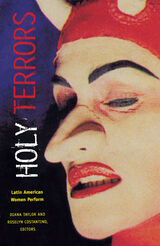 Holy Terrors: Latin American Women Perform
Diana Taylor and Roselyn Costantino, eds.
Duke University Press, 2003 Holy Terrors presents exemplary original work by fourteen of Latin America’s foremost contemporary women theatre and performance artists. Many of the pieces—including one-act plays, manifestos, and lyrics—appear in English for the first time. From Griselda Gambaro, Argentina's most widely recognized playwright, to such renowned performers as Brazil's Denise Stoklos and Mexico’s Jesusa Rodríguez, these women are involved in some of Latin America's most important aesthetic and political movements. Of varied racial and ethnic backgrounds, they come from across Latin America—Argentina, Brazil, Mexico, Chile, Colombia, Puerto Rico, Peru, and Cuba. This volume is generously illustrated with over seventy images. A number of the performance pieces are complemented by essays providing context and analysis. The performance pieces in Holy Terrors are powerful testimonies to the artists' political and personal struggles. These women confront patriarchy, racism, and repressive government regimes and challenge brutality and corruption through a variety of artistic genres. Several have formed theatre collectives—among them FOMMA (a Mayan women’s theatre company in Chiapas) and El Teatro de la máscara in Colombia. Some draw from cabaret and ‘frivolous’ theatre traditions to create intense and humorous performances that challenge church and state. Engaging in self-mutilation and abandoning traditional dress, others use their bodies as the platforms on which to stage their defiant critiques of injustice. Holy Terrors is a unique English-language presentation of some of Latin America's fiercest, most provocative art. Contributors
Sabina Berman
Tania Bruguera
Petrona de la Cruz Cruz
Diamela Eltit
Griselda Gambaro
Astrid Hadad
Teresa Hernández
Rosa Luisa Márquez
Teresa Ralli
Diana Raznovich
Jesusa Rodríguez
Denise Stoklos
Katia Tirado
Ema Villanueva
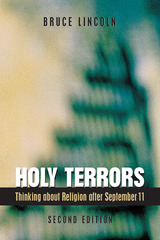 Holy Terrors, Second Edition: Thinking About Religion After September 11
Bruce Lincoln
University of Chicago Press, 2006 It is tempting to regard the perpetrators of the September 11th terrorist attacks as evil incarnate. But their motives, as Bruce Lincoln’s acclaimed Holy Terrors makes clear, were profoundly and intensely religious. Thus what we need after the events of 9/11, Lincoln argues, is greater clarity about what we take religion to be. Holy Terrors begins with a gripping dissection of the instruction manual given to each of the 9/11 hijackers. In their evocation of passages from the Quran, we learn how the terrorists justified acts of destruction and mass murder “in the name of God, the most merciful, the most compassionate.” Lincoln then offers a provocative comparison of President Bush’s October 7, 2001 speech announcing U.S. military action in Afghanistan alongside the videotaped speech released by Osama bin Laden just a few hours later. As Lincoln authoritatively demonstrates, a close analysis of the rhetoric used by leaders as different as George W. Bush and Osama bin Laden—as well as Mohamed Atta and even Jerry Falwell—betrays startling similarities. These commonalities have considerable implications for our understanding of religion and its interrelationships with politics and culture in a postcolonial world, implications that Lincoln draws out with skill and sensitivity. With a chapter new to this edition, “Theses on Religion and Violence,” Holy Terrors remains one of the essential books on September 11 and a classic study on the character of religion. “Modernity has ended twice: in its Marxist form in 1989 Berlin, and in its liberal form on September 11, 2001. In order to understand such major historical changes we need both large-scale and focused analyses—a combination seldom to be found in one volume. But here Bruce Lincoln . . . has given us just such a mix of discrete and large-picture analysis.”—Stephen Healey, Christian Century
“From time to time there appears a work . . . that serves to focus the wide-ranging, often contentious discussion of religion’s significance within broader cultural dynamics. Bruce Lincoln’s Holy Terrors is one such text. . . . Anyone still struggling toward a more nuanced comprehension of 9/11 would do well to spend time with this book.”—Theodore Pulcini, Middle East Journal
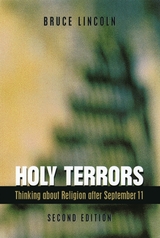 Holy Terrors: Thinking about Religion after September 11
Bruce Lincoln
University of Chicago Press, 2002 In the wake of the September 11 terrorist attacks, it is tempting to regard their perpetrators as evil incarnate. But their motives, as Bruce Lincoln shows in this timely offering, were profoundly and intensely religious. What we need, then, after September 11 is greater clarity about what we take religion to be. With rigor and incisiveness, Holy Terrors examines the implications of September 11 for our understanding of religion and how it interrelates with politics and culture.
Lincoln begins with a gripping dissection of the instruction manual given to each of the hijackers. In their evocation of passages from the Quran, we learn how the terrorists justified acts of destruction and mass murder "in the name of God, the most merciful, the most compassionate." Lincoln then offers a provocative comparison of President Bush's October 7 speech announcing U.S. military action in Afghanistan and Osama bin Laden's videotape released hours later. Each speech, he argues, betrays telling contradictions. Bin Laden, for instance, conceded implicitly that Islam is not unitary, as his religious rhetoric would have it, but is torn by deep political divisions. And Bush, steering clear of religious rhetoric for the sake of political unity, still reassured his constituents through coded allusions that American policy is firmly rooted in faith.
Lincoln ultimately broadens his discussion further to consider the role of religion since September 11 and how it came to be involved with such fervent acts of political revolt. In the postcolonial world, he argues, religion is widely considered the most viable and effective instrument of rebellion against economic and social injustices. It is the institution through which unified communities ensure the integrity and continuity of their culture in the wake of globalization. Brimming with insights such as these, Holy Terrors will become one of the essential books on September 11 and a classic study on the character of religion.
Holy War in the Baltic and the Battle of Lyndanise 1219
Carsten Selch Jensen
Arc Humanities Press, 2024 In June 1219 Danish crusaders fought a vicious battle against local pagan warriors at the place in northern Estonia where Tallinn now lies. The battle—known then as the Battle of Lyndanise—was a narrow victory for the crusaders and eventually turned out to be a pivotal event in the national histories of both Denmark and Estonia as a milestone in the overall military conquest of the entire region by (mostly) western military powers. The main scope of this book is to present a study of this military conquest of Estonia around 1200 with a special focus on the Scandinavian involvement, enabling us to better understand the intense political, military, and religious changes that came to influence the region and its many people from the early high medieval period onwards.
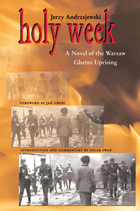 Holy Week: A Novel of the Warsaw Ghetto Uprising
Jerzy Andrzejewski
Ohio University Press, 2006 At the height of the Nazi extermination campaign in the Warsaw Ghetto, a young Jewish woman, Irena, seeks the protection of her former lover, a young architect, Jan Malecki. By taking her in, he puts his own life and the safety of his family at risk. Over a four-day period, Tuesday through Friday of Holy Week 1943, as Irena becomes increasingly traumatized by her situation, Malecki questions his decision to shelter Irena in the apartment where Malecki, his pregnant wife, and his younger brother reside. Added to his dilemma is the broader context of Poles’ attitudes toward the “Jewish question” and the plight of the Jews locked in the ghetto during the final moments of its existence. Few fictional works dealing with the war have been written so close in time to the events that inspired them. No other Polish novel treats the range of Polish attitudes toward the Jews with such unflinching honesty. Jerzy Andrzejewski’s Holy Week (Wielki Tydzien, 1945), one of the significant literary works to be published immediately following the Second World War, now appears in English for the first time. This translation of Andrzejewski’s Holy Week began as a group project in an advanced Polish language course at the University of Pittsburgh. Class members Daniel M. Pennell, Anna M. Poukish, and Matthew J. Russin contributed to the translation; the instructor, Oscar E. Swan, was responsible for the overall accuracy and stylistic unity of the translation as well as for the biographical and critical notes and essays.
Holy Wind in Navajo Philosophy
James Kale McNeley
University of Arizona Press, 1981 "The author has written a well-documented book on the Navajo concept of personality. . . . Holy Wind gives life, movement, thought, speech, and behavior and links the Navajo soul to the immanent powers of the universe. . . . A valuable case study." —Journal of Psychology & Theology
"An admirable volume . . . it illustrates how much we can learn about the importance of poetry as a fundamental activity by investigating the traditions of what should be acknowledged as the New World's unique classical past." —New Scholar
"This book is a fascinating analysis of what obviously is a central dimension in the traditional Navajo awareness of life." —New Mexico Historical Review
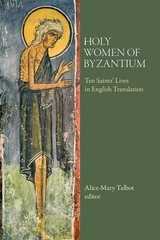 Holy Women of Byzantium: Ten Saints’ Lives in English Translation
Alice-Mary Talbot
Harvard University Press The ten holy women whose biographies are presented here represent a wide variety of Byzantine female saints: nuns who disguised themselves in male monastic garb; a repentant harlot who withdrew to the desert for forty-seven years of self-imposed isolation; a nun who escaped from Arab captivity to spend thirty-five years as a hermit on the abandoned island of Paros; a wonder-working abbess who slew a dragon; widows who found refuge in the ascetic life of the convent; married laywomen and even a queen abused by their husbands. The careers of these holy women demonstrate some of the divergent paths to sanctification in Byzantium, through mortification of the body, unquestioning obedience to a monastic superior, repentance, acts of charity, prophecy, and miracle-working. At the same time the texts of their Lives reveal the Byzantine ambivalence towards women, reflecting the paradox of a civilization that simultaneously denigrated them as daughters of Eve yet elevated Mary as the Mother of God and the instrument of man's salvation. These vitae, ranging from the fifth to thirteenth centuries, also supplement traditional narrative histories by providing information on such aspects of Byzantine civilization as the impact of Arab and Bulgarian raids, iconoclasm, the monastic routine in convents, everyday family life and household management, and a smallpox epidemic in Thessalonike.
Homage to the Lame Wolf: Selected Poems
Vasko Popa
Oberlin College Press, 1987 Our first version of this selection from one of Eastern Europe's major figures sold out. The new version adds two sequences--"Give Me Back My Rage" and "Heaven's Ring"--as well as some previously unpublished sections of the justly famous series, "The Little Box." Simic and Popa are a perfect match. A book for surrealists, mythographers, postmodernists, scientists, and lovers of poetry and games. Winner of the PEN Translation Prize.
 Home and Away: The Rise and Fall of Professional Football on the Banks of the Ohio, 1919–1934
Carl M. Becker
Ohio University Press, 1998 Early in this century, growing cities seeking to promote their communities came to view the budding local football team as an agent of civic progress and took the necessary measures to see that their interests were ably represented. As a result, semiprofessional clubs such as the Ironton Tanks and the Portsmouth Spartans faced off against such legendary teams as the Chicago Bears and the Green Bay Packers. Towns scrambled to raise subscription dollars to build new stadiums, buy contracts for prospective stars, and finance the many road trips. Capturing the local color of a region as well as the spirited charm of a sport as it came into its own—before the rules were formalized and the teams so strongly established—Carl Becker documents a rare time in American history when ideals were being formed and broken and the promise for greatness seemed just within reach of all who tried to grasp it. Home and Away is a unique chronicle, more than just a history of the game of football, it is also an intimate study of how the citizens and organizations that made up these cities worked to put themselves on the map of an ever-shifting American landscape.
 Home and Away: The Rise and Fall of Professional Football on the Banks of the Ohio, 1919–1934
Carl M. Becker
Ohio University Press, 1998 Early in this century, growing cities seeking to promote their communities came to view the budding local football team as an agent of civic progress and took the necessary measures to see that their interests were ably represented. As a result, semiprofessional clubs such as the Ironton Tanks and the Portsmouth Spartans faced off against such legendary teams as the Chicago Bears and the Green Bay Packers. Towns scrambled to raise subscription dollars to build new stadiums, buy contracts for prospective stars, and finance the many road trips. Capturing the local color of a region as well as the spirited charm of a sport as it came into its own—before the rules were formalized and the teams so strongly established—Carl Becker documents a rare time in American history when ideals were being formed and broken and the promise for greatness seemed just within reach of all who tried to grasp it. Home and Away is a unique chronicle, more than just a history of the game of football, it is also an intimate study of how the citizens and organizations that made up these cities worked to put themselves on the map of an ever-shifting American landscape.
Home and Beyond: Generative Phenomenology after Husserl
Anthony J. Steinbock
Northwestern University Press, 1995 At a time when many philosophers have concluded that Husserl's philosophy is exhausted, but when alternatives appear to be exhausted as well, Anthony J. Steinbock presents an innovative approach to Husserlian phenomenology. His systematic study of the problems and themes of a generative phenomenology, normality and abnormality, and sociohistorical concepts of homeworld and alienworld, and the steps he takes toward developing such a generative phenomenology, open new doors for a phenomenology of the social world, while casting new light on work done by Husserl himself and by many philosopher working more or less in a Husserlian vein. Both critique and an appropriation of a large and diverse body of work, Home and Beyond is a major contribution to contemporary Husserl scholarship.
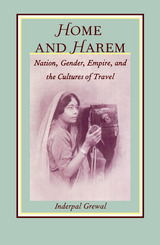 Home and Harem: Nation, Gender, Empire and the Cultures of Travel
Inderpal Grewal
Duke University Press, 1996 Moving across academic disciplines, geographical boundaries, and literary genres, Home and Harem examines how travel shaped ideas about culture and nation in nineteenth-century imperialist England and colonial India. Inderpal Grewal’s study of the narratives and discourses of travel reveals the ways in which the colonial encounter created linked yet distinct constructs of nation and gender and explores the impact of this encounter on both English and Indian men and women. Reworking colonial discourse studies to include both sides of the colonial divide, this work is also the first to discuss Indian women traveling West as well as English women touring the East.
In her look at England, Grewal draws on nineteenth-century aesthetics, landscape art, and debates about women’s suffrage and working-class education to show how all social classes, not only the privileged, were educated and influenced by imperialist travel narratives. By examining diverse forms of Indian travel to the West and its colonies and focusing on forms of modernity offered by colonial notions of travel, she explores how Indian men and women adopted and appropriated aspects of European travel discourse, particularly the set of oppositions between self and other, East and West, home and abroad.
Rather than being simply comparative, Home and Harem is a transnational cultural study of the interaction of ideas between two cultures. Addressing theoretical and methodological developments across a wide range of fields, this highly interdisciplinary work will interest scholars in the fields of postcolonial and cultural studies, feminist studies, English literature, South Asian studies, and comparative literature.
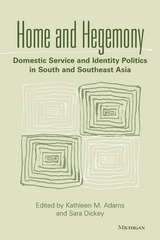 Home and Hegemony: Domestic Service and Identity Politics in South and Southeast Asia
Kathleen M. Adams and Sara Dickey, Editors
University of Michigan Press, 2000 In the intimate context of domestic service, power relations take on one of their most personalized forms. Domestic servants and their employers must formulate their political identities in relationship to each other, sometimes reinforcing and sometimes challenging broader social hierarchies such as those based on class, caste or rank, gender, race and ethnicity, nationality, sexual orientation, and kinship relations.
This pathbreaking collection builds on recent examinations of identity in the postcolonial states of South and Southeast Asia by investigating the ways in which domestic workers and their employers come to know and depict one another and themselves through their interactions inside and outside of the home. This setting provides a particularly apt arena for examining the daily negotiations of power and hegemony.
Contributors to the volume, all anthropologists, provide rich ethnographic analyses that avoid a narrow focus on either workers or employers. Rather, they examine systems of power through specific topics that range from the notion of "nurture for sale" to the roles of morality and humor in the negotiation of hierarchy and the dilemmas faced by foreign employers who find themselves in life-and-death dependence on their servants.
With its provocative theoretical and ethnographic contributions to current debates, this collection will be of interest to scholars in Asian studies, women's studies, anthropology, sociology, and cultural studies.
Kathleen M. Adams is Associate Professor of Anthropology, Loyola University of Chicago. Sara Dickey is Associate Professor of Anthropology, Bowdoin College.
 Home and the World: Editing the “Glorious Ming” in Woodblock-Printed Books of the Sixteenth and Seventeenth Centuries
Yuming He
Harvard University Press, 2012 China’s sixteenth and seventeenth centuries saw an unprecedented explosion in the production and circulation of woodblock-printed books. What can surviving traces of that era’s print culture reveal about the makers and consumers of these books? Home and the World addresses this question by carefully examining a wide range of late Ming books, considering them not merely as texts, but as material objects and economic commodities designed, produced, and marketed to stand out in the distinctive book marketplace of the time, and promising high enjoyment and usefulness to readers. Although many of the mass-market commercial imprints studied here might have struck scholars from the eighteenth century on as too trivial, lowbrow, or slipshod to merit serious study, they prove to be an invaluable resource, providing insight into their readers’ orientations toward the increasingly complex global stage of early modernity and toward traditional Chinese conceptions of textual, political, and moral authority. On a more intimate scale, they tell us about readers’ ideals of a fashionable and pleasurable private life. Through studying these works, we come closer to recapturing the trend-conscious, sophisticated, and often subversive ways readers at this important moment in China’s history imagined their world and their place within it.
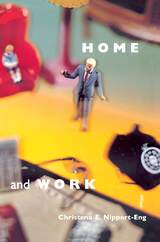 Home and Work: Negotiating Boundaries through Everyday Life
Christena E. Nippert-Eng
University of Chicago Press, 1996 Do you put family photos on your desk at work? Are your home and work keys on the same chain? Do you keep one all-purpose calendar for listing home and work events? Do you have separate telephone books for colleagues and friends? In Home and Work, Christena Nippert-Eng examines the intricacies and implications of how we draw the line between home and work.
Arguing that relationships between the two realms range from those that are highly "integrating" to those that are highly "segmenting," Nippert-Eng examines the ways people sculpt the boundaries between home and work. With remarkable sensitivity to the symbolic value of objects and actions, Nippert-Eng explores the meaning of clothing, wallets, lunches and vacations, and the places and ways in which we engage our family, friends, and co-workers. Commuting habits are also revealing, showing how we make the transition between home and work selves though ritualized behavior like hellos and goodbyes, the consumption of food, the way we dress, our choices of routes to and from work, and our listening, working, and sleeping habits during these journeys.
The ways each of us manages time, space, and people not only reflect but reinforce lives that are more "integrating" or "segmenting" at any given time. In clarifying what we take for granted, this book will leave you thinking in different ways about your life and work.
Home Away From Home: A History of Basque Boardinghouses
Jeronima Echeverria
University of Nevada Press, 1999 In this meticulously researched study of Basque boardinghouses in the United States, Jeronima Echeverria offers a compelling history of the institution that most deeply shaped Basque immigrant life and served as the center of Basque communities throughout the West. She weaves into her narrative the stories of the boarding house owners and operators and the ways they made their establishments a home away from home for their fellow compatriots, as well as the stories of the young Basques who left the security of their beloved homeland to find work in the United States.
 Home Away from Home: Japanese Corporate Wives in the United States
Sawa Kurotani
Duke University Press, 2005 Drawing attention to domestic space as the critical juncture between the global and the local, Home Away from Home is an innovative ethnography of the daily lives of middle-class Japanese housewives who accompany their husbands on temporary corporate job assignments in the United States. These women are charged with the task of creating and maintaining restful Japanese homes in a foreign environment so that their husbands are able to remain productive, loyal workers for Japanese multinationals and their children are properly socialized and educated as Japanese citizens abroad. Arguing that the homemaking components of transnational communities have not received adequate attention, Sawa Kurotani demonstrates how gender dynamics and the politics of the domestic sphere are integral to understanding national identity and transnational mobility. Kurotani interviewed and spent time with more than 120 women in three U.S. locations with sizable expatriate Japanese communities: Centerville, a pseudonymous Midwestern town; the New York metropolitan area; and North Carolina’s Research Triangle area. She highlights the contradictory situations faced by the transient wives. Their husbands’ assignments in the United States typically last from three to five years, and they frequently emphasize the temporariness of their situation, referring to it as a “long vacation.” Yet they are responsible for creating comfortable homes for their families, which necessitates producing a familiar and permanent environment. Kurotani looks at the dynamic friendships that develop among the wives and describes their feelings about returning to Japan. She conveys how their sense of themselves as Japanese women, of home, and of their relationships with family members are altered by their personal experiences of transnational homemaking.
 The Home Base of American China Missions, 1880–1920
Valentin H. Rabe
Harvard University Press, 1978 During the closing decades of the nineteenth century, approximately two dozen Protestant mission societies, which since 1812 had been sending Americans abroad to evangelize non-Christians, coordinated their enterprise and expanded their operations with unprecedented urgency and efficiency. Ambitious innovations characterized the work in traditional and new foreign mission fields, but the most radical changes occurred in the institutionalization of what contemporaries referred to as the home base of the mission movement.
Valentin Rabe focuses on the recruitment of personnel, fundraising, administration, promotional propaganda, and other logistical problems faced by the agencies in the United States. When generalizations concerning the American base require demonstration or references to the field of operations, China—the country in which American missionaries applied the greatest proportion of the movement's resources by the 1920s—is used as the primary illustration.
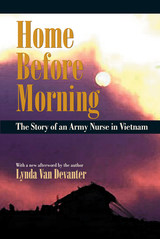 Home before Morning: The Story of an Army Nurse in Vietnam
Lynda Van Devanter
University of Massachusetts Press, 2001 A powerful and harrowing memoir of a young nurse’s experience in the Vietnam War
Lynda Van Devanter was the girl next door, the cheerleader who went to Catholic schools, enjoyed sports, and got along well with her four sisters and parents. After high school she attended nursing school and then did something that would shatter her secure world for the rest of her life: in 1969, she joined the army and was shipped to Vietnam. When she arrived in Vietnam her idealistic view of the war vanished quickly. She worked long and arduous hours in cramped, ill-equipped, understaffed operating rooms. She saw friends die. Witnessing a war close-up, operating on soldiers and civilians whose injuries were catastrophic, she found the very foundations of her thinking changing daily.
After one traumatic year, she came home, a Vietnam veteran. Coming home was nearly as devastating as the time she spent in Asia. Nothing was the same -- including Lynda herself. Viewed by many as a murderer instead of a healer, she felt isolated and angry. The anger turned to depression; like many other Vietnam veterans she suffered from delayed stress syndrome. Working in hospitals brought back chilling scenes of hopelessly wounded soldiers. A marriage ended in divorce. The war that was fought physically halfway around the world had become a personal, internal battle.
Home before Morning is the story of a woman whose courage, stamina, and personal history make this a compelling autobiography. It is also the saga of others who went to war to aid the wounded and came back wounded -- physically and emotionally -- themselves. And, it is the true story of one person's triumphs: her understanding of, and coming to terms with, her destiny.
Home Before the Raven Caws
Richard Feldman
Indiana Historical Society Press, 2012 In 1903 Alaska governor John Brady collected fifteen old totem poles for preservation at Stika National Historical Park, creating one of the most famous collections of totem poles in the world. One pole became separated, and its fate remained a mystery for nearly ninety years. This revised edition of Home before the Raven Caws unravels the mystery of that missing pole from the Brady collection. The old Alaskan pole found its way to Indiana over a hundred years ago. A new version of the pole stands today at the Eiteljorg Museum of American Indians and Western Art in Indianapolis. The first portion of the book serves as a general primer of the history and cultural significance, identification, carving, and raising of totem poles.
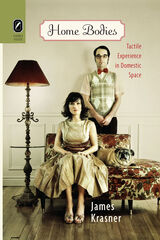 Home Bodies: Tactile Experience in Domestic Space
James Krasner
Ohio State University Press, 2010 How do acts of caring for the sick or grieving for the dead change the way we move through our living rooms and bedrooms? Why do elderly homeowners struggle to remain in messy, junk-filled houses? Why are we so attached to our pets, even when they damage and soil our living spaces? In Home Bodies: Tactile Experience in Domestic Space, James Krasner offers an interdisciplinary, humanistic investigation of the sense of touch in our experience of domestic space and identity. Accessing the work of gerontologists, neurologists, veterinarians, psychologists, social geographers, and tactual perception theorists to lay the groundwork for his experiential claims, he also ranges broadly through literary and cultural criticism dealing with the body, habit, and material culture. By demonstrating crucial links between domestic experience and tactile perception, Home Bodies investigates questions of identity, space, and the body. Krasner analyzes representations of tactile experience from a range of canonical literary works and authors, including the Bible, Sophocles, Marilynne Robinson, Charles Dickens, John Steinbeck, and Sylvia Plath, as well as a series of popular contemporary texts. This work will contribute to discussions of embodiment, space, and domesticity by literary and cultural critics, scholars in the medical humanities, and interdisciplinary thinkers from multiple fields.
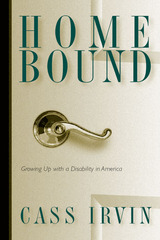 Home Bound: Growing Up With A Disability
Cass Irvin
Temple University Press, 2003 "When I was growing up, I learned that if you were a girl you went to school and college, then you married, became a wife and had a family. . . . When I became disabled, my journey, I was pretty sure, was not going to take me in those directions. What was I supposed to be? What kind of life was I supposed to have?"Once polio had made her a quadriplegic, Cass Irvin didn't know where she fit in or what would become of her. Neither did her parents, teachers, counselors, or rehabilitation therapists. And so began her search for a place to call home.In this memoir, Cass Irvin tells of the remarkable journey that transformed her from a young girl too timid to ask for help to a community activist and writer who speaks forcefully about the needs of people with disabilities. As a young girl she was taken to Warm Springs, Georgia, where she learned about living as a disabled person and found a hero in Franklin Delano Roosevelt, the famously if silently disabled president. Bright and inquisitive, Cass soon began to question the prevailing assumptions of a society that had no place for her and to question her own meekness.In time, her keen sense of injustice gave her the courage to fight for a college education. That personal victory emboldened her to find the means to live independently, but it also persuaded her that political work is the key to enabling all people with disabilities to live fulfilling lives. This book, then, is testimony to the importance of community building and organizing as well as the story of one woman's struggle for independence.
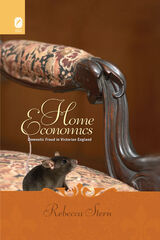 Home Economics: Domestic Fraud in Victorian England
Rebecca Stern
Ohio State University Press, 2008 In Home Economics: Domestic Fraud in Victorian England, Rebecca Stern establishes fraud as a basic component of the Victorian popular imagination, key to its intimate, as well as corporate, systems of exchange. Although Victorian England is famous for revering the domestic realm as a sphere separate from the market and its concerns, actual households were hardly isolated havens of fiscal safety and innocence. Rather, the Victorian home was inevitably a marketplace, a site of purchase, exchange, and employment in which men and women hired or worked as servants, contracted marriages, managed children, and obtained furniture, clothing, food, and labor. Alongside the multiplication of joint-stock corporations and the rise of a credit-based economy, which dramatically increased fraud in the Victorian money market, the threat of swindling affected both actual household commerce and popular conceptions of ostensibly private, more emotive forms of exchange. Working with diverse primary material, including literature, legal cases, newspaper columns, illustrations, ballads, and pamphlets, Stern argues that the climate of fraud permeated Victorian popular ideologies about social transactions. Beyond providing a history of cases and categories of domestic deceit, Home Economics illustrates the diverse means by which Victorian culture engaged with, refuted, celebrated, represented, and consumed swindling in familial and other household relationships.
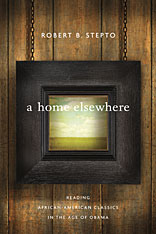 A Home Elsewhere: Reading African American Classics in the Age of Obama
Robert B. Stepto
Harvard University Press, 2010 In this series of interlocking essays, which had their start as lectures inspired by the presidency of Barack Obama, Robert Burns Stepto sets canonical works of African American literature in conversation with Obama’s Dreams from My Father. The elegant readings that result shed surprising light on unexamined angles of works ranging from Frederick Douglass’s Narrative to W. E. B. Du Bois’s Souls of Black Folk to Toni Morrison’s Song of Solomon.
Stepto draws our attention to the concerns that recur in the books he takes up: how protagonists raise themselves, often without one or both parents; how black boys invent black manhood, often with no models before them; how protagonists seek and find a home elsewhere; and how they create personalities that can deal with the pain of abandonment. These are age-old themes in African American literature that, Stepto shows, gain a special poignancy and importance because our president has lived through these situations and circumstances and has written about them in a way that refreshes our understanding of the whole of African American literature.
Stepto amplifies these themes in four additional essays, which investigate Douglass’s correspondence with Harriet Beecher Stowe; Willard Savoy’s novel Alien Land and its interracial protagonist; the writer’s understanding of the reader in African American literature; and Stepto’s account of his own schoolhouse lessons, with their echoes of Douglass’ and Obama’s experiences.
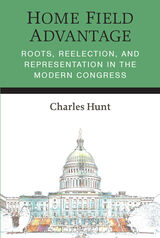 Home Field Advantage: Roots, Reelection, and Representation in the Modern Congress
Charles Hunt
University of Michigan Press, 2022 Although partisan polarization gets much of the attention in political science scholarship about Congress, members of Congress represent diverse communities around the country. Home Field Advantage demonstrates the importance of this understudied element of American congressional elections and representation in the modern era: the local, place-based roots that members of Congress have in their home districts. Charles Hunt argues that legislators’ local roots in their district have a significant and independent impact on their campaigns, election outcomes, and more broadly on the relationship between members of the U.S. House of Representatives and their constituents. Drawing on original data, his research reveals that there is considerable variation in election outcomes, performance relative to presidential candidates, campaign spending, and constituent communication styles that are not fully explained by partisanship, incumbency, or other well-established theories of American political representation. Rather, many of these differences are the result of the depth of a legislator’s local roots in their district that predate their time in Congress. Hunt lays out a detailed “Theory of Local Roots” and their influence in congressional representation, demonstrating this influence empirically using multiple original measures of local roots over a full cross-section of legislators and a significant period of time.
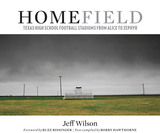 Home Field: Texas High School Football Stadiums from Alice to Zephyr
Photographs by Jeff Wilson
University of Texas Press, 2010 "The promise of an empty football field is an irresistible force for those who understand and revere the game," Jeff Wilson observes. Drawn by the sense of possibility and nostalgia inherent in every stadium, Wilson traveled the state of Texas to photograph high school stadiums for a photo essay that appeared in Texas Monthly in August 2005. The magazine's readers responded with an outpouring of enthusiasm, and Wilson's photo essay was nominated for a prestigious National Magazine Award. In Home Field, Wilson creates a unique photo portrait of nearly eighty Texas high school football stadiums, ranging from the bright lights, artificial turf, and seating for thousands at Southlake Carroll to the lone set of bleachers under the wide open sky in Veribest. Shot from the fifty-yard line facing the home stands, these photographs invite us to view each stadium from the same vantage point and experience it as an evocative place that holds a community's collective memories. Accompanying the photographs are reminiscences about the fields from players, coaches, team physicians, athletic directors, sportswriters and announcers, school superintendents, principals and teachers, band directors, maintenance workers, booster club parents, students, and fans. Their stories—whether funny, nostalgic, or poignant—reveal just how important high school football is to Texans and how it creates an unforgettable sense of community and camaraderie. Sure to bring back memories as soon as you open the book, Home Field captures what football is supposed to be—"simple and pure, like a perfect spiral arcing gracefully across the sky."
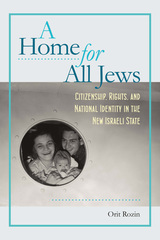 A Home for All Jews: Citizenship, Rights, and National Identity in the New Israeli State
Orit Rozin
Brandeis University Press, 2016 Orit Rozin’s inspired scholarship focuses on the construction and negotiation of citizenship in Israel during the state’s first decade. Positioning itself both within and against much of the critical sociological literature on the period, this work reveals the dire historical circumstances, the ideological and bureaucratic pressures, that limited the freedoms of Israeli citizens. At the same time it shows the capacity of the bureaucracy for flexibility and of the populace for protest against measures it found unjust and humiliating. Rozin sets her work within a solid analytical framework, drawing on a variety of historical sources portraying the voices, thoughts, and feelings of Israelis, as well as theoretical literature on the nature of modern citizenship and the relation between citizenship and nationality. She takes on both negative and positive freedoms (freedom from and freedom to) in her analysis of three discrete yet overlapping issues: the right to childhood (and freedom from coerced marriage at a tender age); the right to travel abroad (freedom of movement being a pillar of a liberal society); and the right to speak out—not only to protest without fear of reprisal, but to speak in the expectation of being heeded and recognized. This book will appeal to scholars and students of Israeli history, law, politics, and culture, and to scholars of nation building more generally.
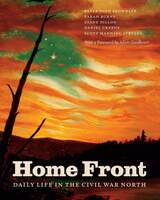 Home Front: Daily Life in the Civil War North
Peter John Brownlee, Sarah Burns, Diane Dillon, Daniel Greene, and Scott Manning Stevens
University of Chicago Press, 2013 More than one hundred and fifty years after Confederates fired on Fort Sumter, the Civil War still occupies a prominent place in the national collective memory. Paintings and photographs, plays and movies, novels, poetry, and songs portray the war as a battle over the future of slavery, often focusing on Lincoln’s determination to save the Union, or highlighting the brutality of brother fighting brother. Battles and battlefields occupy us, too: Bull Run, Antietam, and Gettysburg all conjure up images of desolate landscapes strewn with war dead. Yet the frontlines were not the only landscapes of the war. Countless civilians saw their daily lives upended while the entire nation suffered.
Home Front: Daily Life in the Civil War North reveals this side of the war as it happened, comprehensively examining the visual culture of the Northern home front. Through contributions from leading scholars from across the humanities, we discover how the war influenced household economies and the cotton economy; how the absence of young men from the home changed daily life; how war relief work linked home fronts and battle fronts; why Indians on the frontier were pushed out of the riven nation’s consciousness during the war years; and how wartime landscape paintings illuminated the nation’s past, present, and future.
A companion volume to a collaborative exhibition organized by the Newberry Library and the Terra Foundation for American Art, Home Front is the first book to expose the visual culture of a world far removed from the horror of war yet intimately bound to it.
 Home Front to Battlefront: An Ohio Teenager in World War II
Frank Lavin
Ohio University Press, 2016 Carl Lavin was a high school senior when Pearl Harbor was attacked. The Canton, Ohio, native was eighteen when he enlisted, a decision that would take him with the US Army from training across the United States and Britain to combat with the 84th Infantry Division in the Battle of the Bulge. Home Front to Battlefront is the tale of a foot soldier who finds himself thrust into a world where he and his unit grapple with the horrors of combat, the idiocies of bureaucracy, and the oddities of life back home—all in the same day. The book is based on Carl’s personal letters, his recollections and those of the people he served beside, official military history, private papers, and more. Home Front to Battlefront contributes the rich details of one soldier’s experience to the broader literature on World War II. Lavin’s adventures, in turn disarming and sobering, will appeal to general readers, veterans, educators, and students of the war. As a history, the book offers insight into the wartime career of a Jewish Ohioan in the military, from enlistment to training through overseas deployment. As a biography, it reflects the emotions and the role of the individual in a total war effort that is all too often thought of as a machine war in which human soldiers were merely interchangeable cogs.
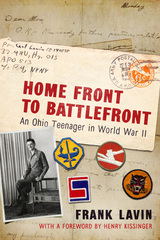 Home Front to Battlefront: An Ohio Teenager in World War II
Frank Lavin
Ohio University Press, 2001 Carl Lavin was a high school senior when Pearl Harbor was attacked. The Canton, Ohio, native was eighteen when he enlisted, a decision that would take him with the US Army from training across the United States and Britain to combat with the 84th Infantry Division in the Battle of the Bulge. Home Front to Battlefront is the tale of a foot soldier who finds himself thrust into a world where he and his unit grapple with the horrors of combat, the idiocies of bureaucracy, and the oddities of life back home—all in the same day. The book is based on Carl’s personal letters, his recollections and those of the people he served beside, official military history, private papers, and more. Home Front to Battlefront contributes the rich details of one soldier’s experience to the broader literature on World War II. Lavin’s adventures, in turn disarming and sobering, will appeal to general readers, veterans, educators, and students of the war. As a history, the book offers insight into the wartime career of a Jewish Ohioan in the military, from enlistment to training through overseas deployment. As a biography, it reflects the emotions and the role of the individual in a total war effort that is all too often thought of as a machine war in which human soldiers were merely interchangeable cogs.
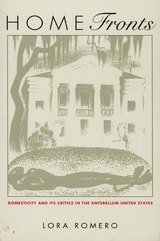 Home Fronts: Domesticity and Its Critics in the Antebellum United States
Lora Romero
Duke University Press, 1997 Unlike studies of nineteenth-century culture that perpetuate a dichotomy of a public, male world set against a private, female world, Lora Romero’s Home Fronts shows the many, nuanced, and sometimes contradictory cultural planes on which struggles for authority unfolded in antebellum America.
Romero remaps the literary landscape of the last century by looking at the operations of domesticity on the frontier as well as within the middle-class home and by reconsidering such crucial (if sometimes unexpected) sites for the workings of domesticity as social reform movements, African-American activism, and homosocial high culture. In the process, she indicts theories of the nineteenth century based on binarisms and rigidity while challenging models of power and resistance based on the idea that "culture" has the capacity to either free or enslave. Through readings of James Fenimore Cooper, Catherine Beecher, Harriet Beecher Stowe, Maria Stewart, and Nathaniel Hawthorne, Romero shows how the politics of culture reside in local formulations rather than in essential and ineluctable political structures.
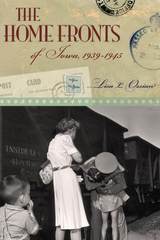 The Home Fronts of Iowa, 1939-1945
Lisa L. Ossian
University of Missouri Press, 2018 As Americans geared up for World War II, each state responded according to its economy and circumstances—as well as the disposition of its citizens. This book considers the war years in Iowa by looking at activity on different home fronts and analyzing the resilience of Iowans in answering the call to support the war effort. With its location in the center of the country, far from potentially threatened coasts, Iowa was also the center of American isolationism—historically Republican and resistant to involvement in another European war. Yet Iowans were quick to step up, and Lisa Ossian draws on historical archives as well as on artifacts of popular culture to record the rhetoric and emotion of their support. Ossian shows how Iowans quickly moved from skepticism to overwhelming enthusiasm for the war and answered the call on four fronts: farms, factories, communities, and kitchens. Iowa’s farmers faced labor and machinery shortages, yet produced record amounts of crops and animals—even at the expense of valuable topsoil. Ordnance plants turned out bombs and machine gun bullets. Meanwhile, communities supported war bond and scrap drives, while housewives coped with rationing, raised Victory gardens, and turned to home canning. The Home Fronts of Iowa, 1939–1945 depicts real people and their concerns, showing the price paid in physical and mental exhaustion and notes the heavy toll exacted on Iowa’s sons who fell in battle. Ossian also considers the relevance of such issues as race, class, and gender—particularly the role of women on the home front and the recruitment of both women and blacks for factory work—taking into account a prevalent suspicion of ethnic groups by the state’s largely homogeneous population. The fact that Iowans could become loyal citizen soldiers—forming an Industrial and Defense Commission even before Pearl Harbor—speaks not only to the patriotism of these sturdy midwesterners but also to the overall resilience of Americans. In unraveling how Iowans could so overwhelmingly support the war, Ossian digs deep into history to show us the power of emotion—and to help us better understand why World War II is consistently remembered as “the Good War.”
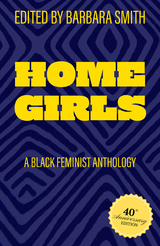 Home Girls, 40th Anniversary Edition: A Black Feminist Anthology
Barbara Smith
Rutgers University Press, 2024 Home Girls, the pioneering anthology of Black feminist thought, features writing by Black feminist and lesbian activists on topics both provocative and profound. Since its initial publication in 1983, it has become an essential text on Black women's lives and contains work by many of feminism's foremost thinkers. This edition features an updated list of contributor biographies and an all-new preface that provides Barbara Smith the opportunity to look back on forty years of the struggle, as well as the influence the work in this book has had on generations of feminists. The preface from the previous Rutgers edition remains, as well as all of the original pieces, set in a fresh new package.
Contributors: Tania Abdulahad, Donna Allegra, Barbara A. Banks, Becky Birtha, Cenen, Cheryl Clarke, Michelle Cliff, Michelle T. Clinton, Willi (Willie) M. Coleman, Toi Derricotte, Alexis De Veaux, Jewelle L. Gomez, Akasha (Gloria) Hull, Patricia Spears Jones, June Jordan, Audre Lorde, Raymina Y. Mays, Deidre McCalla, Chirlane McCray, Pat Parker, Linda C. Powell, Bernice Johnson Reagon, Spring Redd, Gwendolyn Rogers, Kate Rushin, Ann Allen Shockley, Barbara Smith, Beverly Smith, Shirley O. Steele, Luisah Teish, Jameelah Waheed, Alice Walker, and Renita J. Weems.
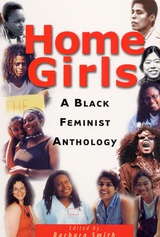 Home Girls: A Black Feminist Anthology
Smith, Barbara
Rutgers University Press, 2000
The pioneering anthology Home Girls features writings by Black feminist and lesbian activists on topics both provocative and profound. Since its initial publication in 1983, it has become an essential text on Black women's lives and writings. This edition features an updated list of contributor biographies and an all-new preface that provides a fresh assessment of how Black women's lives have changed-or not-since the book was first published.
Contributors are Tania Abdulahad, Donna Allegra, Barbara A. Banks, Becky Birtha, Julie Carter, Cenen, Cheryl Clarke, Michelle Cliff, Michelle T. Clinton, Willie M. Coleman, Toi Derricotte, Alexis De Veaux, Jewelle L. Gomez, Akasha (Gloria) Hull, Patricia Jones, June Jordan, Audre Lorde, Raymina Y. Mays, Deidre McCalla, Chirlane McCray, Pat Parker, Linda C. Powell, Bernice Johnson Reagon, Spring Redd, Gwendolyn Rogers, Kate Rushin, Ann Allen Shockley, Barbara Smith, Beverly Smith, Shirley O. Steele, Luisah Teish, Jameelah Waheed, Alice Walker, and Renita Weems.
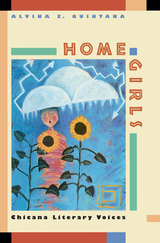 Home Girls: Chicana Literary Voices
Alvina E. Quintana
Temple University Press, 1996 "Home Girls makes an original, bold, and significant contribution to feminist studies, Chicana/o studies, and literature. Quintana accomplishes what few critics in Chicana/o studies have done: she applies different interpretive paradigms to her reading of Chicana texts, blending ethnography with literary criticism, ideological analysis with semiotics. Her reading of literary texts is rich in texture and detail."
--Rosa Linda Fregoso, author of Bronze Screen: Chicana and Chicano Film Culture
Chicana writers in the United States write to inspire social change, to challenge a patriarchal and homophobic culture, to redefine traditional gender roles, to influence the future. Alvina E. Quintana examines how Chicana writers engage literary convention through fiction, poetry, drama, and autobiography as a means of addressing these motives.
Her analysis of the writings of Gloria Anzaldua, Ana Castillo, Denise Chavez, Sandra Cisneros, and Cherrie Moraga addresses a multitude of issues: the social and political forces that influenced the Chicana aesthetic; Chicana efforts to open a dialogue about the limitation of both Anglo-American feminism and Chicano nationalism; experimentations with content and form; the relationship between imaginative writing and self-reflexive ethnography; and performance, domesticity, and sexuality.
Employing anthropological, feminist, historical, and literary sources, Quintana explores the continuity found among Chicanas writing across varied genres--a drive to write themselves into being.
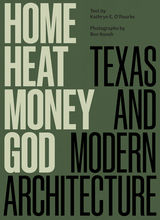 Home, Heat, Money, God: Texas and Modern Architecture
Text by Kathryn E. O’Rourke, Photographs by Ben Koush
University of Texas Press, 2024 Thematically focused analysis of modern architecture throughout Texas with gorgeous photographs illustrating works by famous and lesser-known architects. In the mid-twentieth century, dramatic social and political change coincided with the ascendance and evolution of architectural modernism in Texas. Between the 1930s and 1980s, a state known for cowboys and cotton fields rapidly urbanized and became a hub of global trade and a heavyweight in national politics. Relentless ambition and a strong sense of place combined to make Texans particularly receptive to modern architecture’s implication of newness, forward-looking attitude, and capacity to reinterpret historical forms in novel ways. As money and people poured in, architects and their clients used modern buildings to define themselves and the state. Illustrated with stunning photographs by architect Ben Koush, Home, Heat, Money, God analyzes buildings in big cities and small towns by world-famous architects, Texas titans, and lesser-known designers. Architectural historian Kathryn O’Rourke describes the forces that influenced architects as they addressed basic needs—such as staying cool in a warming climate and living in up-to-date housing—and responded to a culture driven by potent religiosity, by the countervailing pressures of pluralism and homogenization, and by the myth of Texan exceptionalism.
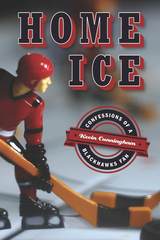 Home Ice: Confessions of a Blackhawks Fan
Kevin Cunningham
University of Iowa Press, 2017 Unable to skate and surrounded by sports fans who cared more about Evel Knievel than hockey, Kevin Cunningham became obsessed with the Chicago Blackhawks as a confused eight year old. He has no idea why. Yet from that moment on he embarked on a fan’s journey that absorbed his childhood, destroyed his GPA, and made him seriously weigh romance against an away game at Calgary. What explains this fascination?
Home Ice combines memoir and history to explore how the mysteries of Blackhawks fandom explain big questions like tribal belonging, masculinity, and why you would ever trade Chris Chelios. In recounting the team’s—and his own—wins and losses (and ties), Cunningham covers everything from Keith Magnuson’s bachelor pad to the grim early aughts to Patrick Kane’s Cup-winner. Throughout, he explores how we come to love the things we love. Funny and touching, Home Ice is one Blackhawk fan’s attempt to understand why sports fandom is utterly ridiculous and entirely necessary.
 Home in America: On Loss and Retrieval
Thomas Dumm
Harvard University Press, 2019 An extraordinary inquiry into the meaning of home, through explorations literary and political, philosophical and deeply personal, by the acclaimed author of Loneliness as a Way of Life.
Home as an imagined refuge. Home as a place of mastery and domination. Home as a destination and the place we try to escape from. Thomas Dumm explores these distinctively American understandings of home. He takes us from Thomas Jefferson’s Monticello and Henry David Thoreau’s Walden to Laura Ingalls Wilder’s little house on the prairie and Emily Dickinson’s homestead, and finally to the house Herman Wallace imagined and that sustained him during his forty-one years of solitary confinement at Angola State Penitentiary.
Dumm argues that it is impossible to separate the comforting and haunting aspects of home. Each chapter reveals a different dimension of the American experience of home: slavery at Monticello, radical individuality at Walden, Indian-hating in the pioneer experience, and the power of remembering and imagining home in extreme confinement as a means of escape. Hidden in these homes are ghosts—enslaved and imprisoned African Americans, displaced and massacred Native Americans, subordinated homemakers, all struggling to compose their lives in a place called home.
Framed by a prologue on Dad and an epilogue on Mom, in which the author reflects on his own experiences growing up in western Pennsylvania with young parents in a family of nine children, Home in America is a masterful meditation on the richness and poverty of an idea that endures in the world we have made.
 Home in the Dark: Selected Stories
Jayanta Dey
Seagull Books, 2025 When civility is just a mask, what happens when it slips? This collection of gripping stories pries open the cracks in urban life, revealing the chaos and cruelty beneath.
Home in the Dark peels back the polished surface of middle-class life to expose the shadows lurking underneath: violence, betrayal, and the unsettling truths we refuse to see. In these fifteen gripping stories, Jayanta Dey weaves a world where desperation takes strange forms: a woman on the brink of suicide finds an unlikely savior in a rat, a stolen clock carries the weight of communal hatred, and a writer–publisher duo rides the highs of literary success—until their lucrative business in pornography turns against them.
Set in Calcutta and its suburbs, these tales decipher the moral and psychological conflicts simmering beneath genteel facades, where people will do anything to survive. With elements of the macabre and the psychological, Home in the Dark delivers sharp twists that unsettle as much as they illuminate. Translated from Bengali by Sayari Debnath, this collection brings a new and daring voice to readers, offering a rare glimpse into the dark undercurrents of contemporary urban life in India.
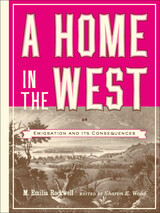 A Home in the West: Or, Emigration and Its Consequences
Rockwell, M. Emilia
University of Iowa Press, 2005 This is the first novel published in Iowa. Printed in Dubuque in 1858, it was written to recruit emigrants to Iowa; what makes it unique among emigration literature is the fact that it was directed at women, using the form of a domestic novel loaded with gentle mothers and stalwart fathers, flower-gemmed prairies and vine-draped cottages, and lots of tender words and humble weddings to encourage women to settle in the new state. Mary Emilia Rockwell tells the story of Walter and Annie Judson, who one desperate March night decide to move to the West in search of a better life. Walter is an exploited, debt-ridden carpenter who knows that “if we could go to the West, to one of those new States where work is plenty, wages high and land cheap, we could make a more comfortable living, and besides soon have a home of our own.” Annie has “all a woman’s devotion and self-denial”; loving and supportive, she takes the path of duty and moves her little family to “a pleasant little village in Iowa.” In Newburg, everyone is newly arrived, hard-working, and self-sacrificing, facing difficulties with the certainty of prosperity and independence to come. In spite of dramatic setbacks, Walter prospers, and he and Annie build a “beautiful and commodious” house in the growing community of Hastings. The book ends with a return visit to Connecticut, where the Judsons and a series of surprising events persuade Annie’s parents to move to Iowa too, and everyone is reunited in their home in the West. Teacher, administrator, and writer Emilia Rockwell (born about 1835, died about 1915) writes a conventionally sentimental story. However, she actually divorced her first husband, became the administrator of a juvenile reformatory in Milwaukee, and married a second time; she lived in Lansing, Iowa, for only a few years. Her writing is romantic, but she accurately portrays the economic challenges and transformations of this pioneer period and, historically, touches upon the Panic of 1857, the Mormon Handcart Expedition, and Native Americans in Iowa. Sharon Wood’s illuminating introduction presents Rockwell's biography and places the novel in its historical and literary contexts, including such events as the Spirit Lake massacre and the Dred Scott decision. A Home in the West is a satisfying read and an intriguing combination of boosterism and literature
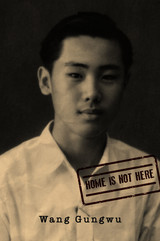 Home Is Not Here
Wang Gungwu
National University of Singapore Press, 2018 A fascinating reflection on family, identity, and belonging.
As someone who has studied history for much of my life, I have found the past fascinating. But it has always been some grand and even intimidating universe that I wanted to unpick and explain to myself.
Wang Gungwu is one of Asia’s most important public intellectuals. He is best known for his explorations of Chinese history in the long view and for his writings on the Chinese diaspora. With Home is Not Here, the historian of grand themes turns to a single life history: his own.
Wang writes about his multicultural upbringing and life under British rule. He was born in Surabaya, Java, but his parents’ orientation was always to China. Wang grew up in the plural, multi-ethnic town of Ipoh, Malaya (now Malaysia). He learned English in colonial schools and was taught the Confucian classics at home. After the end of WWII and the Japanese occupation, he left for the National Central University in Nanjing to study alongside some of the finest of his generation of Chinese undergraduates. The victory of Mao Zedong’s Communist Party interrupted his education, and he ends this volume with his return to Malaya.
Wise and moving, Home Is Not Here speaks to the ability of the individual to find a place amid the historical currents that have shaped Asia and the world.
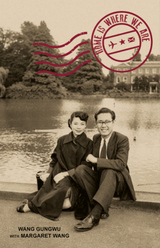 Home Is Where We Are
Wang Gungwu and Margaret Wang
National University of Singapore Press, 2020 Does home have to be a country or a city?... Or is home this house or that? We have been fortunate.... We seemed always to have been home.
Wang Gungwu’s account of his university education in Singapore and the UK, and the early years of his career as an academic in Malaysia captures the excitement, the ambition, and the choices of a generation that saw it their responsibility to build the new nations of Southeast Asia.
The exploration of the emotional and intellectual journey towards the formation of an identity, treasured by readers of Wang's Home Is Not Here, extends in this volume into an appreciation of love, family life, and the life of the mind. We also see these years from Margaret’s perspective, her own fascinating family story, and her early impressions of this young bearded poet. Wise and moving, this is a fascinating reflection on identity and belonging, and on the ability of the individual to find a place amidst the historical currents that have shaped Asia.
Home Is Where Your Politics Are: Queer Activism in the U.S. South and South Africa
Jessica A. Scott
Rutgers University Press, 2024 Home Is Where Your Politics Are is a transnational consideration of queer and trans activism in the US South and South Africa. Through ethnographic exploration of queer and trans activist work in both places, Jessica Scott paints a vibrant picture of what life is like in relation to a narrative that says that queer life is harder, if not impossible, in rural areas and on the African continent. The book asks questions like, what do activists in these places care about and how do stories about where they live get in the way of the life they envision for the queer and trans people for whom they advocate? Answers to these questions provide insight that only these activists have, into the complexity of locally based advocacy strategies in a globalized world.
The Home Jar: Stories
Nancy Zafris
Northern Illinois University Press, 2013 Nancy Zafris is a critically acclaimed writer because of the highly distinctive, piercing intelligence that underlies her works. Her gifts accumulate in a vision that somehow combines just the right amount of irony, subtle humor, and compassion for characters you won’t see anywhere else in contemporary fiction. Those characters are emotionally all over the map too: resolute, sympathetic, and indelible—their stories can be laugh-out-loud funny one minute and bittersweet the next. In The Home Jar, Zafris reconfirms herself to be among the keenest observers of the human condition around. This is her first short story collection since the critically acclaimed The People I Know, which won the Flannery O’Connor Award for Short Fiction, and her most famous work, the New York Times notable novel The Metal Shredders. Zafris’s very loyal following of readers will herald The Home Jar as a major event in American letters.
Home Material: Ohio's Nineteenth-Century Regional Women's Fiction
Sandra Parker
University of Wisconsin Press, 1998 This chronologically selected anthology of fiction by eight Ohio women makes accessible a literary tradition that begins with lost aspects of frontier life in the 1830s depicted by contemporaries Julia L. Dumont and Pamilla W. Ball. It ends with Jessie Brown Pounds’s retrospective recreation of the Western Reserve’s frontier culture at the century’s close.
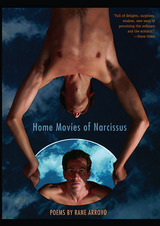 Home Movies of Narcissus
Rane Arroyo
University of Arizona Press, 2002 A first-generation Latino born in Chicago, Rane Arroyo is a leading poeta puertorriqueño and playwright whose readership transcends his ethnicity. In Home Movies of Narcissus, his fourth collection of poetry, he writes more deliberately and with greater assurance of his search for identity—both cultural/racial and gender/sexual—and his discovery of it within family and community.
Using sophisticated language to inspect life from barrio childhood to cosmopolitan manhood, Arroyo explores themes of gay strength and alienation, linked to his experiences as both a Puerto Rican and an intellectual. Through a variety of approaches, he examines a major recurrent Latino paradox: the need to write about Latino issues while being criticized for being too self-centered.
Sometimes reserved, sometimes passionate, Arroyo writes with humor and a remarkable quickness of association, moving with a grace that makes seamless use of speech ranging from the formal to the vernacular. Taking in love and sexuality, world literature and history, and the exile's heritage of a shifting geography of identity, he invokes remarkable imagery with language that is economical, fresh, and mischievous. Some of Arroyo's poems take an autobiographical approach and show how poets have both the luxury and necessity of speaking for those in their lives.
Others create personas that take in the American experience from a variety of viewpoints—including gays, who are often marginalized by the larger Latino community. "The Ponce de León Poems" pit the poet against a ghost who seeks to direct his writing, while a final section, "The Black Moon Poems," deals with the many sleepless nights that Arroyo has spent struggling with questions over the worth of his art and whether he has betrayed those he loves by writing-or not writing-about them. "In his home movies," he writes, "Narcissus is both the seen and the seer." As Arroyo's insightful words demonstrate, the writer must come to value his own image but not fall in love with it, for it will change, age, and, if he is fortunate, finally grow wise. As readers will discover in Home Movies of Narcissus, Rane Arroyo has seen past the mirror and charted a new territory of self-discovery.
The Home, Nations and Empires, and Ephemeral Exhibition Spaces: 1750-1918
Dominique Bauer
Amsterdam University Press, 2021 This book explores ephemeral exhibition spaces between 1750 and 1918. The chapters focus on two related spaces: the domestic interior and its imagery, and exhibitions and museums that display both national/imperial identity and the otherness that lurks beyond a country’s borders. What is revealed is that the same tension operates in these private and public realms; namely, that between identification and self-projection, on the one hand, and alienation, otherness and objectification on the other. In uncovering this, the authors show that the self, the citizen/society and the other are realities that are constantly being asserted, defined and objectified. This takes place, they demonstrate, in a ceaseless dynamic of projection versus alienation, and intimacy versus distancing.
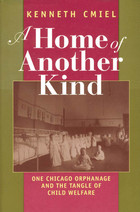 A Home of Another Kind: One Chicago Orphanage and the Tangle of Child Welfare
Kenneth Cmiel
University of Chicago Press, 1995 In the most comprehensive account ever written of an American orphanage, an institution about which even its many new advocates and experts know little, Kenneth Cmiel exposes America's changing attitudes toward child welfare.
The book begins with the fascinating history of the Chicago Nursery and Half-Orphan Asylum from 1860 through 1984, when it became a full-time research institute. Founded by a group of wealthy volunteers, the asylum was a Protestant institution for Protestant children—one of dozens around the country designed as places where single parents could leave their children if they were temporarily unable to care for them.
But the asylum, which later became known as Chapin Hall, changed dramatically over the years as it tried to respond to changing policies, priorities, regulations, and theories concerning child welfare. Cmiel offers a vivid portrait of how these changes affected the day-to-day realities of group living. How did the kind of care given to the children change? What did the staff and management hope to accomplish? How did they define "family"? Who were the children who lived in the asylum? What brought them there? What were their needs? How did outside forces change what went on inside Chapin Hall?
This is much more than a richly detailed account of one institution. Cmiel shatters a number of popular myths about orphanages. Few realize that almost all children living in nineteenth-century orphanages had at least one living parent. And the austere living conditions so characteristic of the orphanage were prompted as much by health concerns as by strict Victorian morals.
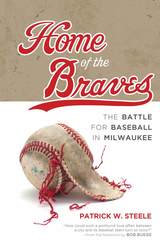 Home of the Braves: The Battle for Baseball in Milwaukee
Patrick W. Steele
University of Wisconsin Press, 2020 When the struggling Boston Braves relocated to Milwaukee in March 1953, the city went wild for its new baseball team. Soon, the Braves were winning games, drawing bigger crowds than any team but the Brooklyn Dodgers, and turning Hank Aaron, Eddie Mathews, and Warren Spahn into Hall of Famers. Within five years the team would win a World Series and two pennants.
It seemed the dawn of a new dynasty. Impassioned fans wore their hearts on their sleeves. Yet in October 1964 team owners made a shocking announcement: the Braves were moving to Atlanta.
In the decades since, many have tried to understand why the Braves left Milwaukee. Fans blamed greedy owners and the lure of Coca Cola cash. Team management claimed they weren't getting enough local support. Patrick Steele delves deeply into all facets of the story, looking at the changing business of baseball in the 1960s, the interactions of the team owners with the government officials who controlled County Stadium, the surging success of the Green Bay Packers, and much more, to understand how the "Milwaukee Miracle" went south.
 A Home of the Humanities: The Collecting and Patronage of Mildred and Robert Woods Bliss
James N. Carder
Harvard University Press, 2010 Mildred and Robert Woods Bliss were consummate collectors and patrons. After purchasing Dumbarton Oaks in 1920, they significantly redesigned the house and its interiors, built important new structures, added over fifty acres of planned gardens, hosted important musical evenings and intellectual discussions in their Music Room, and acquired a world-class art collection and library.
The illustrated essays in this volume reveal how the Blisses’ wide-ranging interests in art, music, gardens, architecture, and interior design resulted in the creation of the Dumbarton Oaks Research Library and Collection. Their collections of Byzantine and Pre-Columbian art and rare garden books and drawings are examined by Robert Nelson, Julie Jones, and Therese O’Malley, respectively. James Carder provides the Blisses’ biography and discusses their patronage of various architects, including Philip Johnson, and the interior designer Armand Albert Rateau. The Blisses’ collaboration with Beatrix Farrand on the creation of the Dumbarton Oaks Gardens is recounted by Robin Karson, and their commission of Igor Stravinsky’s Dumbarton Oaks Concerto and its premiere by Nadia Boulanger is examined by Jeanice Brooks. The volume demonstrates that every aspect of the Blisses’ collecting and patronage had a place in the creation of what they came to call their “home of the humanities.”
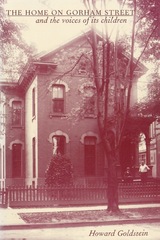 The Home on Gorham Street and the Voices of Its Children
Howard Goldstein
University of Alabama Press, 1996 The Home on Gorham Street looks back to an earlier era of care for orphaned and dependent children of Eastern European Jewish immigrants. Within this social history and ethnography, the voices of elders once wards of the home in the 1930s and 1940s tell us in sometimes poetic, often comic, usually ironic, and always poignant words what it was really like to grow up in an orphanage. Emerging from this penetrating adventure are principles for the future of effective group care in meeting
the needs of the rapidly growing number of abused, forsaken, and orphaned children.
Goldstein's ethnography demonstrates amply that children who spend years in an institution can go on to lead productive lives under certain conditions. Such conditions may never have been met in any other children's institution. That they did exist one time, however, is cause not only to rejoice but also to understand that recreating these conditions is difficult and possibly impossible.
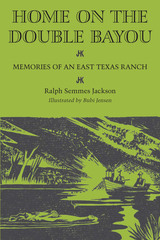 Home on the Double Bayou: Memories of an East Texas Ranch
By Ralph Semmes Jackson
University of Texas Press, 1961 Once again, through a boy’s eyes, Ralph Jackson sees a winter sky darkened with geese and ducks, a kitchen stove glowing with cheerful warmth, Aunt May strolling in her flower garden, moonlight filtering through treetops to cast patches of white light on a sandy woodland road. Again he catches odors once so familiar: of a mysterious attic, of burning salt grass in late summer, of mountain streams with their fresh green smell, of dark-roast coffee and of slab bacon sizzling in the pan. He hears again a panther’s scream from the darkness surrounding a campfire, the scampering of mice across the barnloft floor, the sigh of a felled pine tree changing to a crashing roar as it meets the ground, the sounds of a meal in preparation, the hum of a mosquito swarm rising from the marshes. He remembers the taste of barbecued goat, the sweet sharpness of peppermint candy, the flavor of gumdrops from the country store—where, as showcase neighbors of cigars and chewing tobacco, they acquired a faint tobacco taste. And he feels again the welcome shock of frigid spring water on a hot perspiring body, the pleasant sensation of sand between his toes, the breathtaking exhilaration of swinging on a sapling top. The joy of childhood on an East Texas ranch is the subject of this book: exciting events like the arrival of the first norther of the season, swimming with alligators, hogkilling, building tree houses, roundup, hunting and fishing, calf-riding, fording strange streams. Interspersed among these episodes are others of darker mood: a smallpox epidemic, the burning of the ranch house, wolves attacking the cattle. Jackson’s characters come alive. Scenes are vivid; moods are various and enveloping. The author has told the delightful story of his boyhood from a highly personal yet universal perspective, and in doing so he has presented a picture of a region of the state previously largely neglected in Texas literature.
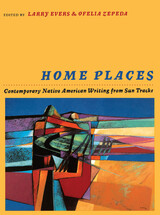 Home Places: Contemporary Native American Writing from Sun Tracks
Edited by Larry Evers and Ofelia Zepeda
University of Arizona Press, 1995 What has nourished native peoples on this continent since time immemorial, say the editors of this volume, are wellsprings of creativity. "Down at the source," Havasupai singer Dan Hanna assures us, "a spring will always be there." The creative wellspring of American Indian culture is well represented in this anthology, a compilation of stories, songs, poems, and other writings taken from twenty-five years of Sun Tracks: An American Literary Series. Editors Larry Evers and Ofelia Zepeda have gathered the contributions of nineteen Native Americans in compiling this collection.
Some are stories from oral traditions, others are autobiographical writings, and some are songs or poems. But all are contemporary, and all have as a unifying element a strong central theme in Native American writing: home places. Some of the contributors define the home place as a center of established values, while others speak of its cultural or physical geography. Healing powers are often found at home places. Home is a place to defend against those who would reduce it to insignificance, a place to reclaim, or a place reclaimed but not yet realized.
One writer recalls a home that must be pulled from deep beneath the waters of the Columbia River. By listening to these stories of home places, the reader can gain a new appreciation of the contemporary verbal expressions of Native American communities. Home Places, note the editors, "asks you to listen to Native American signers, storytellers, and writers, and in this way to celebrate the wellsprings of creativity that continue to flow from the home places in Native America."
The Home Plot: Women, Writing, and Domestic Ritual
Ann Romines
University of Massachusetts Press, 1992 In this finely crafted study, Ann Romines builds on twenty years of feminist scholarship to show how domestic ritual--the practice and tradition of housekeeping--has helped shape the substance and tone of some of the best fiction by American women. Examining works by Harriet Beecher Stowe, Sarah Orne Jewett, Mary Wilkins Freeman, Willa Cather, and Eudora Welty, Romines argues that one cannot fully appreciate this writing unless one understands the domestic codes in which it is inscribed.
By reading domestic ritual as a gendered language, Romines seeks to reclaim one of the oldest female traditions--housekeeping--from trivialization and devaluation. In the process, she brings fresh insight to the work of five important American novelists.
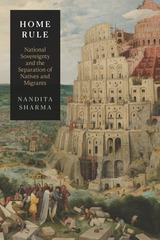 Home Rule: National Sovereignty and the Separation of Natives and Migrants
Nandita Sharma
Duke University Press, 2020 In Home Rule Nandita Sharma traces the historical formation and political separation of Natives and Migrants from the nineteenth century to the present to theorize the portrayal of Migrants as “colonial invaders.” The imperial-state category of Native, initially a mark of colonized status, has been revitalized in what Sharma terms the Postcolonial New World Order of nation-states. Under postcolonial rule, claims to autochthony—being the Native “people of a place”—are mobilized to define true national belonging. Consequently, Migrants—the quintessential “people out of place”—increasingly face exclusion, expulsion, or even extermination. This turn to autochthony has led to a hardening of nationalism(s). Criteria for political membership have shrunk, immigration controls have intensified, all while practices of expropriation and exploitation have expanded. Such politics exemplify the postcolonial politics of national sovereignty, a politics that Sharma sees as containing our dreams of decolonization. Home Rule rejects nationalisms and calls for the dissolution of the ruling categories of Native and Migrant so we can build a common, worldly place where our fundamental liberty to stay and move is realized.
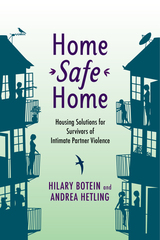 Home Safe Home: Housing Solutions for Survivors of Intimate Partner Violence
Botein, Hilary
Rutgers University Press, 2016 Housing matters for everyone, as it provides shelter, security, privacy, and stability. For survivors of intimate partner violence (IPV), housing takes on an additional meaning; it is the key to establishing a new life, free from abuse. IPV survivors often face such inadequate housing options, however, that they must make excruciating choices between cycling through temporary shelters, becoming homeless, or returning to their abusers. Home Safe Home offers a multifaceted analysis that accounts for both IPV survivors’ needs and the practical challenges involved in providing them with adequate permanent housing. Incorporating the varied perspectives of the numerous housing providers, activists, policymakers, and researchers who have a stake in these issues, the book also lets IPV survivors have their say, expressing their views on what housing and services can best meet their short and long-term goals. Researchers Hilary Botein and Andrea Hetling not only examine the federal and state policies and funding programs determining housing for IPV survivors, but also provide detailed case studies that put a human face on these policy issues. As it traces how housing options and support mechanisms for IPV survivors have evolved over time, Home Safe Home also offers innovative suggestions for how policymakers and advocates might work together to better meet the needs of this vulnerable population.
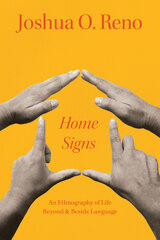 Home Signs: An Ethnography of Life beyond and beside Language
Joshua O. Reno
University of Chicago Press, 2024 An intimate account of an anthropologist’s relationship with his non-verbal son and how it has shaped and transformed his understanding of closeness and communication.
Home Signs grew out of the anthropologist Joshua Reno’s experience of caring for and trying to communicate with his teenage son, Charlie, who cannot speak. To manage interactions with others, Charlie uses what are known as “home signs,” gestures developed to meet his need for expression, ranging from the wiggle of a finger to a subtle sideways glance. Though he is nonverbal, he is far from silent: in fact, he is in constant communication with others.
In this intimate reflection on language, disability, and togetherness, the author invites us into his and Charlie’s shared world. Combining portraits of family life and interviews with other caregivers, Reno upends several assumptions, especially the idea that people who seem not to be able to speak for themselves need others to speak on their behalf. With its broad exploration of nonverbal communication in both human and nonhuman contexts, Home Signs challenges us to think harder about what it means to lead a “normal” life and to connect with another person.
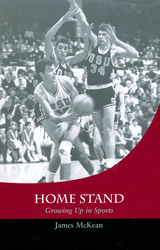 Home Stand: Growing Up in Sports
James McKean
Michigan State University Press, 2005 If he had not fouled out, maybe Washington State University’s center, James McKean, might have held Lew Alcindor (now Kareem Abdul-Jabbar) to only forty points. It was 1967, a transition year for college athletics in a dramatic time for those coming ofage. In this memoir set in the 1950s and 1960s, McKean revisits his years growing up in a family dedicated to sports and the outdoors, his playing basketball at Washington State University (for coaches Marv Harshman and Jud Heathcote), and his fashioning a life during and after basketball.
Driven by the energy and spirit of athletics, the language in Home Stand lights up McKean’s wonderfully eclectic work—the aunt who won a bronze medal in the 1936 Olympics in Berlin, his last run as a misguided drag racer, his playing basketball for a washing machine factory in Bologna, Italy, or against the prisoners in Walla Walla State Penitentiary—all seen in the context of turbulent times. Needless to say, Lew Alcindor scored his points and UCLA won, which they did every game that season. What James McKean took home was five fouls and a good story.
Home Stand delivers a lyrical, thoughtful reflection of what it is to be an athlete—inside as well as outside the game—and how one man’s love of basketball evolved into a love of poetry, "good turns of speech," writing, and teaching.
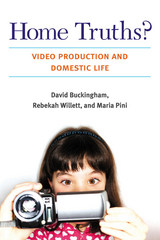 Home Truths?: Video Production and Domestic Life
David Buckingham, Rebekah Willett, and Maria Pini
University of Michigan Press, 2011 Over the past decade, the video camera has become a commonplace household technology. With falling prices on compact and easy-to-use cameras, as well as mobile phones and digital still cameras with video recording capabilities, access to moving image production technology is becoming virtually universal. Home Truths? represents one of the few academic research studies exploring this everyday, popular use of video production technology, looking particularly at how families use and engage with the technology and how it fits into the routines of everyday life. The authors draw on interviews, observations, and the participants' videos themselves, seeking to paint a comprehensive picture of the role of video making in their everyday lives. While readers gain a sense of the individual characters involved in the project and the complexities and diversities of their lives, the analysis also raises a range of broader issues about the nature of learning and creativity, subjectivity and representation, and the "domestication" of technology---issues that are of interest to many in the fields of sociology and media/cultural studies. David Buckingham is Professor of Education at the Institute of Education, University of London, and Director of the Institute's Centre for the Study of Children, Youth and Media. Rebekah Willett is Lecturer at the Institute of Education, University of London, where she teaches in Media, Culture and Communication. Maria Pini previously worked as Lecturer in Media and Communications at Goldsmiths College, London University, and is now a researcher on the Camcorder Cultures project at the Institute of Education. Cover art: Young videomaker ©iStockphoto.com/ kaisersosa67 Technologies of the Imagination: New Media in Everyday Life digitalculturebooks is an imprint of the University of Michigan Press and the Scholarly Publishing Office of the University of Michigan Library dedicated to publishing innovative and accessible work exploring new media and their impact on society, culture, and scholarly communication. Visit the website at www.digitalculture.org.
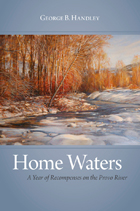 Home Waters: A Year of Recompenses on the Provo River
George B Handley
University of Utah Press, 2010 People who flyfish know that a favorite river bend, a secluded spot in moving waters, can feel like home—a place you know intimately and intuitively. In prose that reads like the flowing current of a river, scholar and essayist George Handley blends nature writing, local history, theology, environmental history, and personal memoir in his new book Home Waters: A Year of Recompenses on the Provo River.
Handley’s meditations on the local Provo River watershed present the argument that a sense of place requires more than a strong sense of history and belonging, it requires awareness and commitment. Handley traces a history of settlement along the Provo that has profoundly transformed the landscape and yet neglected its Native American and environmental legacies. As a descendent of one of the first pioneers to irrigate the area, and as a witness to the loss of orchards, open space, and an eroded environmental ethic, Handley weaves his own personal and family history into the landscape to argue for sustainable belonging. In avoiding the exclusionist and environmentally harmful attitudes that come with the territorial claims to a homeland, the flyfishing term, “home waters,” is offered as an alternative, a kind of belonging that is informed by deference to others, to the mysteries of deep time, and to a fragile dependence on water. While it has sometimes been mistakenly assumed that the Mormon faith is inimical to good environmental stewardship, Handley explores the faith’s openness to science, its recognition of the holiness of the creation, and its call for an ethical engagement with nature. A metaphysical approach to the physical world is offered as an antidote to the suicidal impulses of modern society and our persistent ambivalence about the facts of our biology and earthly condition. Home Waters contributes a perspective from within the Mormon religious experience to the tradition of such Western writers as Wallace Stegner, Terry Tempest Williams, Steven Trimble, and Amy Irvine.
Winner of the Mormon Letters Award for Memoir.
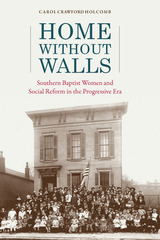 Home without Walls: Southern Baptist Women and Social Reform in the Progressive Era
Carol Crawford Holcomb
University of Alabama Press, 2020 A critical examination of the Woman’s Missionary Union and how it shaped the views of Southern Baptist women
The Woman’s Missionary Union (WMU), founded in 1888, carved out a uniquely feminine space within the Southern Baptist Convention during the tumultuous years of the Progressive Era when American theologians were formulating the social gospel. These women represented the Southern Baptist elite and as such had the time to read, write, and discuss ideas with other Southern progressives. They rubbed shoulders with more progressive Methodist and Presbyterian women in clubs and ecumenical missionary meetings. Baptist women studied the missionary publications of these other denominations and adopted ideas for a Southern Baptist audience.
Home without Walls: Southern Baptist Women and Social Reform in the Progressive Era shows how the social attitudes of women were shaped at the time. By studying primary documents—including personal letters, official exchanges and memoranda, magazine publications, newsletters, and editorials—Carol Crawford Holcomb uncovers ample evidence that WMU leaders, aware of the social gospel and sympathetic to social reform, appropriated the tools of social work and social service to carry out their missionary work.
Southern Baptist women united to build a financial empire that would sustain the Southern Baptists through the Great Depression and beyond. Their social attitudes represented a kaleidoscope of contrasting opinions. By no stretch of the imagination could WMU leaders be characterized as liberal social gospel advocates. However, it would also be wrong to depict them as uniformly hostile to progressivism or ignorant of contemporary theological ideas. In the end, they were practical feminists in their determination to provide a platform for women’s views and a space for women to do meaningful work.
 Home Work: Gender, Child Labor, and Education for Girls in Urban America, 1870–1930
Ruby Oram
University of Chicago Press, 2025 How reforms to girlhood education in the Progressive Era cemented inequalities of gender, race, and class in urban school systems.
In Home Work, historian Ruby Oram tells the story of how middle-class, white women reformers lobbied the state to implement various public education reforms to shape the lives of girls and women in industrial cities between 1870 and 1930. Women such as Jane Addams and Florence Kelley used education reform to target working-class communities and advocate for their middle-class ideals of girlhood and femininity, which could vary depending on the racial or socio-economic backgrounds of the girls. For example, reformers generally encouraged white girls to care for their future families, while pushing Black girls toward becoming domestic workers in others’ homes. Using Chicago as a case study, Oram also explores how many of the reforms sought by white women were in response to evolving anxieties about immigration, health, and sexual delinquency.
An illuminating addition to the history of urban education in America, Home Work enriches our understanding of educational inequality in twentieth-century schools.
 Homebodies: Performance and Intimacy in the Age of New Media
L. Archer Porter
University of Michigan Press, 2026 Homebodies: Performance and Intimacy in the Age of New Media sheds light on a fascinating yet often overlooked phenomenon: how ordinary people transform their private lives into captivating performances for the digital stage. Focusing on home dance videos shared on Instagram from 2010 to 2020, the book explores the delicate art of "intimaesthetics"—the aestheticization of intimacy through the interplay of body, space, and media and the paradox of the homebody. These seemingly spontaneous performances reveal how users craft images of closeness and authenticity, drawing audiences into a curated version of their domestic lives. Yet, Porter argues, these intimate portrayals exist within a larger system of platform control, algorithmic surveillance, and the commodification of personal expression.
Porter utilizes hand-drawn illustrations in place of screenshots, which reflects their commitment to critiquing the exploitative dynamics of digital visibility while respecting the personal nature of the media studied. By examining the intersection of personal agency, algorithmic control, and the commodification of authenticity, Homebodies provides a nuanced understanding of how technology redefines intimacy, identity, and creativity in the twenty-first century.
 Homeboys Forever: The Lifetime Consequences of Gang Membership
Avelardo Valdez
University of Chicago Press What is the end of the story after a lifetime in gangs?
Violence, addiction, imprisonment . . . we don’t have to look hard to see the negative consequences of gang involvement. But what does it look like to spend a life—from adolescence to adulthood—in gangs? Sociologist Avelardo Valdez and his research team have been following the lives of Mexican American men in San Antonio, Texas, over a remarkable twenty years, watching and listening as they navigate adolescent delinquency and gang involvement, advance into a life of crime, and—sometimes—attempt to break from gang life and build lives in conventional society.
When gang affiliation exploded in the 1990s, adolescent street gang membership surged in the Mexican American community of Westside San Antonio. Valdez was quick to begin investigating how young men embedded in a system with little support for lasting change turned to gang violence, drug use, and other risky behaviors. The honesty of these men’s accounts draws our attention to the economic, political, and sociocultural context of impoverished communities in San Antonio. Being constantly written off as troublemakers and criminals eroded the self-respect that these young men once had. They were once lithe, active, and full of self-confidence, but after a lifetime of constant harassment and entanglements with the legal system, they now have a perpetual look of exhaustion and defeat.
Encouraging readers to question who is at fault when young men become involved in gangs and other delinquent behaviors, Homeboys Forever is a humanizing account of marginalized youth who struggle to overcome the systemic inequities that have led to a lifetime of heartbreaking consequences.
Homecoming: Holocaust Survivors and Greece, 1941–1946
Katerina Králová
Brandeis University Press, 2025 Documents the lives of Greek Jews who returned after surviving persecution, combat, and exile during World War II.
Homecoming records the experiences of Greek Jews who returned to their native country after World War II, when many went into hiding, fought in combat, became refugees, or were deported, some to Nazi death camps. Though they wanted more than anything to survive and come home, those who returned to postwar Greece faced isolation, anguish, deprivation, and hostility in the midst of a civil war. Their stories, which rarely feature in discussions of the Holocaust, raise important questions about its aftermath across Europe. Based on exhaustive archival research and new interviews with Holocaust survivors across several continents, Kateřina Králová’s new book adds to our understanding of the genocide and its impact.
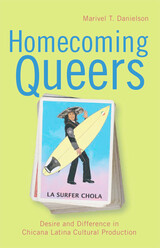 Homecoming Queers: Desire and Difference in Chicana Latina Cultural Production
Danielson, Marivel T
Rutgers University Press, 2009 Homecoming Queers provides a critical discussion of the multiple strategies used by queer Latina authors and artists in the United States to challenge silence and invisibility within mainstream media, literary canons, and theater spaces. Marivel T. Danielson's analysis reveals the extensive legacy of these cultural artists, including novelists, filmmakers, students and activists, comedians, performers, and playwrights. By clearly discussing the complexities and universalities of ethnic, racial, sexual, gender, and class intersections between queer Chicana and U.S. Latinas, Danielson explores the multiple ways identity shapes and shades creative expression. Weaknesses and gaps are revealed in the treatment of difference as a whole, within dominant and marginalized communities. Spanning multiple genres and forms, and including scholarly theory alongside performances, films, narratives, and testimonials, Homecoming Queers leads readers along a crucial path toward understanding and overcoming the silences that previously existed across these fields.
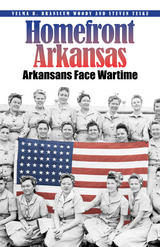 Homefront Arkansas: Arkansans Face Wartime Past and Present
Velma B. Branscum Woody
Butler Center for Arkansas Studies, 2009 For almost two hundred years, Arkansans have been part of America’s struggle to maintain democracy and keep the peace at home and around the globe. Homefront Arkansas: Arkansans Face Wartime Past and Present shows how war has affected those at home as well as those who served as soldiers. The chapters include: * A wounded Civil War soldier stumbles onto a homestead after a battle at Poison Springs, Arkansas, forever changing the family there * In 1875, Arkansans take sides in the Brooks-Baxter War, involving two men each claiming to be the governor of Arkansas * Arkansas volunteers follow Teddy Roosevelt into the Spanish-American War, and find troops crowded into a filthy camp as they wait to be shipped out * An African American girl leaves her native state to escape persecution, only to find that a world war is threatening to envelop her new home in England Woody’s stories provide a factual and compelling backdrop for Arkansas’s history as seen through its conflicts. Fascinated readers will follow the chronology of Arkansans who met the nation’s call both at home and abroad.
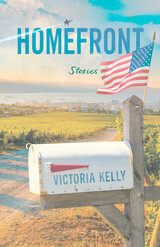 Homefront: Stories
Victoria Kelly
University of Nevada Press, 2024 Winner of the 2025 Eric Hoffer Book Award for Best Academic Press!
Foreword INDIES 2024 Silver Winner for War & Military (Adult Fiction)!
Inspired by Victoria Kelly’s experiences as the wife of a fighter pilot during three wartime deployments, this collection follows women whose lives have been impacted by war and military service as they struggle with their fragile ideas of home.
In “Prayers of an American Wife,” a Navy wife grapples with loneliness when she discovers that her neighbor, also a Navy wife, is having an affair while their husbands are deployed on the same aircraft carrier. Tensions rise in “The Strangers of Dubai” as a soldier on leave tries to buy his wife a souvenir from an Afghan vendor. After attending eight funerals with fellow military wives whose husbands died in the Iraq war, the protagonist in “Finding the Good Light” divorces her Navy husband and tries to start a new life as a movie star. These, along with the eleven other stories in this collection, explore the emotional landscape of the resilient women who remain on the homefront.
Kelly’s stories offer readers an intimate, eye-opening look into the sacrifices and steadfastness of military family members.
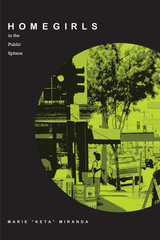 Homegirls in the Public Sphere
By Marie "Keta" Miranda
University of Texas Press, 2003 Girls in gangs are usually treated as objects of public criticism and rejection. Seldom are they viewed as objects worthy of understanding and even more rarely are they allowed to be active subjects who craft their own public persona—which is what makes this work unique. In this book, Marie "Keta" Miranda presents the results of an ethnographic collaboration with Chicana gang members, in which they contest popular and academic representations of Chicana/o youth and also construct their own narratives of self identity through a documentary film, It's a Homie Thang! In telling the story of her research in the Fruitvale community of Oakland, California, Miranda honestly reveals how even a sympathetic ethnographer from the same ethnic group can objectify the subjects of her study. She recounts how her project evolved into a study of representation and its effects in the public sphere as the young women spoke out about how public images of their lives rarely come close to the reality. As Miranda describes how she listened to the gang members and collaborated in the production of their documentary, she sheds new light on the politics of representation and ethnography, on how inner city adolescent Chicanas present themselves to various publics, and on how Chicana gangs actually function.
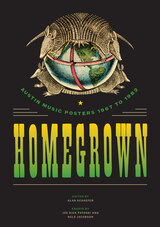 Homegrown: Austin Music Posters 1967 to 1982
Edited by Alan Schaefer with essays by Joe Nick Patoski and Nels Jacobson
University of Texas Press, 2015 Before Austin became the “live music capital of the world” and attracted tens of thousands of music fans, it had a vibrant local music scene that spanned late sixties psychedelic and avant-garde rock to early eighties punk. Venues such as the Vulcan Gas Company and the Armadillo World Headquarters hosted both innovative local musicians and big-name touring acts. Poster artists not only advertised the performances—they visually defined the music and culture of Austin during this pivotal period. Their posters promoted an alternative lifestyle that permeated the city and reflected Austin’s transformation from a sleepy university town into a veritable oasis of underground artistic and cultural activity in the state of Texas. This book presents a definitive survey of music poster art produced in Austin between 1967 and 1982. It vividly illustrates four distinct generations of posters—psychedelic art of the Vulcan Gas Company, early works from the Armadillo World Headquarters, an emerging variety of styles from the mid-1970s, and the radical visual aesthetic of punk—produced by such renowned artists as Gilbert Shelton, Jim Franklin, Kerry Awn, Micael Priest, Guy Juke, Ken Featherston, NOXX, and Danny Garrett. Setting the posters in context, Texas music and pop-culture authority Joe Nick Patoski details the history of music posters in Austin, and artist and poster art scholar Nels Jacobson explores the lives and techniques of the artists.
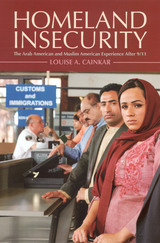 Homeland Insecurity: The Arab American and Muslim American Experience After 9/11
Louis A. Cainkar
Russell Sage Foundation, 2009 In the aftermath of 9/11, many Arab and Muslim Americans came under intense scrutiny by federal and local authorities, as well as their own neighbors, on the chance that they might know, support, or actually be terrorists. As Louise Cainkar observes, even U.S.-born Arabs and Muslims were portrayed as outsiders, an image that was amplified in the months after the attacks. She argues that 9/11 did not create anti-Arab and anti-Muslim suspicion; rather, their socially constructed images and social and political exclusion long before these attacks created an environment in which misunderstanding and hostility could thrive and the government could defend its use of profiling. Combining analysis and ethnography, Homeland Insecurity provides an intimate view of what it means to be an Arab or a Muslim in a country set on edge by the worst terrorist attack in its history. Focusing on the metropolitan Chicago area, Cainkar conducted more than a hundred research interviews and five in-depth oral histories. In this, the most comprehensive ethnographic study of the post-9/11 period for American Arabs and Muslims, native-born and immigrant Palestinians, Egyptians, Lebanese, Iraqis, Yemenis, Sudanese, Jordanians, and others speak candidly about their lives as well as their experiences with government, public mistrust, discrimination, and harassment after 9/11. The book reveals that Arab Muslims were more likely to be attacked in certain spatial contexts than others and that Muslim women wearing the hijab were more vulnerable to assault than men, as their head scarves were interpreted by some as a rejection of American culture. Even as the 9/11 Commission never found any evidence that members of Arab- or Muslim-American communities were involved in the attacks, respondents discuss their feelings of insecurity—a heightened sense of physical vulnerability and exclusion from the guarantees of citizenship afforded other Americans. Yet the vast majority of those interviewed for Homeland Insecurity report feeling optimistic about the future of Arab and Muslim life in the United States. Most of the respondents talked about their increased interest in the teachings of Islam, whether to counter anti-Muslim slurs or to better educate themselves. Governmental and popular hostility proved to be a springboard for heightened social and civic engagement. Immigrant organizations, religious leaders, civil rights advocates, community organizers, and others defended Arabs and Muslims and built networks with their organizations. Local roundtables between Arab and Muslim leaders, law enforcement, and homeland security agencies developed better understanding of Arab and Muslim communities. These post-9/11 changes have given way to stronger ties and greater inclusion in American social and political life. Will the United States extend its values of freedom and inclusion beyond the politics of "us" and "them" stirred up after 9/11? The answer is still not clear. Homeland Insecurity is keenly observed and adds Arab and Muslim American voices to this still-unfolding period in American history.
 Homeland Maternity: US Security Culture and the New Reproductive Regime
Natalie Fixmer-Oraiz
University of Illinois Press, 2019 In US security culture, motherhood is a site of intense contestation--both a powerful form of cultural currency and a target of unprecedented assault. Linked by an atmosphere of crisis and perceived vulnerability, motherhood and nation have become intimately entwined, dangerously positioning national security as reliant on the control of women's bodies. Drawing on feminist scholarship and critical studies of security culture, Natalie Fixmer-Oraiz explores homeland maternity by calling our attention to the ways that authorities see both non-reproductive and "overly" reproductive women's bodies as threats to social norms--and thus to security. Homeland maternity culture intensifies motherhood's requirements and works to discipline those who refuse to adhere. Analyzing the opt-out revolution, public debates over emergency contraception, and other controversies, Fixmer-Oraiz compellingly demonstrates how policing maternal bodies serves the political function of securing the nation in a time of supposed danger--with profound and troubling implications for women's lives and agency.
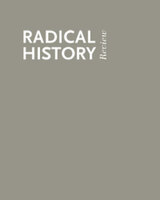 Homeland Securities, Volume 2005
Kavita Philip, Eliza Jane Reilly and David Serlin
Duke University Press Homeland Securities, a special issue of Radical History Review, addresses the complex challenge for radical scholars and activists presented by the shift in U.S. domestic and international agendas in the wake of September 11 and the accompanying rhetorics of national defense, the war on terrorism, and the declaration of “homeland security.” While the agencies and policies grouped under the rubric of homeland security ostensibly address the safety of the United States and its citizens, the implications of homeland security reach far beyond the borders of the United States and raise questions about transnational mobility, imperialism, nation, and citizenship. The contributors to this special issue offer critical perspectives on the many fronts of the global “war on terror” and reveal continuities and discontinuities within familiar strategies of political control, racial discrimination, and state-sanctioned violence. Featured articles explore such issues as the intersection of racism, homophobia, and imperialism at Abu Ghraib; the conundrum faced by economically disadvantaged Latino youth who find themselves doubly targeted by aggressive army recruitment and anti-immigration activity; and the ways that rhetoric and policies of homeland security have provided new legal tools in the ongoing project of defining “real Americans” through exclusion and state violence. Other essays examine the role of the military in civilian spaces, the right-wing assault on progressive historians and on area studies, librarians’ efforts to protect the privacy of their patrons’ records in light of the Patriot Act, and the role of intellectuals in resisting everyday forms of control and surveillance. Contributors. Barbara Abrash, Lori A. Allen, Jerry Atkin, Rachel Tzvia Back, Francisco E. Balderrama, Beatriz da Costa, Lara Z. Deeb, Eric Hiltner, Martha Howell, Lawrence Jones, Burçak Keskin-Kozat, R. J. Lambrose, Jorge Mariscal, Joseph Masco, Conor McGrady, Quincy T. Mills, Priscilla Murolo, Enrique C. Ochoa, Claire Pentecost, Kavita Philip, Vivian H. Price, Jasbir K. Puar, Eliza Jane Reilly, Natsu Taylor Saito, Ellen Schrecker, David Serlin, Rogers M. Smith, Marc Stein, Matias Viegener, Kath Weston, Maurice B. Wheeler, Jessica Winegar
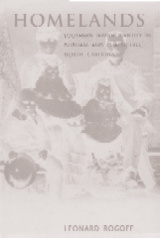 Homelands: Southern Jewish Identity in Durham-Chapel Hill and North Carolina
Leonard Rogoff
University of Alabama Press, 2001 Exploring how Southern Jews forged identity, community, and belonging in the evolving landscape of the New South.
Homelands is a case study of a unique ethnic group in North America—small-town southern Jews. Both Jews and southerners, Leonard Rogoff points out, have long struggled with questions of identity and whether to retain their differences or try to assimilate into the national culture. Rogoff shows how, as immigrant Jews became small-town southerners, they constantly renegotiated their identities and reinvented their histories.
The Durham-Chapel Hill Jewish community was formed during the 1880s and 1890s, when the South was recovering from the Reconstruction era and Jews were experiencing ever-growing immigration as well as challenging the religious traditionalism of the previous 4,000 years. Durham and Chapel Hill Jews, recent arrivals from the traditional societies of eastern Europe, assimilated and secularized as they lessened their differences with other Americans. Some Jews assimilated through intermarriage and conversion, but the trajectory of the community as a whole was toward retaining their religious and ethnic differences while attempting to integrate with their neighbors.
The Durham-Chapel Hill area is uniquely suited to the study of the southern Jewish experience, Rogoff maintains, because the region is exemplary of two major trends: the national population movement southward and the rise of Jews into the professions. The Jewish peddler and storekeeper of the 1880s and the doctor and professor of the 1990s, Rogoff says, are representative figures of both Jewish upward mobility and southern progress.
The Homeless
Christopher Jencks
Harvard University Press How widespread is homelessness, how did it happen, and what can be done about it? These are the questions explored by Christopher Jencks, America’s foremost analyst of social problems. Jencks examines the standard explanations and finds that the deinstitutionalization of the mentally ill, the invention of crack cocaine, rising joblessness among men, declining marriage rates, cuts in welfare benefits, and the destruction of skid row have all played a role. Changes in the housing market have had less impact than many claim, however, and real federal housing subsidies actually doubled during the 1980s. Not confining his mission to studying the homeless, Jencks proposes several practical approaches to helping the homeless.
 Homeless Come Home: An Advocate, the Riverbank, and Murder in Topeka, Kansas
Benedict Giamo
University of Notre Dame Press, 2011
Benedict Giamo has published widely on the condition of historical and contemporary homelessness in America. In Homeless Come Home: An Advocate, the Riverbank, and Murder in Topeka, Kansas, Giamo offers a deeply sympathetic yet critical look at the life of homeless advocate David Owen, who was tortured and killed in 2006 by some of those he intended to help. Part chronicle, part social analysis, part investigative journalism, and part true-crime book, Homeless Come Home examines why and how David Owen contributed to his own gruesome death.
David Owen defined his single-minded mission of touch Christian love, which he called "Homeless Come Home," in terms of his belief that all homeless persons could and should be reunited with their families. He demanded that the homeless reenter society via telephone cards, cell phones, and their parents' front doors. Owen, who himself was disabled and had a history of legal and mental problems, would not take no for an answer. Many with whom he came in contact--pastors, social workers, legislators, police--feared that his fanatical dedication and aggressive approach ultimately would be his downfall. After police discovered his corpse on the bank of the Kansas River, four homeless persons who had been living in a nearby tent camp were charged with his kidnapping and felony murder.
Giamo explores Owen's actions and motives, the homeless community in Topeka, the social services available to hem, and the separate trials of the co-defendants charged in his death. In doing so, he conveys the contention between social order and disorder and raises broader concerns regarding inequality, advocacy, and justice. The story is both fascinating and cautionary, a modern tragedy in which no one person can be identified as its cause.
Homeless Families: THE STRUGGLE FOR DIGNITY
Barry Jay Seltser and Donald E. Miller
University of Illinois Press, 1993 How do homeless people perceive their plight? Specifically, how does their situation affect their sense of personal dignity? In intensive interviews with one hundred adult heads of homeless families, Barry Seltser and Donald Miller ask these questions, previously not dealt with in the growing literature on homelessness. Homeless Families sensitizes readers, challenging them to consider their own moral and social responses to homeless people.
Homeless in Las Vegas: Stories from the Street
Kurt Borchard
University of Nevada Press, 2011 The homeless men and women represented in this book speak candidly about their plight, its origins, and the many obstacles to escaping it. They discuss the unique challenges and opportunities that Las Vegas’s focus on tourism, indulgence, and diversion offers its homeless residents. This compelling and emotionally charged ethnography counters many of the stereotypes of homeless men and women, revealing the remarkable diversity of their circumstances. It also offers their perspectives on social services and civic attitudes toward homelessness.
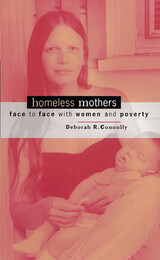 Homeless Mothers: Face to Face with Women and Poverty
Deborah R. Connolly
University of Minnesota Press, 2001 A first-person look at the challenges and cultural perceptions confronting homeless women.
Homeless Mothers follows the lives of mothers on the margins and asks where they fit in the increasingly black-and-white model of motherhood set up by society. Their voices, so rarely heard and so often ignored, resonate throughout this book. Both an anthropologist in the field and a social worker on the job, Deborah R. Connolly is ideally placed to draw out these women's life stories. Using their own words, by turns eloquent and awkward, poignant and harsh, she maps the perilous territory between the promise of childhood and the hard reality of motherhood on the street. What emerges is a glimpse of the cultural, class, gender, and economic challenges these women experience, a glimpse as real for us as the headlines and stereotypes that so often displace homeless mothers and consign them to silence.
"Connolly explores in rich detail the day-to-day experiences of women who use family shelters. Homeless Mothers is an insider's view on poverty and homelessness from the standpoint of mothers, families, and the social service providers who work with them. Connolly uses ethnographic methods and skills worthy of a good fiction writer to portray the daily lives, struggles, and intricate negotiations of homeless mothers." --Housing Studies
Deborah R. Connolly is an advocate for the homeless and a senior research associate at Edgewood Center for Children and Families in San Francisco. She recently taught cultural anthropology at the University of Missouri, Kansas City.
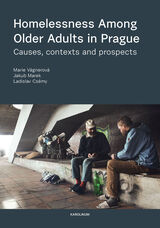 Homelessness among Older Adults in Prague: Causes, Contexts and Prospects
Marie Vágnerová, Ladislav Csémy, and Jakub Marek
Karolinum Press, 2020 Following their engaging study Homelessness among Young People in Prague, the authors of this book turn their attention to an older population facing the same issue, a very different situation since these older adults grew up under a communist regime where an obligation to work was enshrined in law and living on the street could result in a prison sentence. Based on three years of research, this book provides a slew of data-based statistical insights, analyzing the efficacy of relief provided by both the state and nonprofit organizations, detailing how the clients of such organizations rate their services, to what extent they accept assistance, and whether they believe it has helped them. More importantly, it features extensive interviews with real people, making it the first Czech book on this issue to present homelessness from the perspective of those who live with it every day.
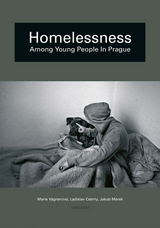 Homelessness among Young People in Prague
Marie Vágnerová, Ladislav Csémy, and Jakub Marek
Karolinum Press, 2014 The chronically homeless face a stark reality: lack of access to support systems, adequate shelter, and sustenance, with little hope for something better. For young people, however, life on the street may be merely a temporary stage in their lives. This book tells of homelessness among young people—the causes and their attitudes to the various problems they face.
Young homeless people describe a life in which they lose their privacy, the possibility to satisfy their basic needs, and, often, their self-respect in order to survive. The latter half of the book considers what happens when these young people return to society and how they navigate difficulties as they attempt to leave their past behind. Often, the struggle is not solely one of coping with the stigma of their experience; rather, they must face the legacies that linger long after their lives have turned a corner: drug addiction, criminal records, and accumulated debt.
Based on interviews with homeless people in Prague, Homelessness as an Alternative Existence of Young People paints an authentic picture of this social group and documents the often unseen social consequences of the transformation to capitalism from communism.
 Homelessness, Housing, and Mental Illness
Russell K. Schutt
Harvard University Press, 2011 Humans are social animals and, in general, don’t thrive in isolated environments. Homeless people, many of whom suffer from serious mental illnesses, often live socially isolated on the streets or in shelters. Homelessness, Housing, and Mental Illness describes a carefully designed large-scale study to assess how well these people do when attempts are made to reduce their social isolation and integrate them into the community.
Should homeless mentally ill people be provided with the type of housing they want or with what clinicians think they need? Is residential staff necessary? Are roommates advantageous? How is community integration affected by substance abuse, psychiatric diagnoses, and cognitive functioning? Homelessness, Housing, and Mental Illness answers these questions and reexamines the assumptions behind housing policies that support the preference of most homeless mentally ill people to live alone in independent apartments. The analysis shows that living alone reduces housing retention as well as cognitive functioning, while group homes improve these critical outcomes. Throughout the book, Russell Schutt explores the meaning and value of community for our most fragile citizens.
 Homemade: Finnish Rye, Feed Sack Fashion, and Other Simple Ingredients from My Life in Food
Beatrice Ojakangas
University of Minnesota Press, 2018 Beatrice Ojakangas, the oldest of ten children, came by it naturally—the cooking but also the pluck and perseverance that she's served up with her renowned Scandinavian dishes over the years. In the wake of the Moose Lake fires and famine of 1918, Ojakangas tells us in this delightful memoir-cum-cookbook, her grandfather sent for a Finnish mail-order bride—and got one who’d trained as a chef. Ojakangas’s stories, are, unsurprisingly, steeped in food lore: tales of cardamom and rye, baking salt cake at the age of five on a wood-burning stove, growing up on venison, making egg rolls for Chun King, and sending off a Pillsbury Bake Off–winning recipe without ever making it. And from here, how those early roots flourished through hard work and dedication to a successful (but never easy) career in food writing and a much wider world, from working for pizza roll king Jeno Paulucci to researching food traditions in Finland and appearing with Julia Child and Martha Stewart—all without ever leaving behind the lessons learned on the farm. As she says, “first you have to start with good ingredients and a good idea.” Chock-full of recipes, anecdotes, and a kind humor that bring to vivid life the Finnish culture of northern Minnesota as well as the wider culinary world, Homemade delivers the savory and the sweet in equal measures and casts a warm light on a rich slice of the country’s cooking heritage.
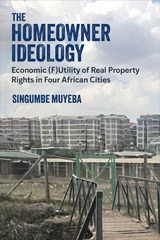 The Homeowner Ideology: Economic (F)Utility of Real Property Rights in Four African Cities
Singumbe Muyeba
University of Michigan Press, 2025 While homeownership has clear benefits among the impoverished, The Homeowner Ideology shows that the utility of real property rights as an economic resource are severely limited in sub-Saharan African cities. Although global poverty has declined since 1990, it remains widespread in Subsahara, the region with the highest proportion of the global population living in slums. Mainstream thinking in development studies is dominated by market fundamentalist neoclassical economics and the premise that ownership reduces poverty. Singumbe Muyeba contends that this neoliberal premise is flawed and unsupported by data within the African context. Muyeba argues that property rights function as structured idle capital on the formal market in African cities and the persistence of homeownership as the intervention of choice is explained by the influence of neoliberal ideology, intergenerational transfer of homeownership culture within the family, and the state’s deliberate and active support for homeownership tenure.
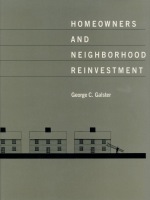 Homeowners and Neighborhood Reinvestment
George C. Galster
Duke University Press, 1987 This book investigates the efforts of homeowners to maintain and improve their dwellings. Their behavior, it has found, depends on economic variables as well as the sociological structure of their neighborhoods. Residential satisfaction, expectations of the neighborhood, and mobility plans were taken into account. Multivariate statistical analyses of models were conducted using household data from Minneapolis and Wooster, Ohio. Three important findings emerged. First, homeowners' sense of solidarity with their neighbors is as significant in determining their efforts at home upkeep as are their income or age. Second, the optimism of homeowners toward increases in property values results in behavior opposite to that produced by optimism about neighborhood quality of life. This implies that different kinds of predictable gaming behavior occur among homeowners, depending on the neighborhoods in which they live. Third, both short-term and extremely long-term plans to move prove damaging to home upkeep. The results of this study form the basis for a better understanding of such residential phenomena as class succession, racial transition, and gentrification. Galster's findings will also be valuable for analyzing policies that attempt to encourage neighborhood reinvestment.
Homer and the Nibelungenlied: Comparative Studies in Epic Style
Bernard Fenik
Harvard University Press, 1986 Bernard Fenik analyzes the style of the Iliad and the Nibelungenlied, showing how the narratives work. In the process he sheds new light on the artistry of ancient and medieval epics. This in turn touches on the long-debated question of whether and to what extent they were orally composed.
In the Homeric poems, medieval German epics, and the Chanson de Roland, Fenik finds similarities in the shaping of episodes and scenes. His analysis of narrative structures reveals controlled composition even where the language is heavily formulaic and the action highly stylized. This level of artistic control does not in itself rule out oral composition but does force a redefinition of the terms in which that theory is applied.
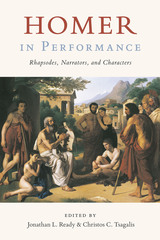 Homer in Performance: Rhapsodes, Narrators, and Characters
Edited by Jonathan L. Ready and Christos C. Tsagalis
University of Texas Press, 2018 Before they were written down, the poems attributed to Homer were performed orally, usually by rhapsodes (singers/reciters) who might have traveled from city to city or enjoyed a position in a wealthy household. Even after the Iliad and the Odyssey were committed to writing, rhapsodes performed the poems at festivals, often competing against each other. As they recited the epics, the rhapsodes spoke as both the narrator and the characters. These different acts—performing the poem and narrating and speaking in character within it—are seldom studied in tandem. Homer in Performance breaks new ground by bringing together all of the speakers involved in the performance of Homeric poetry: rhapsodes, narrators, and characters. The first part of the book presents a detailed history of the rhapsodic performance of Homeric epic from the Archaic to the Roman Imperial periods and explores how performers might have shaped the poems. The second part investigates the Homeric narrators and characters as speakers and illuminates their interactions. The contributors include scholars versed in epigraphy, the history of art, linguistics, and performance studies, as well as those capable of working with sources from the ancient Near East and from modern Russia. This interdisciplinary approach makes the volume useful to a spectrum of readers, from undergraduates to veteran professors, in disciplines ranging from classical studies to folklore.
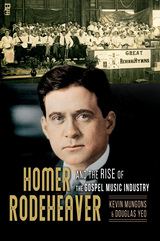 Homer Rodeheaver and the Rise of the Gospel Music Industry
Kevin Mungons and Douglas Yeo
University of Illinois Press, 2021 From tent revivals to radio and records with a gospel music innovator Homer Rodeheaver merged evangelical hymns and African American spirituals with popular music to create a potent gospel style. Kevin Mungons and Douglas Yeo examine his enormous influence on gospel music against the backdrop of Christian music history and Rodeheaver's impact as a cultural and business figure. Rodeheaver rose to fame as the trombone-playing song leader for evangelist Billy Sunday. As revivalism declined after World War I, Rodeheaver leveraged his place in America's newborn celebrity culture to start the first gospel record label and launch a nationwide radio program. His groundbreaking combination of hymnal publishing and recording technology helped define the early Christian music industry. In his later years, he influenced figures like Billy Graham and witnessed the music's split into southern gospel and black gospel. Clear-eyed and revealing, Homer Rodeheaver and the Rise of the Gospel Music Industry is an overdue consideration of a pioneering figure in American music.
Homer the Classic
Gregory Nagy
Harvard University Press, 2009 Homer the Classic is about the reception of Homeric poetry from the fifth through the first century BCE. The study of this reception is important for understanding not only the all-pervasive literary influence of ancient Greek epic traditions but also the various ways in which these traditions were used by individuals and states to promote their own cultural and political agenda. The aim of this book, which centers on ancient concepts of Homer as the author of a body of poetry that we know as the Iliad and the Odyssey, is not to reassess the oral poetic heritage of Homeric poetry but to show how it became a classic in the days of the Athenian empire and later.
This volume is one of two books stemming from six Sather Classical Lectures given in the spring semester of 2002 at the University of California at Berkeley while the author was teaching there as the Sather Professor.
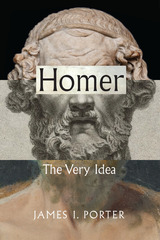 Homer: The Very Idea
James I. Porter
University of Chicago Press, 2021 The story of our ongoing fascination with Homer, the man and the myth.
Homer, the great poet of the Iliad and the Odyssey, is revered as a cultural icon of antiquity and a figure of lasting influence. But his identity is shrouded in questions about who he was, when he lived, and whether he was an actual person, a myth, or merely a shared idea. Rather than attempting to solve the mystery of this character, James I. Porter explores the sources of Homer’s mystique and their impact since the first recorded mentions of Homer in ancient Greece.
Homer: The Very Idea considers Homer not as a man, but as a cultural invention nearly as distinctive and important as the poems attributed to him, following the cultural history of an idea and of the obsession that is reborn every time Homer is imagined. Offering novel readings of texts and objects, the book follows the very idea of Homer from his earliest mentions to his most recent imaginings in literature, criticism, philosophy, visual art, and classical archaeology.
Homer, Troy and the Turks: Heritage and Identity in the Late Ottoman Empire, 1870-1915
Günay Uslu
Amsterdam University Press, 2017 Homer's stories of Troy are part of the foundations of Western culture. What's less well known is that they also inspired Ottoman-Turkish cultural traditions. Yet even with all the historical and archaeological research into Homer and Troy, most scholars today rely heavily on Western sources, giving Ottoman work in the field short shrift. This book helps right that balance, exploring Ottoman-Turkish involvement and interest in the subject between 1870, when Heinrich Schliemann began his excavations in search of Troy on Ottoman soil, and the battle of Gallipoli in 1915, which gave the Turks their own version of the heroic epic of Troy.
Homeric Conversation
Deborah Beck
Harvard University Press, 2005 Homeric Conversation is the first full-length study of conversation in the Homeric poems. Deborah Beck argues that conversation should be considered a traditional Homeric type scene, alongside recognized types such as arrival, sacrifice, battle, and hospitality. Drawing on both linguistics and previous work on type scenes and oral aesthetics, the book describes the typical conversational patterns that characterize a range of situations, including one-on-one conversation, formal assemblies, battlefield encounters, and laments. Departures from these typical patterns for conversation provide the basis for a wide-ranging, closely argued aesthetic analysis of repetition and variation in the Homeric epics.
 Homeric Durability: Telling Time in the Iliad
Lorenzo F. Garcia Jr.
Harvard University Press, 2013 The Iliad defines its poetic goal as preserving the kleos aphthiton, “fame unwithered,” (IX.413) of its hero, Achilles. But how are we to understand the status of the “unwithered” in the Iliad?
In Homeric Durability, Lorenzo F. Garcia, Jr., investigates the concept of time and temporality in Homeric epic by studying the semantics of “durability” and “decay”: namely, the ability of an entity to withstand the effects of time, and its eventual disintegration. Such objects—the ships of the Achaeans, the bodies of the dead, the walls of the Greeks and Trojans, and the tombs of the dead—all exist within time and possess a demonstrable “durability.” Even the gods themselves are temporal beings. Through a framework informed by phenomenology, psychology, and psychopathology, Garcia examines the temporal experience of Homer’s gods and argues that in moments of pain, sorrow, and shame, Homeric gods come to experience human temporality. If the gods themselves are defined by human temporal experience, Garcia argues, the epic tradition cannot but imagine its own temporal durability as limited: hence, one should understand kleos aphthiton as fame which has not yet decayed, rather than fame which will not decay.
 Homeric Hymns. Epic Cycle. Homerica
Hesiod
Harvard University Press, 1982 Hesiod (Hesiodus), an epic poet apparently of the eighth century BC, was born in Asia Minor but moved to Boeotia in central Greece. He was regarded by later Greeks as a contemporary of Homer.
Three works survive under Hesiod's name: (1) "Works and Days," addressed to his brother. In it he gives us the allegories of the two Strifes, and the myth of Pandora; stresses that every man must work; describes the accepted Five Ages of the world; delivers moral advice; surveys in splendid style a year's work on a farm; gives precepts on navigation; and propounds lucky and unlucky days. (2) "Theogony," a religious work about the rise of the gods and the universe from Chaos to the triumph of Zeus, and about the progeny of Zeus and of goddesses in union with mortal men. (3) "The Shield" (not by Hesiod), an extract from a "Catalogue of Women," the subject being Alcmena and her son Heracles and his contest with Cycnus, with a description of Heracles' shield. All three works are of great literary interest.
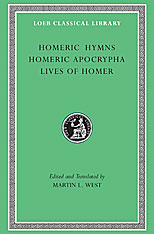 Homeric Hymns. Homeric Apocrypha. Lives of Homer
Martin L. West
Harvard University Press, 2003 Invocations, curiosities, and biographies connected with the famous Greek bard.
Performances of Greek epics customarily began with a hymn to a god or goddess—as Hesiod's Theogony and Works and Days do. A collection of thirty-three such poems has come down to us from antiquity under the title “Hymns of Homer.” This Loeb Classical Library volume contains, in addition to the Hymns, fragments of five comic poems that were connected with Homer’s name in or just after the Classical period (but are not today believed to be by the author of the Iliad and the Odyssey). Here too is a collection of ancient accounts of the poet’s life.
The Hymns range widely in length: two are over 500 lines long; several run only a half dozen lines. Among the longest are the hymn to Demeter, which tells the foundational story of the Eleusinian Mysteries; and to Hermes, distinctive in being amusing. The comic poems gathered as Homeric Apocrypha include Margites, the Battle of Frogs and Mice, and, for the first time in English, a fragment of a perhaps earlier poem of the same type called Battle of the Weasel and the Mice. The edition of Lives of Homer contains The Contest of Homer and Hesiod and nine other biographical accounts, translated into English for the first time.
Martin West’s faithful and pleasing translations are fully annotated; his freshly edited texts offer new solutions to a number of textual puzzles.
 Homeric Imagery and the Natural Environment
William Brockliss
Harvard University Press, 2019 Responding to George Lakoff’s and Mark Johnson’s analysis of metaphor, William Brockliss explores the Homeric poets’ use of concrete concepts drawn from the Greek natural environment to aid their audiences’ understanding of abstract concepts. In particular, he considers Homeric images that associate flowers with the concepts of deception, disorder, and death, and examines the ways in which the poets engage with natural phenomena such as the brief, diverse blooms of the Greek spring.
Taken together, such Homeric images present a more pessimistic depiction of the human condition than we find in the vegetal imagery of other archaic Greek genres. While lyric poets drew on floral imagery to emphasize the beauty of the beloved, the Homeric poets used images of flowers to explore the potentially deceptive qualities of bodies adorned for seduction. Where the Hesiodic poets employed vegetal images to depict the stable structure of the cosmos, the Homeric poets set arboreal imagery of good order against floral images suggestive of challenges or changes to orderliness. And while the elegiac poets celebrated the brief “flower of youth,” the Homeric poets created floral images reminiscent of Hesiodic monsters, and thereby helped audiences to imagine the monstrous otherness of death.
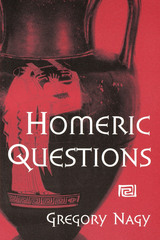 Homeric Questions
By Gregory Nagy
University of Texas Press, 1996 A Choice Outstanding Academic Book The "Homeric Question" has vexed Classicists for generations. Was the author of the Iliad and the Odyssey a single individual who created the poems at a particular moment in history? Or does the name "Homer" hide the shaping influence of the epic tradition during a long period of oral composition and transmission? In this innovative investigation, Gregory Nagy applies the insights of comparative linguistics and anthropology to offer a new historical model for understanding how, when, where, and why the Iliad and the Odyssey were ultimately preserved as written texts that could be handed down over two millennia. His model draws on the comparative evidence provided by living oral epic traditions, in which each performance of a song often involves a recomposition of the narrative. This evidence suggests that the written texts emerged from an evolutionary process in which composition, performance, and diffusion interacted to create the epics we know as the Iliad and the Odyssey. Sure to challenge orthodox views and provoke lively debate, Nagy's book will be essential reading for all students of oral traditions.
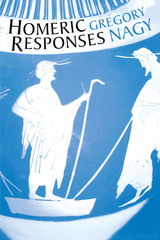 Homeric Responses
By Gregory Nagy
University of Texas Press, 2003 The Homeric Iliad and Odyssey are among the world's foremost epics. Yet, millennia after their composition, basic questions remain about them. Who was Homer—a real or an ideal poet? When were the poems composed—at a single point in time, or over centuries of composition and performance? And how were the poems committed to writing? These uncertainties have been known as The Homeric Question, and many scholars, including Gregory Nagy, have sought to solve it. In Homeric Responses, Nagy presents a series of essays that further elaborate his theories regarding the oral composition and evolution of the Homeric epics. Building on his previous work in Homeric Questions and Poetry as Performance: Homer and Beyond and responding to some of his critics, he examines such issues as the importance of performance and the interaction between audience and poet in shaping the poetry; the role of the rhapsode (the performer of the poems) in the composition and transmission of the poetry; the "irreversible mistakes" and cross-references in the Iliad and Odyssey as evidences of artistic creativity; and the Iliadic description of the shield of Achilles as a pointer to the world outside the poem, the polis of the audience.
 Homer's Odyssey
John H. Finley, Jr.
Harvard University Press, 1978 This is the long-awaited work on Homer's Odyssey by one of our foremost teachers and scholars of the classics--John H. Finley, Jr. Already, generations of students at Harvard have benefited from his knowledge and understanding of Homer's words and world. Now his thoughts on the Odyssey are woven together in this remarkable volume.
Finley begins by arguing the unity of design in the Odyssey, and shows the connection between the actions of three main characters: Telemachus' maturity brings Penelope to her long-delayed decision for remarriage, which, by producing the bow as marriage-test, gives the unknown Odysseus his means of success against the suitors.
Finley also suggests that the poem is a kind of half-divine comedy. About an older man's glad return, it contrasts to the Iliad's story of young man's death far from home. It is a comedy to the Iliad's tragedy and, like Shakespeare's Tempest, it brings the absent king to knowledge which, though initially unwelcome, proves his and others' happiness.
Throughout his book, Finley applies a lifetime's learning to a work that is universally recognized as one of the highest achievements of our civilization. At a time when Homer is in danger of being swallowed by specialists, it is important to recognize and uphold the poet's basic concern for life and myth and legend. Such sympathy combined with knowledge is Finley's fine achievement.
Homer's Text and Language
Gregory Nagy
University of Illinois Press, 2004 As Homer remains an indispensable figure in the canons of world literature, interpreting the Homeric text is a challenging and high stakes enterprise. There are untold numbers of variations, imitations, alternate translations, and adaptations of the Iliad and Odyssey, making it difficult to establish what, exactly, the epics were. Gregory Nagy's essays have one central aim: to show how the text and language of Homer derive from an oral poetic system.
In Homeric studies, there has been an ongoing debate centering on different ways to establish the text of Homer and the different ways to appreciate the poetry created in the language of Homer. Gregory Nagy, a lifelong Homer scholar, takes a stand in the midst of this debate. He presents an overview of millennia of scholarly engagement with Homer's poetry, shows the different editorial principles that have been applied to the texts, and evaluates their impact.
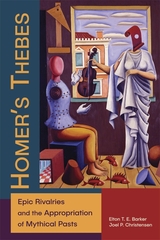 Homer’s Thebes: Epic Rivalries and the Appropriation of Mythical Pasts
Elton T. E. Barker and Joel P. Christensen
Harvard University Press, 2019 Homer’s Iliad and Odyssey are the only early Greek heroic epics to have survived the transition to writing, even though extant evidence indicates that they emerged from a thriving oral culture. Among the missing are the songs of Boeotian Thebes.
Homer’s Thebes examines moments in the Iliad and Odyssey where Theban characters and thematic engagements come to the fore. Rather than sifting through these appearances to reconstruct lost poems, Elton Barker and Joel Christensen argue that the Homeric poems borrow heroes from Thebes to address key ideas—about politics, time, and genre—that set out the unique superiority of these texts in performance. By using evidence from Hesiod and fragmentary sources attributed to Theban tradition, Barker and Christensen explore Homer’s appropriation of Theban motifs of strife and distribution to promote his tale of the sack of Troy and the returns home.
As Homer’s Thebes shows, this Theban material sheds light on the exceptionality of the Homeric epics through the notions of poetic rivalry and Panhellenism. Furthermore, by emphasizing a nonhierarchical model of “reading” the epics derived from oral-formulaic poetics, this book contributes to recent debates about allusion, neoanalysis, and intertextuality.
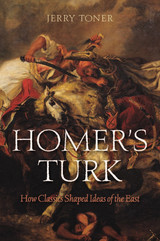 Homer's Turk: How Classics Shaped Ideas of the East
Jerry Toner
Harvard University Press, 2012 A seventeenth-century English traveler to the Eastern Mediterranean would have faced a problem in writing about this unfamiliar place: how to describe its inhabitants in a way his countrymen would understand? In an age when a European education meant mastering the Classical literature of Greece and Rome, he would naturally turn to touchstones like the Iliad to explain the exotic customs of Ottoman lands. His Turk would have been Homer’s Turk.
An account of epic sweep, spanning the Crusades, the Indian Raj, and the postwar decline of the British Empire, Homer’s Turk illuminates how English writers of all eras have relied on the Classics to help them understand the world once called “the Orient.” Ancient Greek and Roman authors, Jerry Toner shows, served as a conceptual frame of reference over long periods in which trade, religious missions, and imperial interests shaped English encounters with the East. Rivaling the Bible as a widespread, flexible vehicle of Western thought, the Classics provided a ready model for portrayal and understanding of the Oriental Other. Such image-making, Toner argues, persists today in some of the ways the West frames its relationship with the Islamic world and the rising powers of India and China.
Discussing examples that range from Jacobean travelogues to Hollywood blockbusters, Homer’s Turk proves that there is no permanent version of either the ancient past or the East in English writing—the two have been continually reinvented alongside each other.
Homer’s Versicolored Fabric: The Evocative Power of Ancient Greek Epic Word-Making
Anna Bonifazi
Harvard University Press Anna Bonifazi suggests that the Homeric text we have now would have enabled ancient audiences to enjoy the evocative power of even minimal linguistic elements. The multiple functions served by these elements are associated not only with the variety of narrative contexts in which they occur but also with overarching poetic strategies.
The findings relate to two strategies in particular: unfolding the narrative by signaling the upcoming content with αύ- adverbs and particles, and letting the complexity of Odysseus’s identity resonate through the ambiguous use of third-person pronouns. The words’ evocative power springs from the deliberate merging of distinct meanings, which prompts multifaceted interpretations. The text allows the incorporation of different viewpoints, just as an iridescent fabric allows the simultaneous perception of different colors.
H.O.M.E.S.
Amani Tolin
Michigan Publishing, 2023 This book was created as an assignment for the Winter 2022 course “Nature, Culture, and Landscape” taught by Dr. Sara Adlerstein-Gonzalez for the University of Michigan undergraduate department Program in the Environment and graduate department School for Environment and Sustainability. The purpose of this book was to engage children with the biodiversity of the Great Lakes – to raise environmental awareness and encourage children to care about protecting our planet.
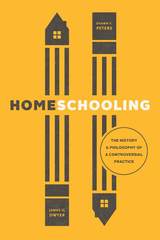 Homeschooling: The History and Philosophy of a Controversial Practice
James G. Dwyer and Shawn F. Peters
University of Chicago Press, 2019 In Homeschooling: The History and Philosophy of a Controversial Practice, James G. Dwyer and Shawn F. Peters examine homeschooling’s history, its methods, and the fundamental questions at the root of the heated debate over whether and how the state should oversee and regulate it. The authors trace the evolution of homeschooling and the law relating to it from before America’s founding to the present day. In the process they analyze the many arguments made for and against it, and set them in the context of larger questions about school and education. They then tackle the question of regulation, and they do so within a rigorous moral framework, one that is constructed from a clear-eyed assessment of what rights and duties children, parents, and the state each possess. Viewing the question through that lens allows Dwyer and Peters to even-handedly evaluate the competing arguments and ultimately generate policy prescriptions. Homeschooling is the definitive study of a vexed question, one that ultimately affects all citizens, regardless of their educational background.
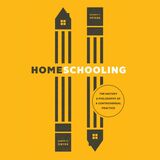 Homeschooling: The History and Philosophy of a Controversial Practice
James G. Dwyer and Shawn F. Peters
University of Chicago Press, 2019 This is an auto-narrated audiobook edition of this book. In Homeschooling: The History and Philosophy of a Controversial Practice, James G. Dwyer and Shawn F. Peters examine homeschooling’s history, its methods, and the fundamental questions at the root of the heated debate over whether and how the state should oversee and regulate it. The authors trace the evolution of homeschooling and the law relating to it from before America’s founding to the present day. In the process they analyze the many arguments made for and against it, and set them in the context of larger questions about school and education. They then tackle the question of regulation, and they do so within a rigorous moral framework, one that is constructed from a clear-eyed assessment of what rights and duties children, parents, and the state each possess. Viewing the question through that lens allows Dwyer and Peters to even-handedly evaluate the competing arguments and ultimately generate policy prescriptions. Homeschooling is the definitive study of a vexed question, one that ultimately affects all citizens, regardless of their educational background.
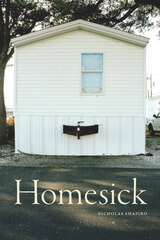 Homesick
Nicholas Shapiro
Duke University Press, 2025 Following Hurricane Katrina, the Federal Emergency Management Agency (FEMA) distributed over 120,000 trailers for emergency housing. Produced from engineered wood containing toxic amounts of formaldehyde, these shelters were vectors of illness and death. Although they were subsequently banned, FEMA trailers were resold and again used for housing, scattering their harm to other people and areas. In Homesick, Nicholas Shapiro draws on almost fifteen years working with impacted community members to trace how the story of toxic emergency housing units expands into a story of how all of our shelters became a seat of exposure and how we can collectively struggle for cleaner indoor air. Throughout, Shapiro questions the efficacy of the fundamental tools used to cultivate accountability, repair, and change, arguing for their reimagining. Detailing health effects as well as community and individual efforts to achieve better life, health, and justice, Shapiro highlights how homesickness for an otherwise future can herald meaningful change.
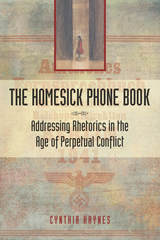 The Homesick Phone Book: Addressing Rhetorics in the Age of Perpetual Conflict
Cynthia Haynes
Southern Illinois University Press, 2016 Winner, RSA Book Award, 2017
Terrorist attacks, war, and mass shootings by individuals occur on a daily basis all over the world. In The Homesick Phone Book, author Cynthia Haynes examines the relationship of rhetoric to such atrocities. Aiming to disrupt conventional modes of rhetoric, logic, argument, and the teaching of writing, Haynes illuminates rhetoric’s ties to horrific acts of violence and the state of perpetual conflict around the world, both in the Holocaust era and more recently.
Each chapter, marked by a physical address, functions as a kind of expanded phone book entry, with a discussion of violent events at a particular location giving way to explorations of larger questions related to rhetoric and violence. At the core of the work is Haynes’s call for a writing pedagogy based on abstraction that would allow students to appeal to emotional and ethical grounds in composing arguments. Written in a lyrical style, the book weaves rhetorical theories, poetics, philosophy, works of art, and personal experience into a complex, compelling, and innovative mode of writing.
Ultimately, The Homesick Phone Book demonstrates how scholars of rhetoric and writing studies can break their dependence on conventional argument and logic to discover what might be possible if we dive into and become lost within the very concepts and events that frighten and terrorize us.
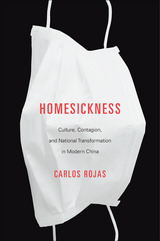 Homesickness: Culture, Contagion, and National Transformation in Modern China
Carlos Rojas
Harvard University Press, 2015 The collapse of China’s Qing dynasty coincided roughly with discoveries that helped revolutionize views of infectious disease. Together, these parallel developments generated a set of paradigm shifts in the understanding of society, the individual, as well as the cultural matrix that mediates between them. In Homesickness, Carlos Rojas examines an array of Chinese literary and cinematic tropes of illness, arguing that these works approach sickness not solely as a symptom of dysfunction but more importantly as a key to its potential solution.
Rojas focuses on a condition he calls “homesickness”—referring to a discomfort caused not by a longing for home but by an excessive proximity to it. The product of a dialectics of internal alienation and self-differentiation, this inverse homesickness marks a movement away from the “home,” conceived as spaces associated with the nation, the family, and the individual body. The result is a productive dynamism that gives rise to the possibility of long-term health. Without sickness, in other words, there could be no health.
Through a set of detailed analyses of works from China, Greater China, and the global Chinese diaspora—ranging from late-imperial figures such as Liu E and Zeng Pu to contemporary figures such as Yan Lianke and Tsai Ming-liang—Rojas asserts that the very possibility of health is predicated on this condition of homesickness.
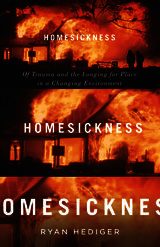 Homesickness: Of Trauma and the Longing for Place in a Changing Environment
Ryan Hediger
University of Minnesota Press, 2019 Introducing a posthumanist concept of nostalgia to analyze steadily widening themes of animality, home, travel, slavery, shopping, and war in U.S. literature after 1945 In the Anthropocene, as climate change renders environments less stable, the human desire for place underscores the weakness of the individual in the face of the world. In this book, Ryan Hediger introduces a distinctive notion of homesickness, one in which the longing for place demonstrates not only human vulnerability but also intersubjectivity beyond the human. Arguing that this feeling is unavoidable and characteristically posthumanist, Hediger studies the complex mix of attitudes toward home, the homely, and the familiar in an age of resurgent cosmopolitanism, especially eco-cosmopolitanism. Homesickness closely examines U.S. literature mostly after 1945, including prominent writers such as Annie Proulx, Marilynne Robinson, and Ernest Hemingway, in light of the challenges and themes of the Anthropocene. Hediger argues that our desire for home is shorthand for a set of important hopes worth defending—serious and genuine relationships to places and their biotic regimes and landforms; membership in vital cultures, human and nonhuman; resistance to capital-infused forms of globalization that flatten differences and turn life and place into mere resources. Our homesickness, according to Hediger, is inevitable because the self is necessarily constructed with reference to the material past. Therefore, homesickness is not something to dismiss as nostalgic or reactionary but is rather a structure of feeling to come to terms with and even to cultivate. Recasting an expansive range of fields through the lens of homesickness—from ecocriticism to animal studies and disability studies, (eco)philosophy to posthumanist theory—Homesickness speaks not only to the desire for a physical structure or place but also to a wide range of longings and dislocations, including those related to subjectivity, memory, bodies, literary form, and language.
The Homestead Strike of 1892
Arthur Burgoyne
University of Pittsburgh Press, 1979 In 1893 Arthur Burgoyne, one of Pittsburgh’s most skilled and sensitive journalists, published Homestead, a complete history of the 1892 Homestead strike and the ensuing conflict between the Carnegie Steel Company and the Amalgamated Association of Iron and Steel Workers. Accurate, readable, and judiciously balanced in assigning blame, this work gives crucial insight into a turbulent period in Pittsburgh’s history.
Homestead: The Households of a Mill Town
Margaret Byington
University of Pittsburgh Press, 1974 Homestead, first published in 1910 as one volume in the classic Pittsburgh Survey, describes daily life in a community that was dominated economically and physically by the giant Homestead Works of the United States Steel Corporation. Homestead, just across the Monongahela River from Pittsburgh, developed as a completely separate city -- a true mill town settled by newer immigrants and shaped in its attitudes by the infamous Homestead Strike of 1892.
Homestead: The Households of a Mill Town (2nd Edition)
Margaret Byington
University of Pittsburgh Press, 2022 First published in 1910 in the classic Pittsburgh Survey, this pioneering work of American social history, reproduced in its entirety, describes daily life in a community that was dominated economically and physically by the giant Homestead Works of the United States Steel Corporation. The town of Homestead, just across the Monongahela River from Pittsburgh, developed as a completely separate city—a true mill town settled by newer immigrants and shaped in its attitudes by the infamous Homestead Strike of 1892, which significantly set back unionization efforts in the steel industry. Homestead:The Households of a Mill Town not only focuses on the plight of the American steel worker in the late nineteenth and early twentieth century, it also explores the domestic and community aspects of life in that time period.
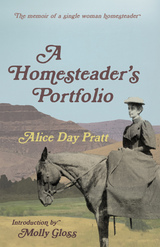 A Homesteader's Portfolio
Alice Day Pratt
Oregon State University Press, 1993 “So much is so skillfully crammed into this little book that the reader comes to admire Pratt’s zest while wondering how she could possibly have endured. . . . A splendid introduction by Molly Gloss, author of The Jump-Off Creek, enhances the book with a biography of the author and a study of her writings.” —Oregon Historical Quarterly In 1911 Alice Day Pratt, single and nearing forty, boarded a train and left the east coast to file claim on 160 acres of land in the Central Oregon high desert. She was one among tens of thousands of people who took up homesteads in the arid West in the early twentieth century. Perhaps as many as 20 percent of these settlers were single women. Yet homesteading women are largely missing from the literature and histories of the West. The commonly held image of frontier women as powerless and dependent helpmates stems in part from the scarcity of written accounts by homesteading women. Alice Day Pratt’s powerful memoir presents a rare, fascinating account of the life of a woman homesteader and chronicles her single-handed efforts to overcome the obstacles that faced all homesteaders—men and women—in the dryland West. Pratt’s independent and adventurous spirit allowed her to hang on to her “homesteading dream” for more than a decade after most other homesteaders had packed their belongings and left the desert. By exploring the life she lived and the choices she made, Pratt offers an important glimpse into the social and cultural history of the American West.
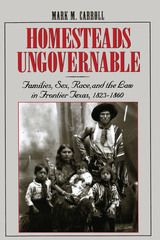 Homesteads Ungovernable: Families, Sex, Race, and the Law in Frontier Texas, 1823-1860
By Mark M. Carroll
University of Texas Press, 2001 When he settled in Mexican Texas in 1832 and began courting Anna Raguet, Sam Houston had been separated from his Tennessee wife Eliza Allen for three years, while having already married and divorced his Cherokee wife Tiana and at least two other Indian "wives" during the interval. Houston's political enemies derided these marital irregularities, but in fact Houston's legal and extralegal marriages hardly set him apart from many other Texas men at a time when illicit and unstable unions were common in the yet-to-be-formed Lone Star State. In this book, Mark Carroll draws on legal and social history to trace the evolution of sexual, family, and racial-caste relations in the most turbulent polity on the southern frontier during the antebellum period (1823-1860). He finds that the marriages of settlers in Texas were typically born of economic necessity and that, with few white women available, Anglo men frequently partnered with Native American, Tejano, and black women. While identifying a multicultural array of gender roles that combined with law and frontier disorder to destabilize the marriages of homesteaders, he also reveals how harsh living conditions, land policies, and property rules prompted settling spouses to cooperate for survival and mutual economic gain. Of equal importance, he reveals how evolving Texas law reinforced the substantial autonomy of Anglo women and provided them material rewards, even as it ensured that cross-racial sexual relationships and their reproductive consequences comported with slavery and a regime that dispossessed and subordinated free blacks, Native Americans, and Tejanos.
|
|
